The journey starts at Windhoek International Airport at 10:30 or 15:50. If your international flight arrives late in the afternoon, you need to spend a first night in Windhoek.
This trip combines the highlights of Namibia with very remote areas in a unique way. The first part of the journey is by plane, allowing you to experience the beautiful Namib Desert from the air.
Our guides will pick you up in Swakopmund and take you on an adventurous trip through the Koakoveld to the very north where the Kunene River forms the border with Angola. This tour is an unforgettable adventure in a deserted, fantastic landscape. The few people who live in this area and whom you will encounter on your way are the semi-nomadic Himbas. Otherwise, you are mostly alone in the endless expanses of the Kaokoveld, as selfdrivers and other travelers are extremely rare here. Tracks are hard to find and roads become very confusing. The exclusivity and seclusion of the Kaokoveld make this tour a unique experience!
The third part of the trip is self-drive and you visit Etosha on your own before returning to Windhoek.

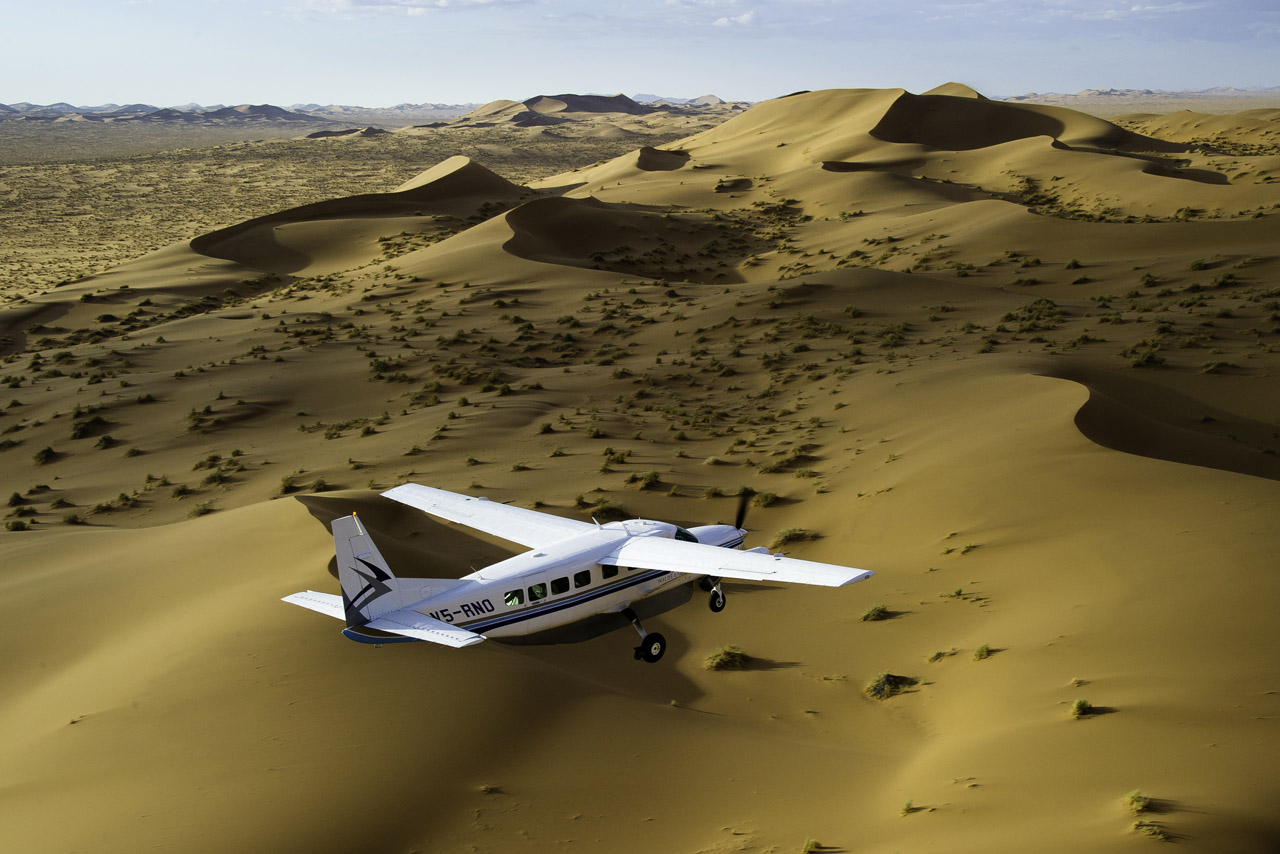

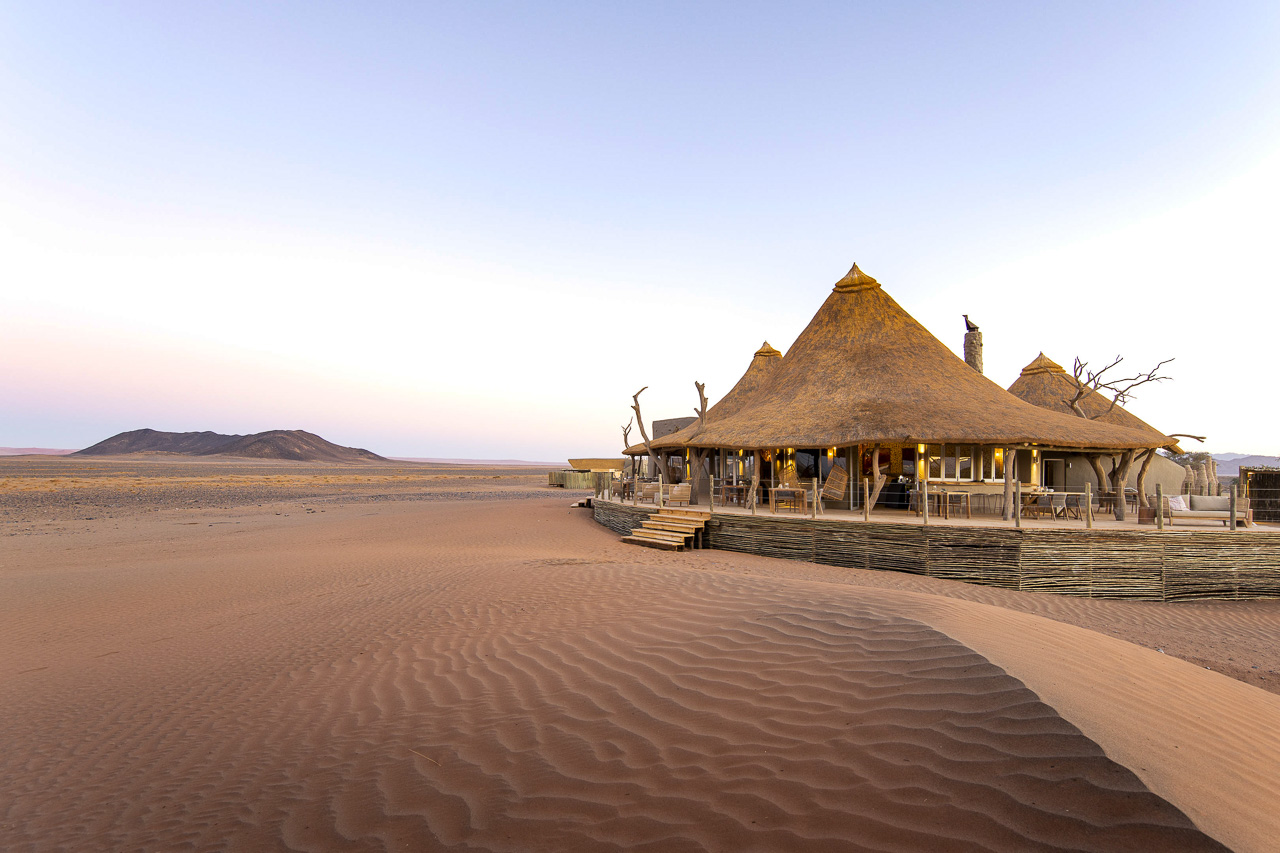
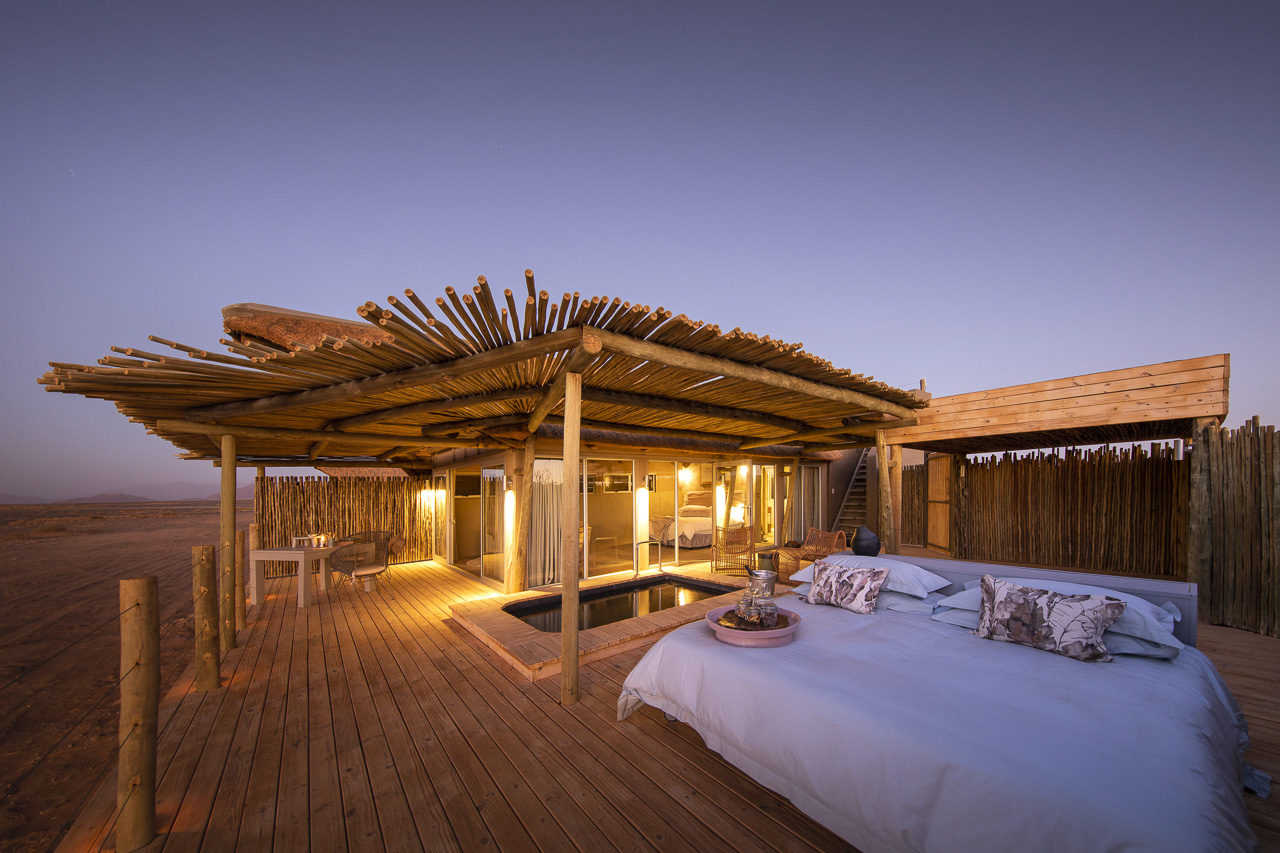
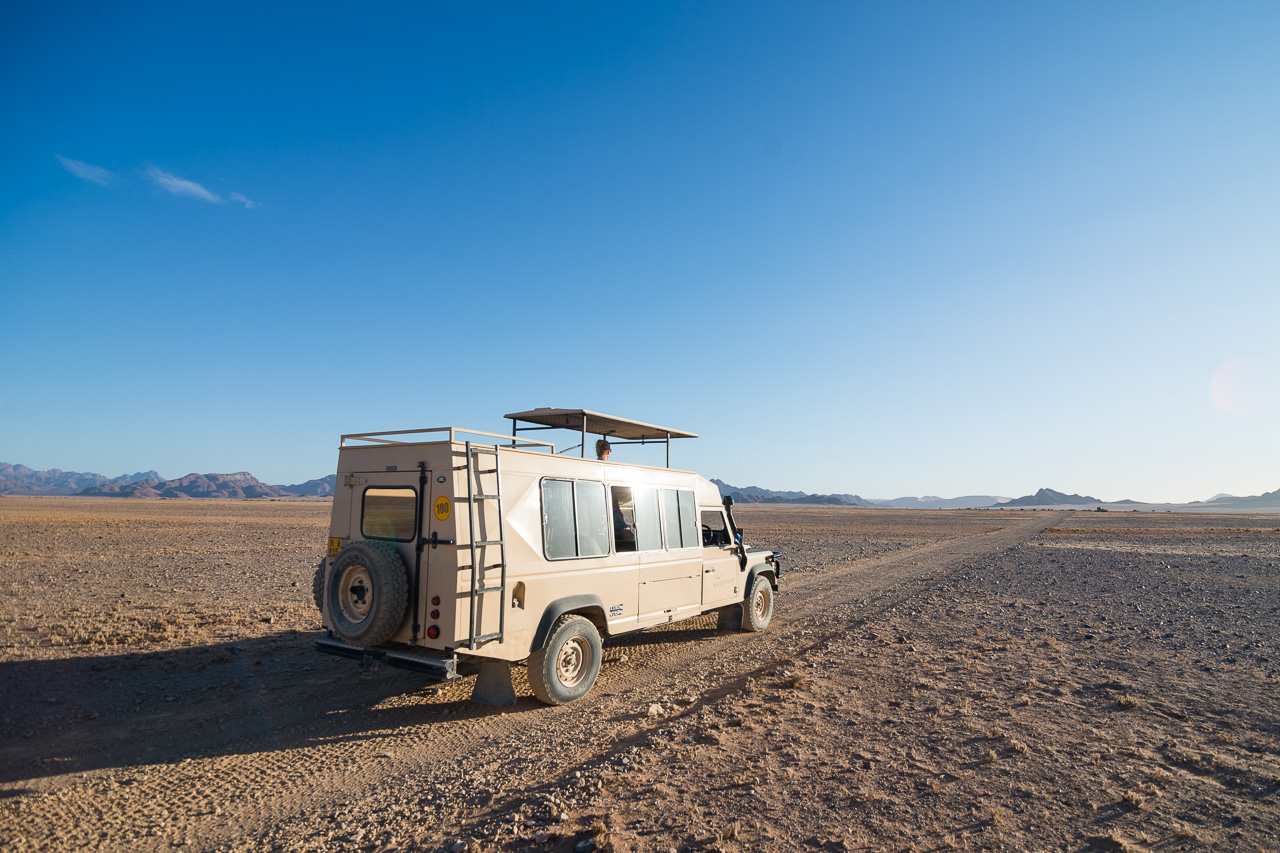
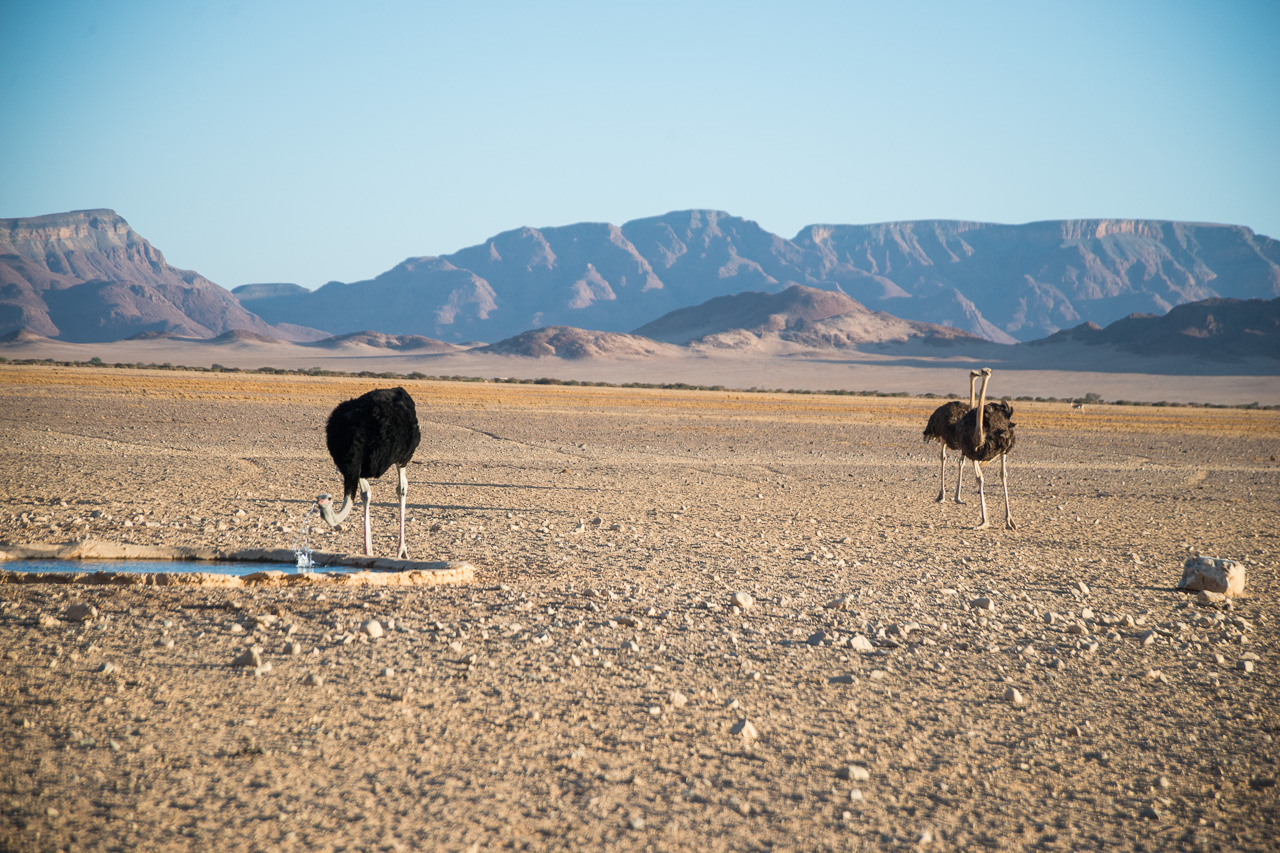
Accommodation
Little Kulala offers eleven climate-controlled rooms (it's very hot in the Namib region from November onwards!) with en-suite facilities, extra outdoor shower, private plunge pool, veranda with outdoor lounge, and a skybed where guests can spend a romantic night under the clear, starry sky.
The camp places great emphasis on natural materials, and the colours of the linen, cotton and mohair fabrics blend seamlessly into the natural surroundings. The Kulala Camps stand out for their fantastic location close to the Sossuvlei dunes and with exclusive access to the park.
Sossusvlei is the area most associated with Namibia: Red dunes as far as the eye can see (up to 380 m high, coloured red by the clay-rich sand) and dead trees in the Vleis or pans, decaying slowly at the will of the arid climate. The Vleis were created by the Tsauchab River, which probably once flowed to the Atlantic some 50 km away. The whole Sossusvlei region is quenched with water during those very rare years when a good amount of rain falls, prompting bushes and flowers to spring up everywhere.
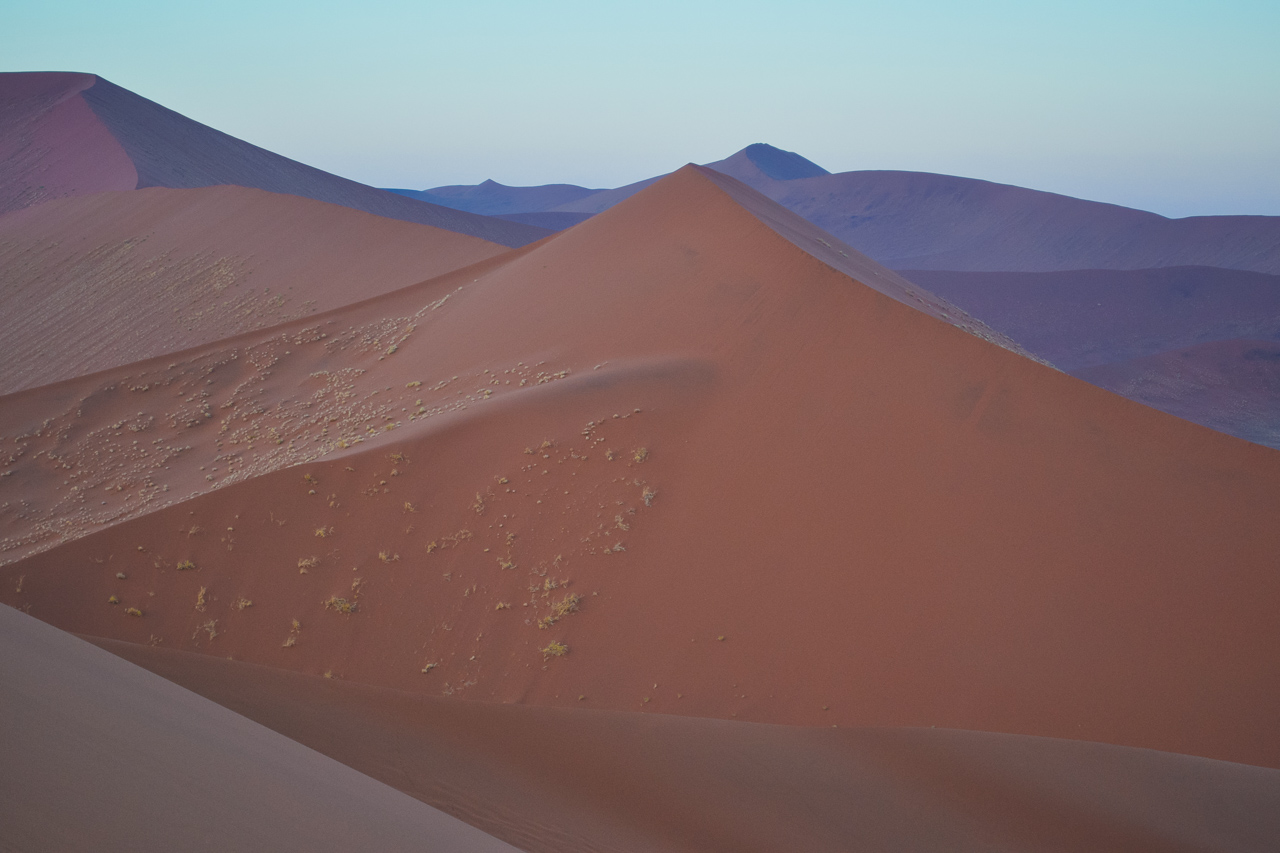
Sossusvlei is also the place most commonly associated with Namibia. Its red dunes stretch as far as the eye can see (up to 380 m high, coloured red by the clay-rich sand) and the desiccated trees in the vleis (salt and clay pans), which decay slowly due to the arid environment, are typical of the region. The vleis were created by the Tsauchab River, which most probably flowed into the Atlantic 50 km away. Very rarely, a torrential downpour will see the vleis disappear under water – a spectacle that very few get to see. .
The Namib itself is a product of the Orange River in the south, which carries the red sand of the Kalahari to the ocean. The Benguela Current takes the sand north, where the prevailing winds have blown it back inland over millions of years, forming the Namib Desert.
Sossusvlei is situated in the Namib Naukluft Park and thus subject to very strict regulations. The park opens its gates at sunrise and all visitors are required to leave again by sunset. The distance between the park entrance and the Sossusvlei car park, however, is a good 60 km, most of which is tarred. From here it’s only possible to reach the second car park, right next to the Sossusvlei, in a 4x4, on foot or using the shuttle service. There are also other vleis in the area in addition to the Sossusvlei, including Dead Vlei, with its famous dead trees, and somewhat further away, the so-called Hidden Vlei, which requires a good trek to get to.
The most famous dunes are Dune 45 (170 m high), which is located 45 km from the entrance to Sossusvlei, and then Big Daddy, the largest dune, and his partner, Big Mama. Visitors are of course allowed to scale the dunes, and the effort is worth it. The way up is quite strenuous – but this also means that the way down is easy!
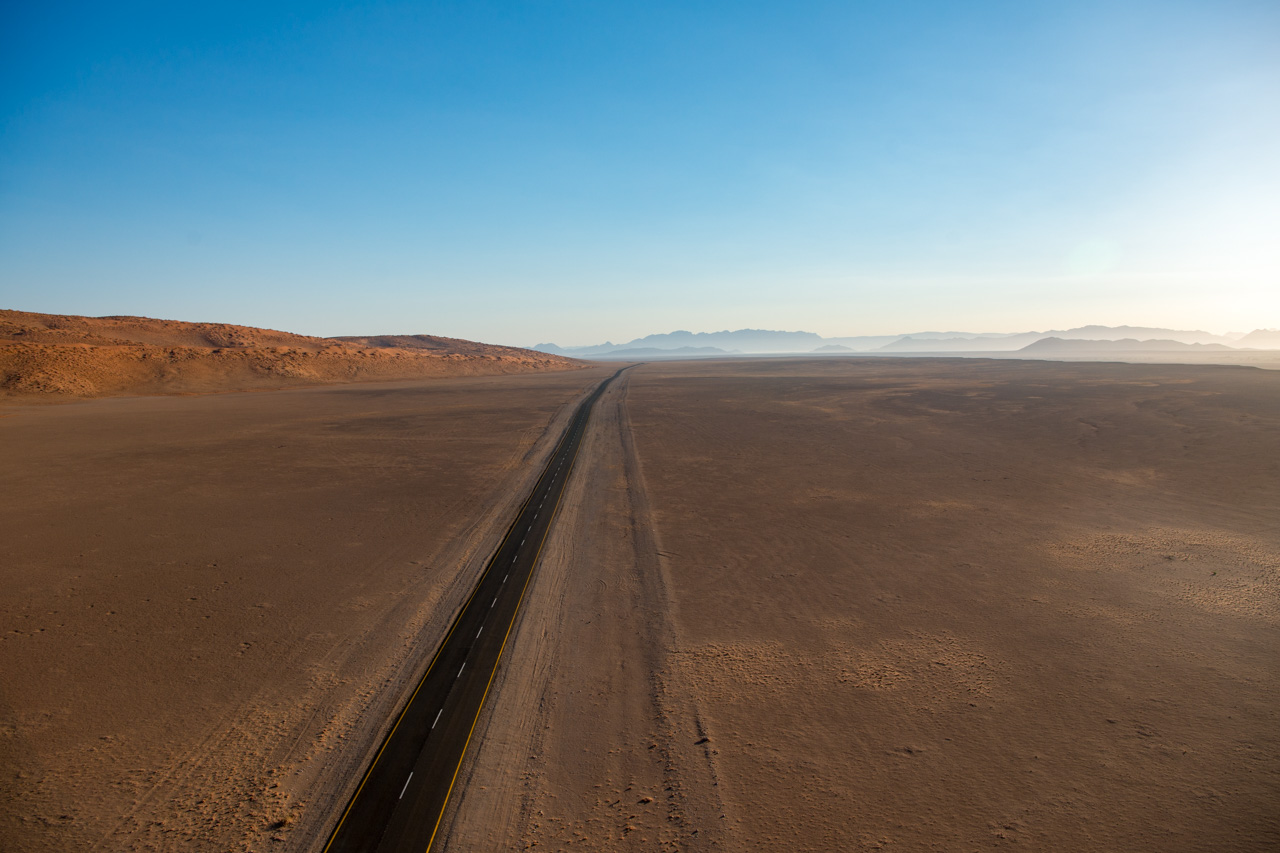
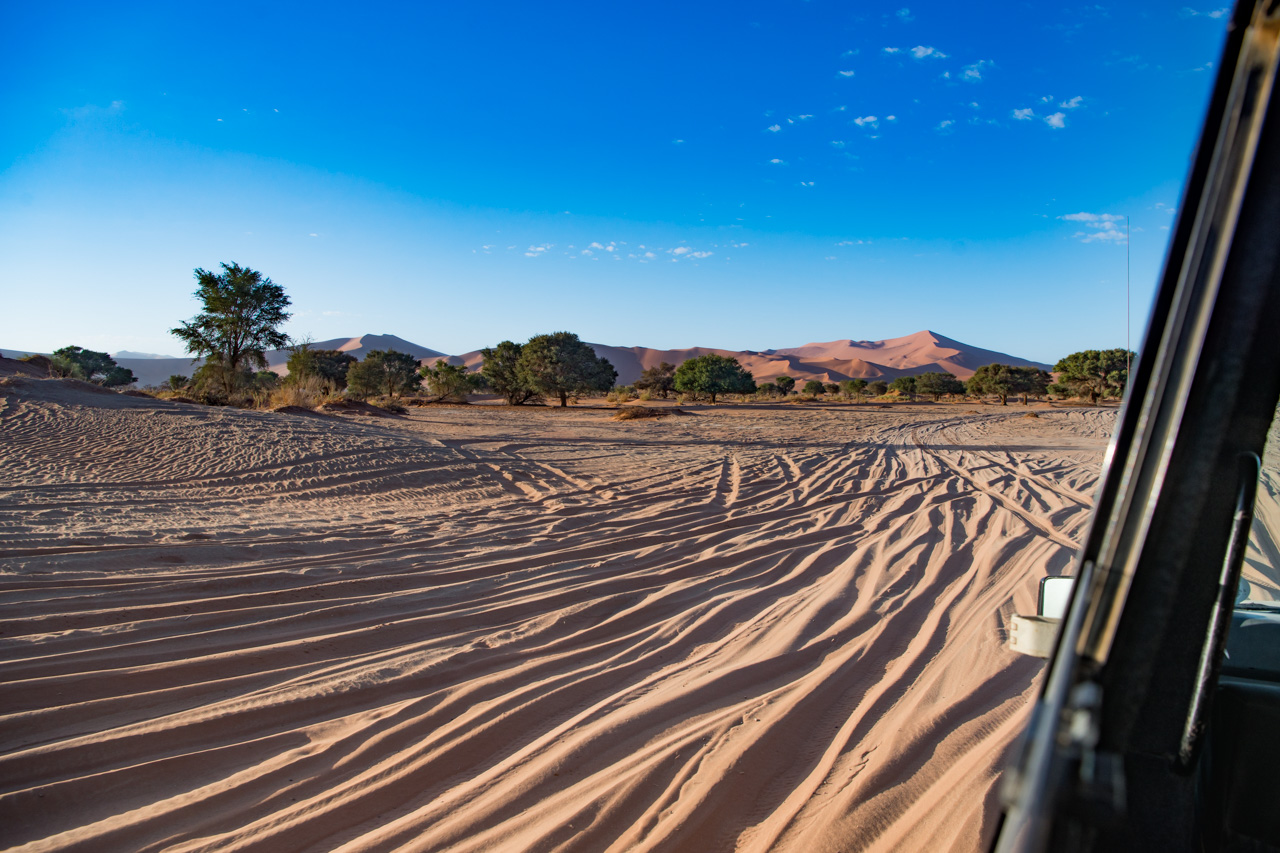
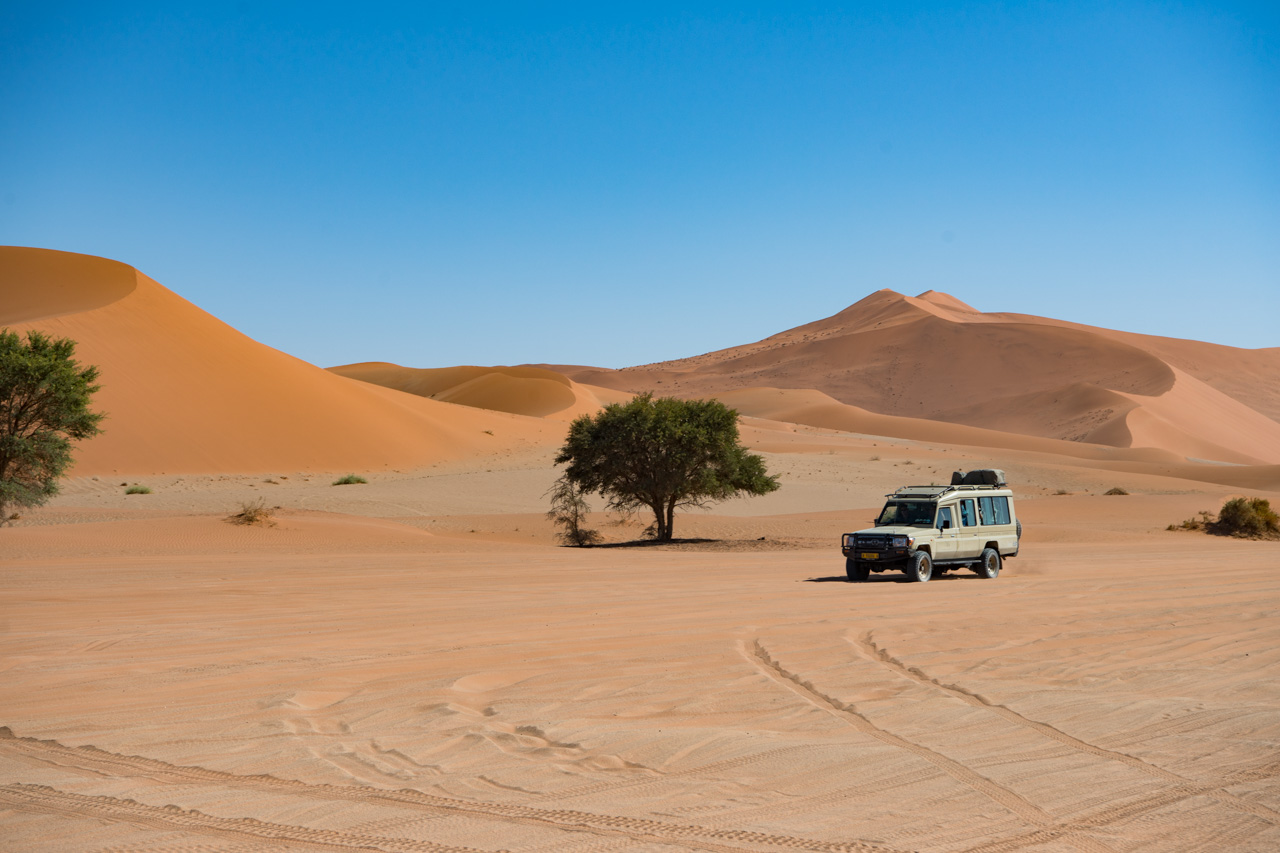

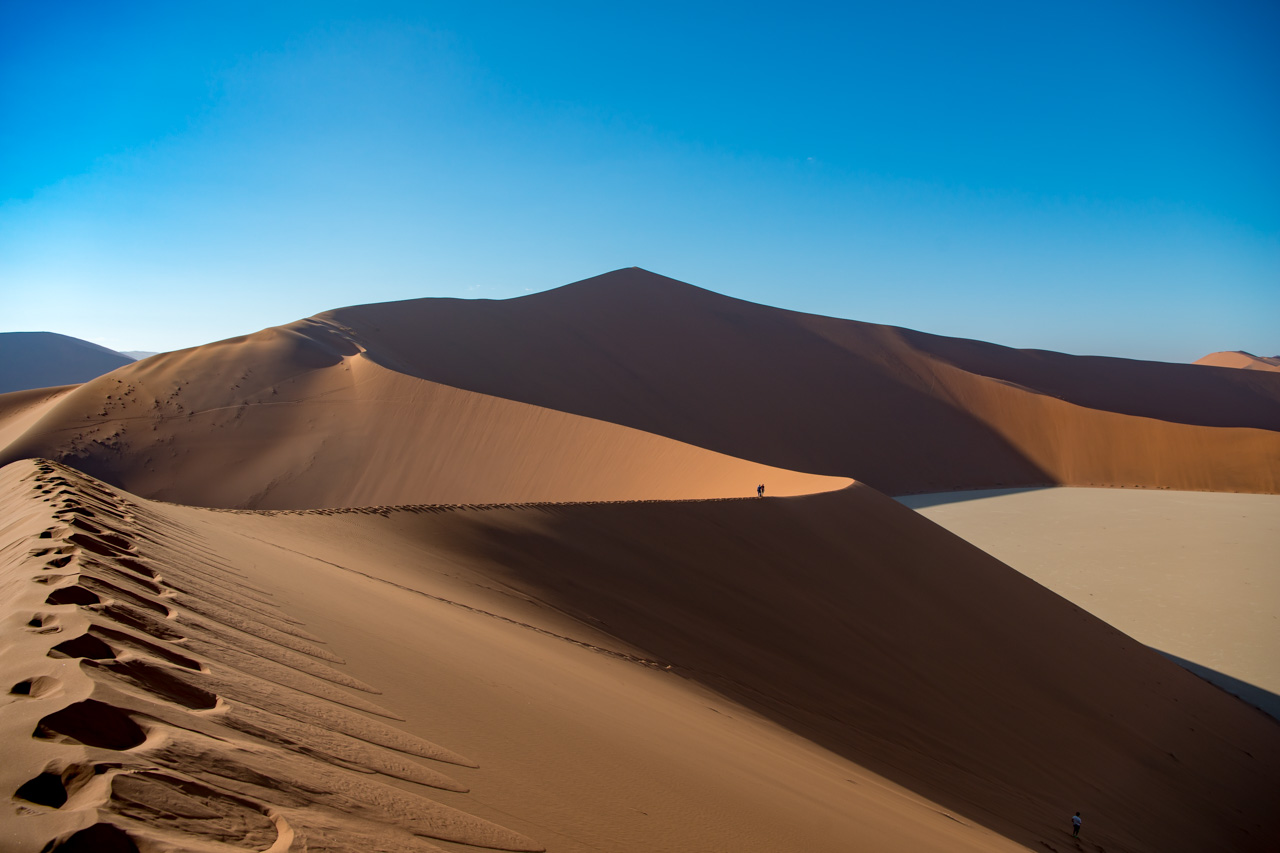
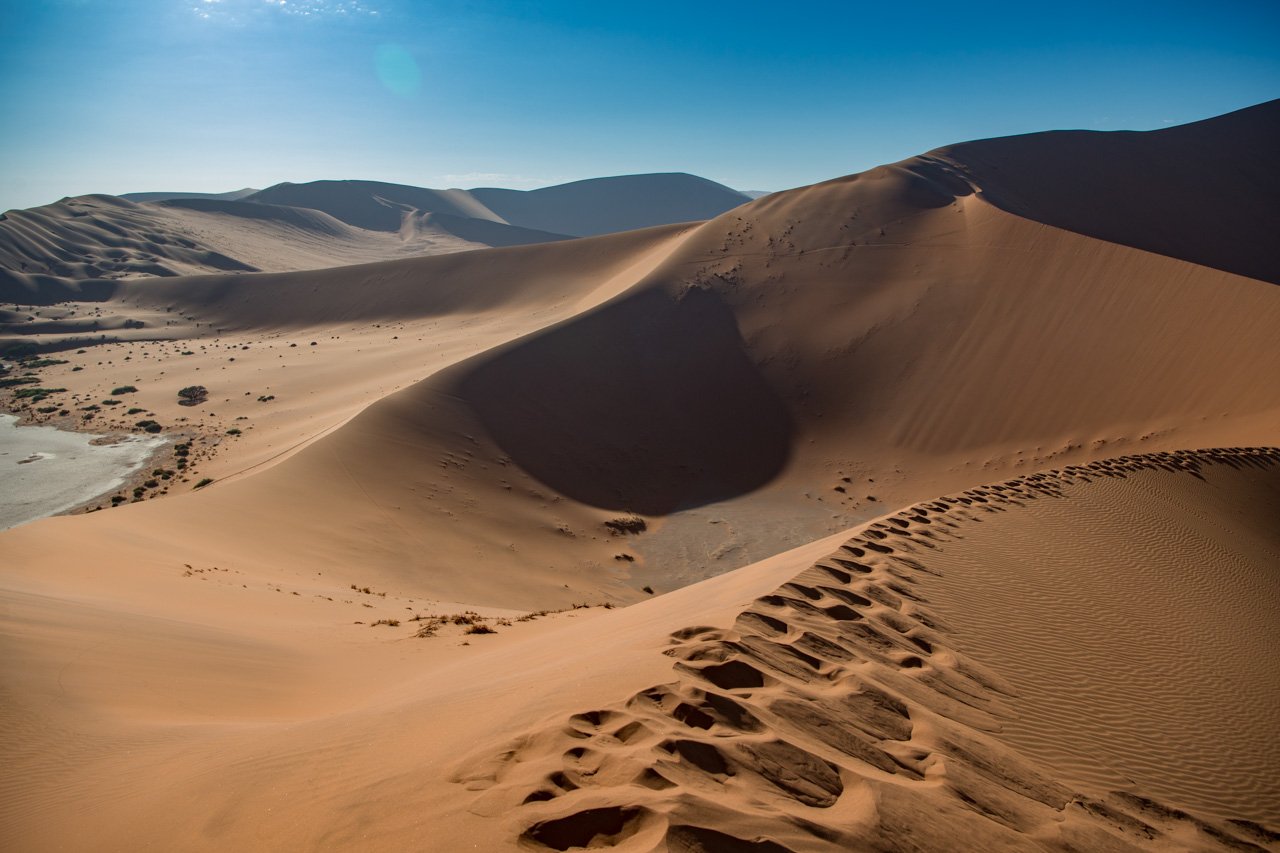
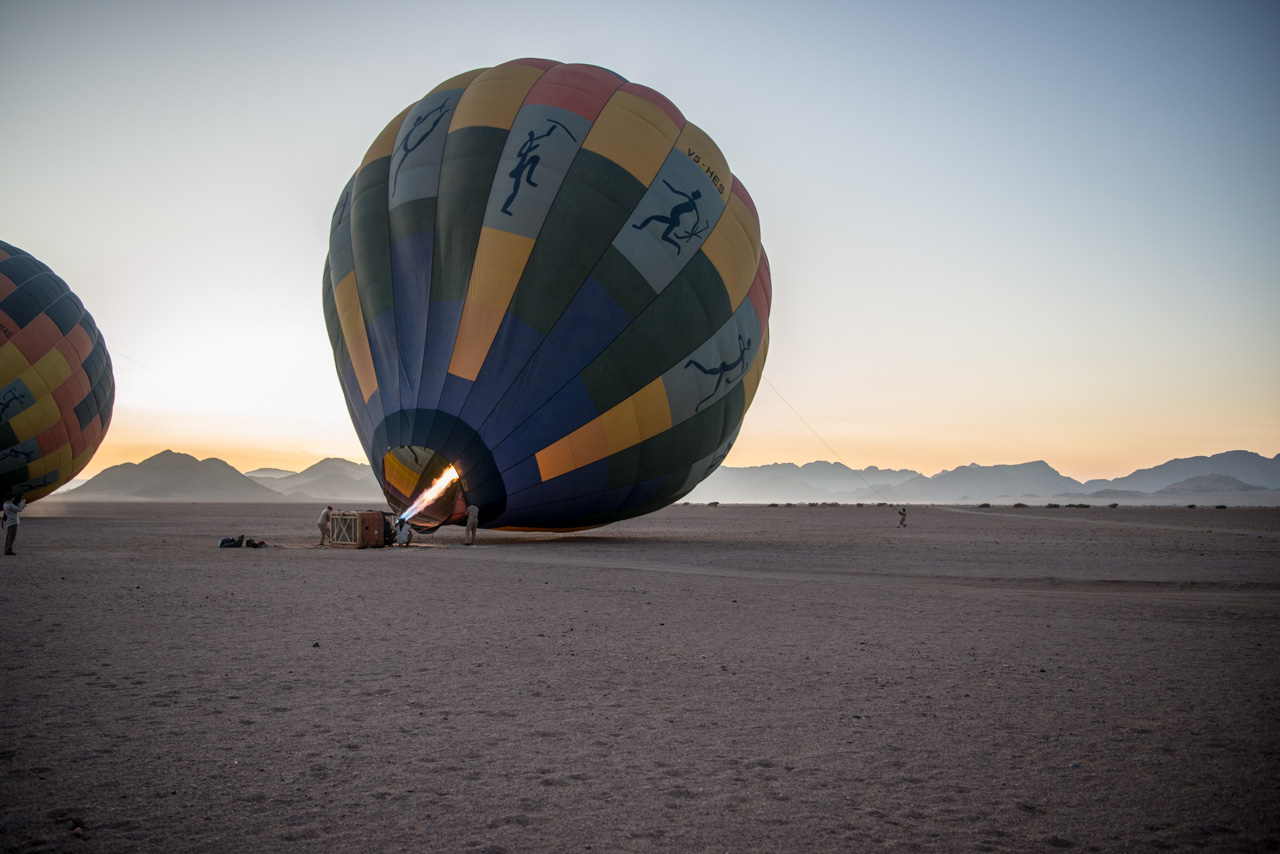

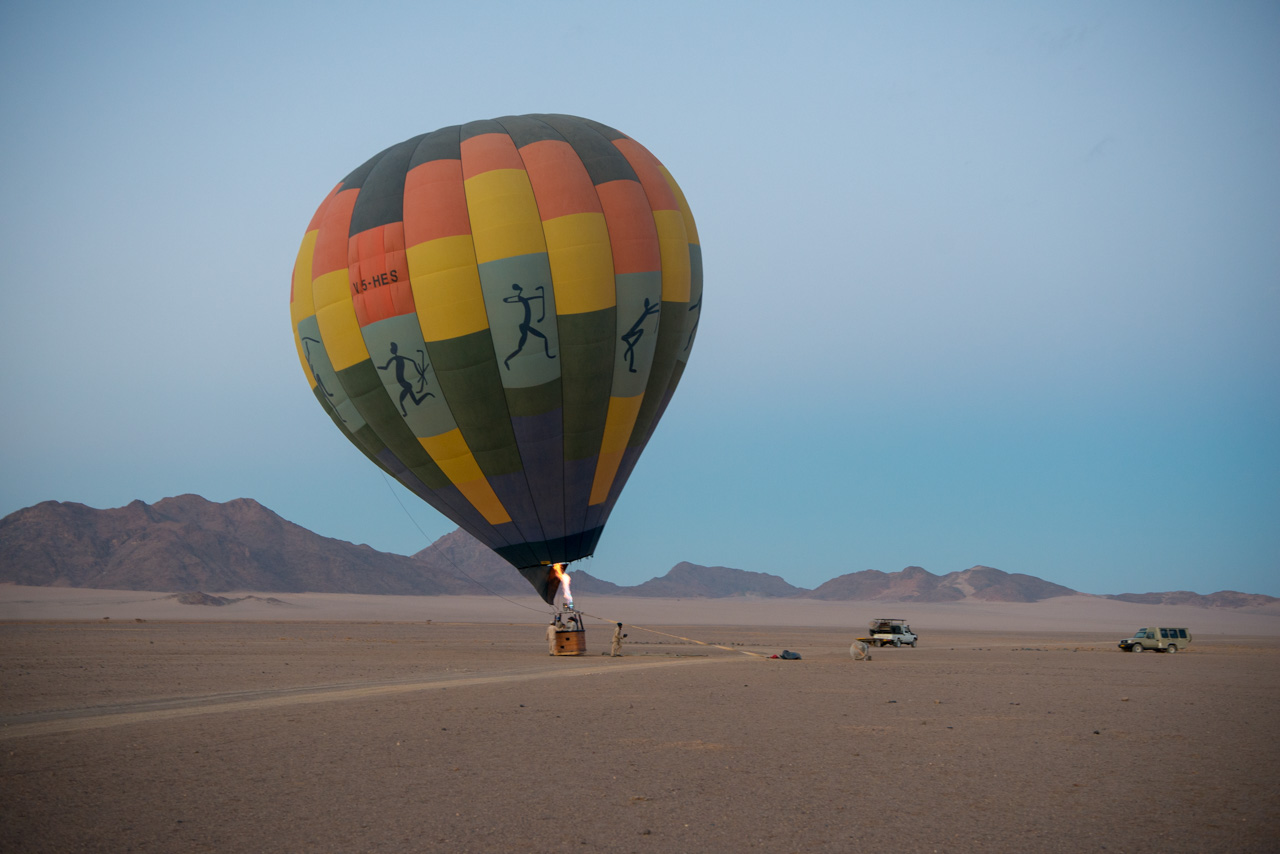
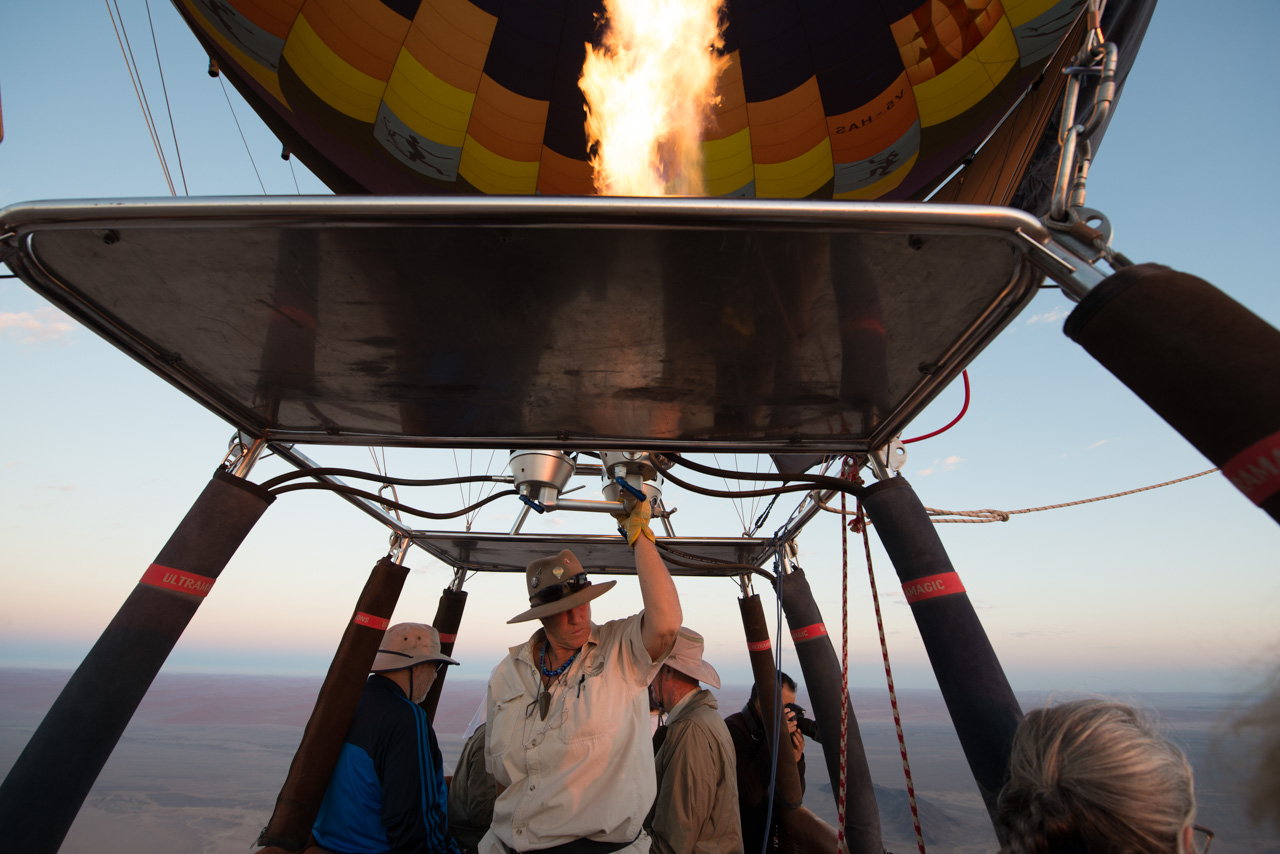
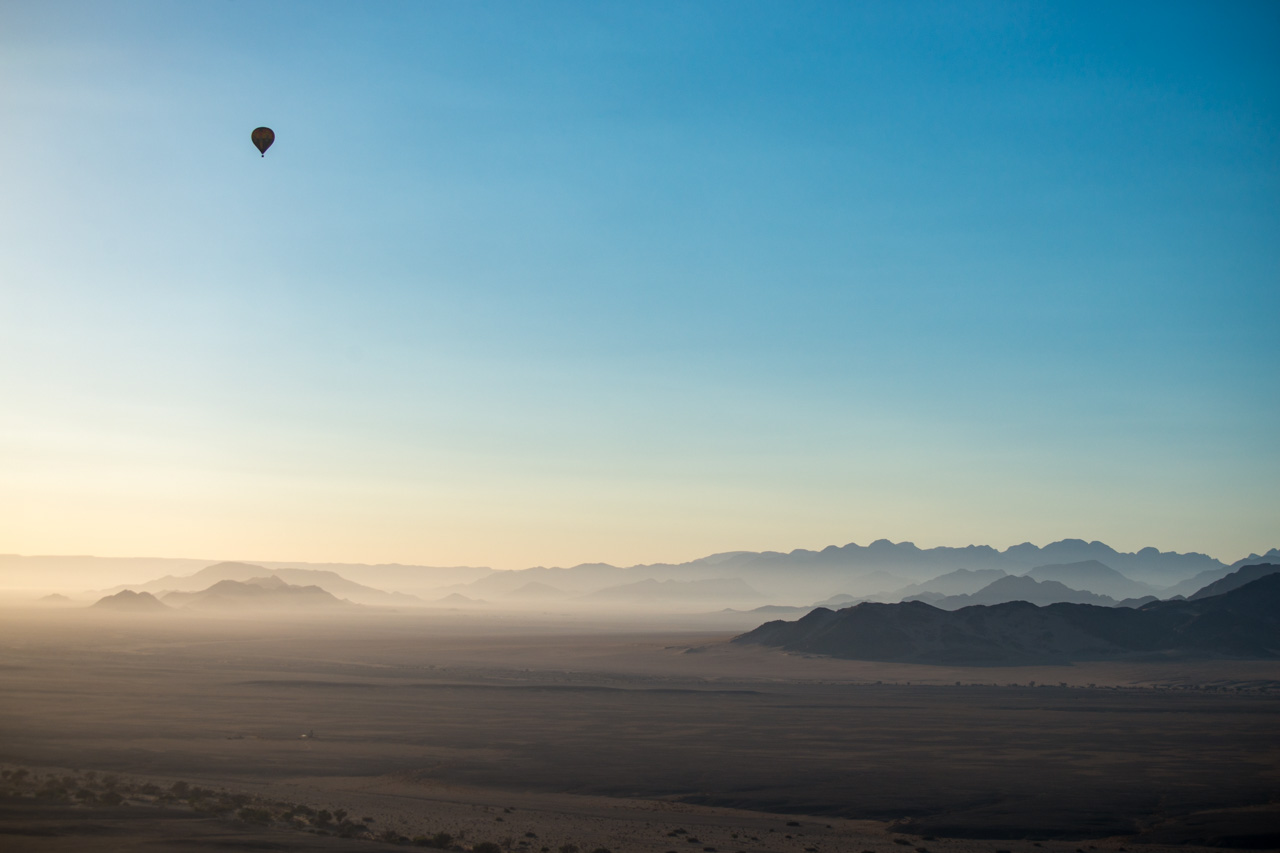
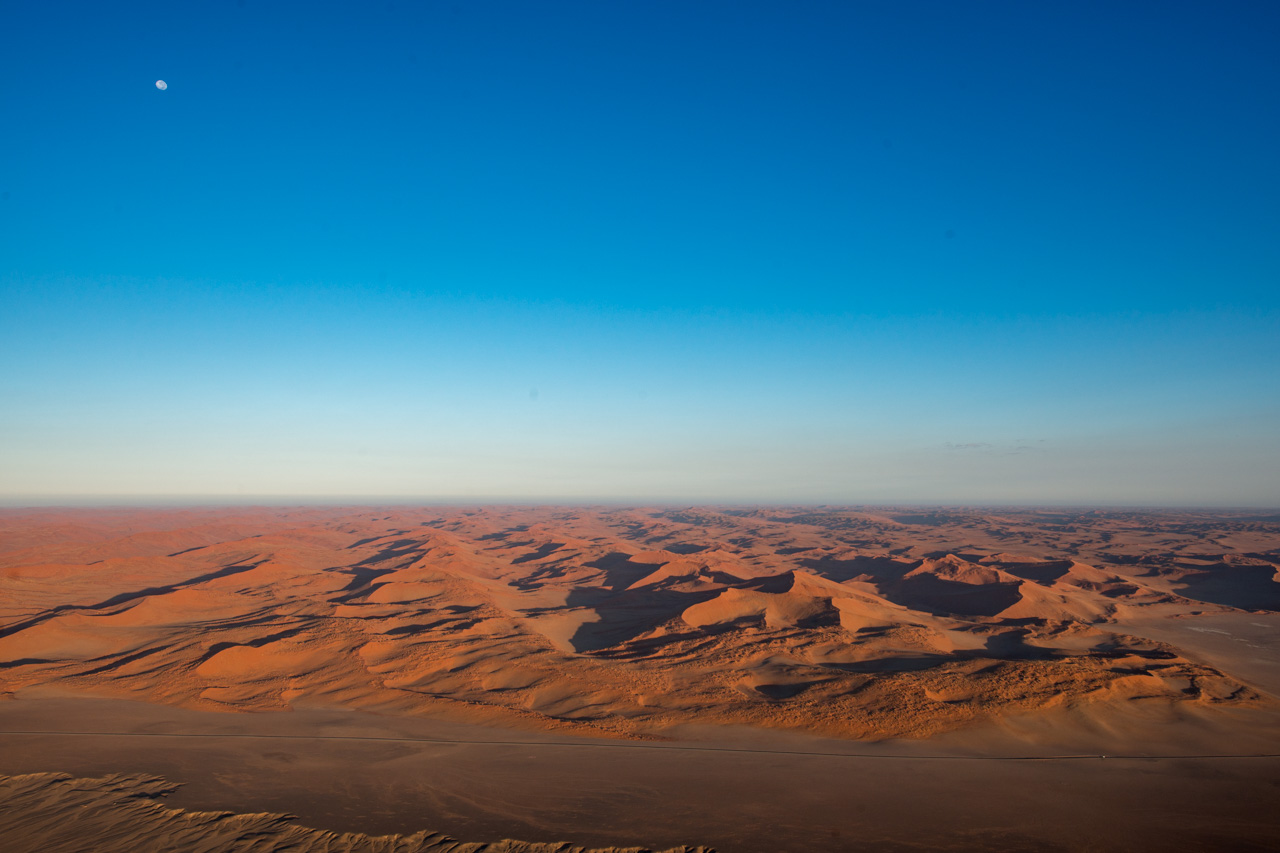
On landing (wherever the wind has taken you) there is a champagne breakfast waiting for you.
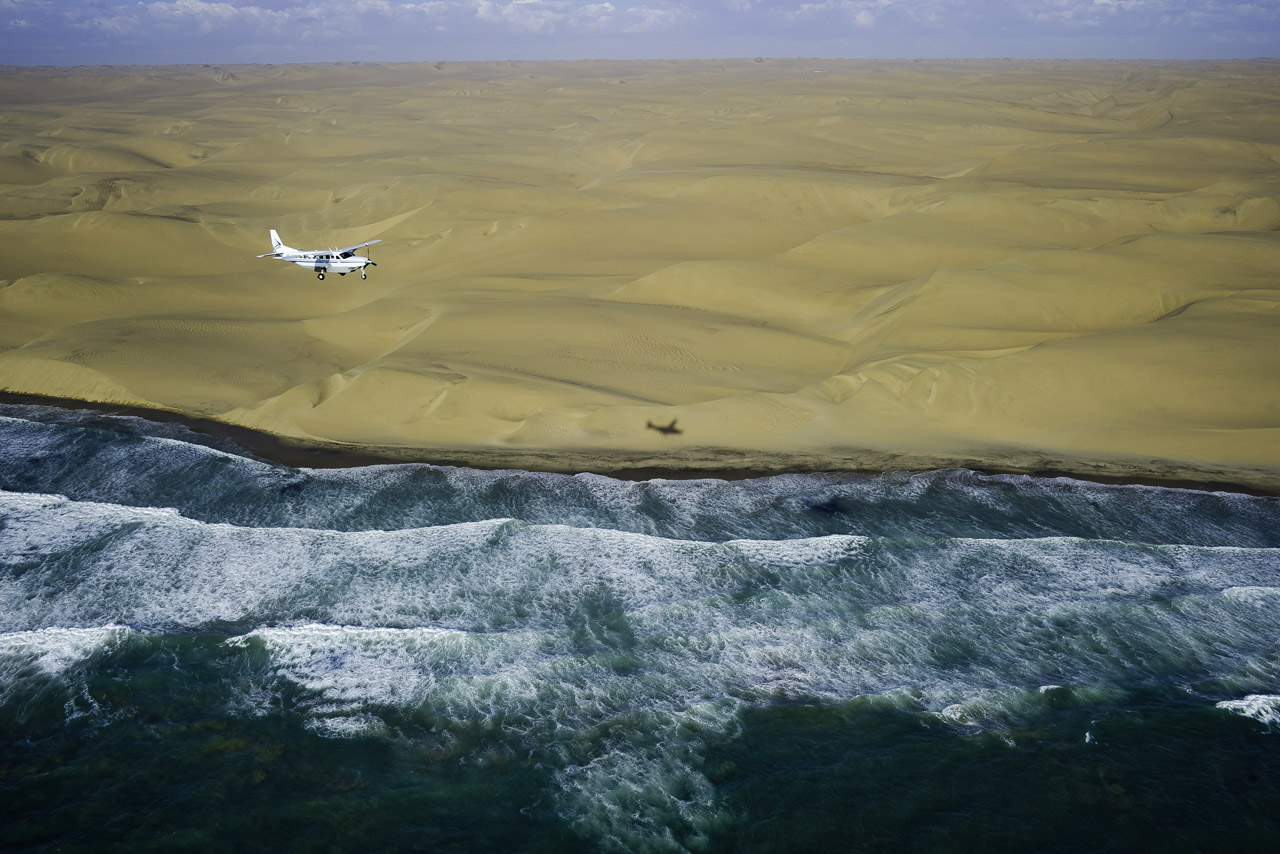
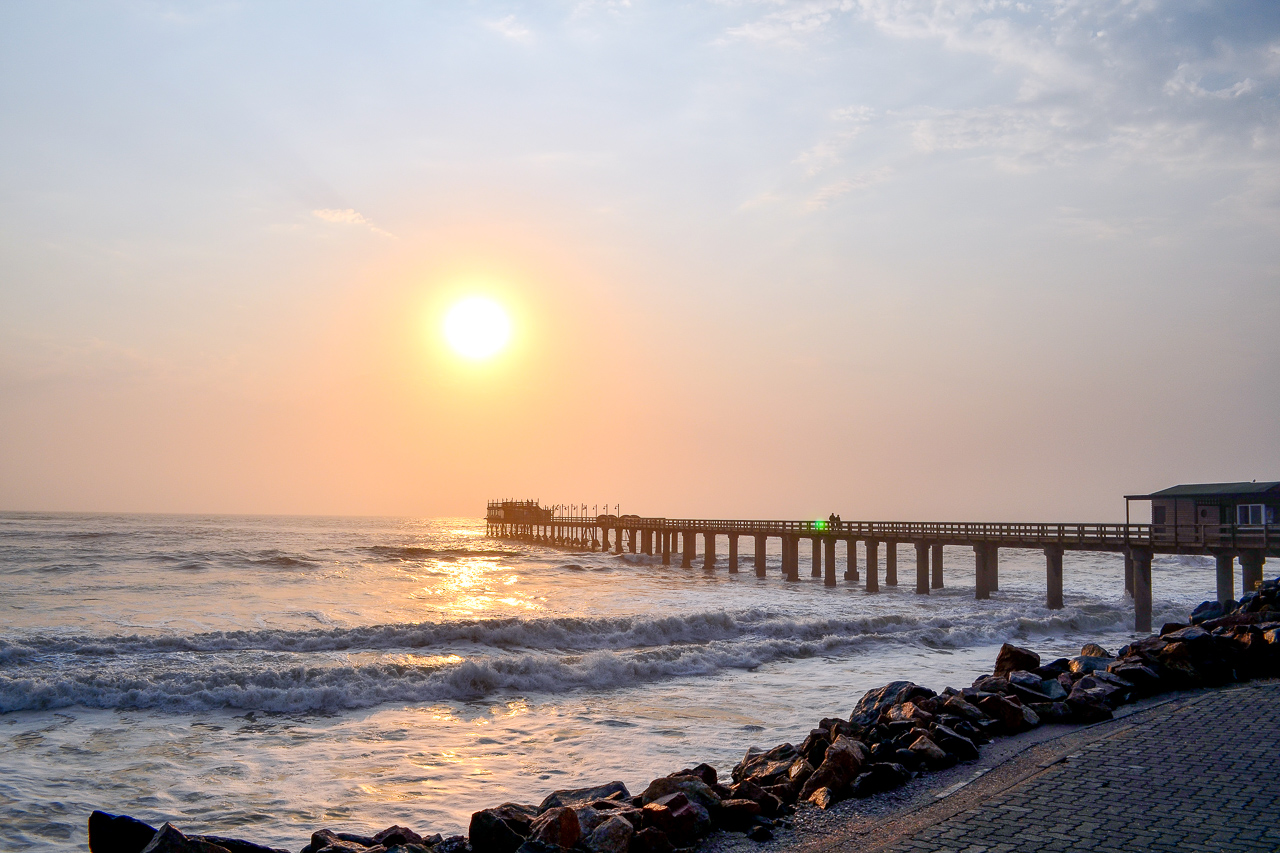

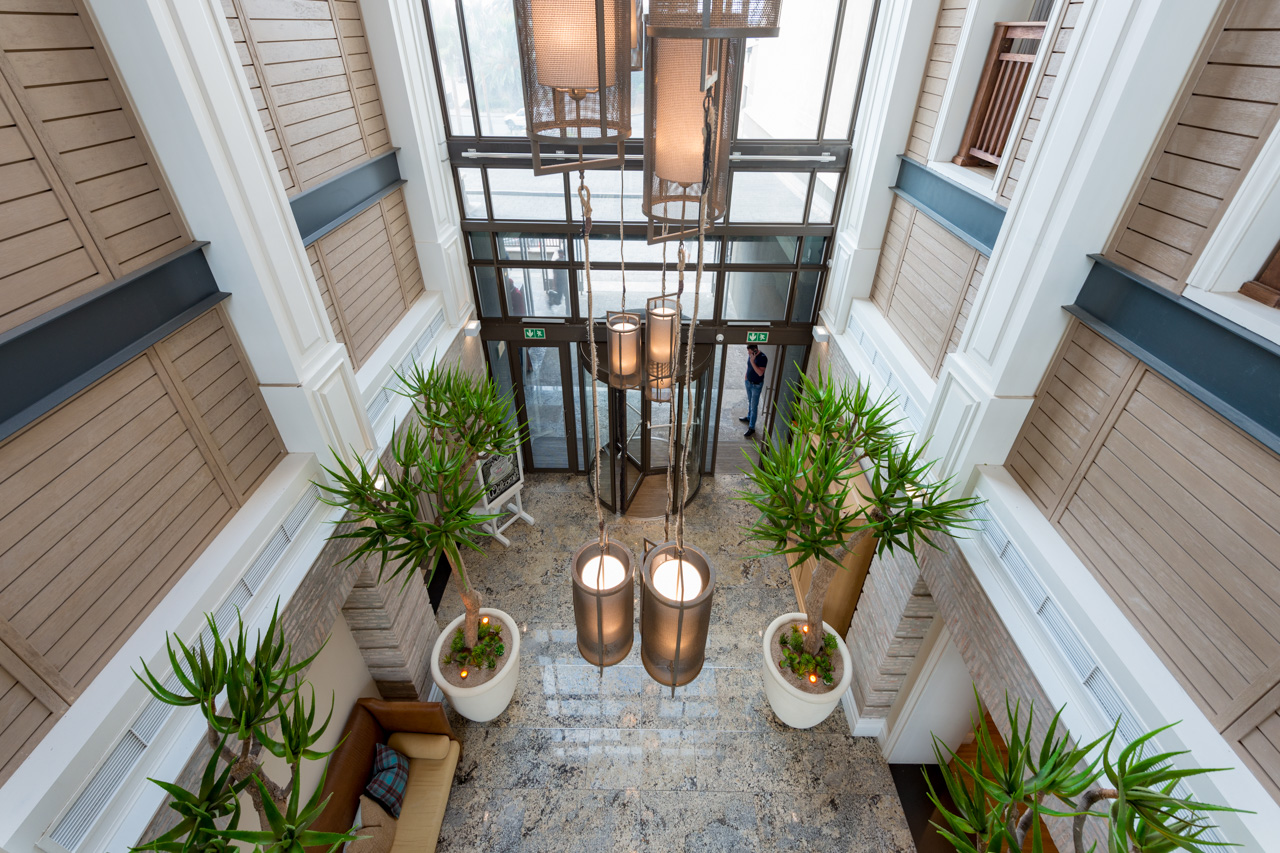
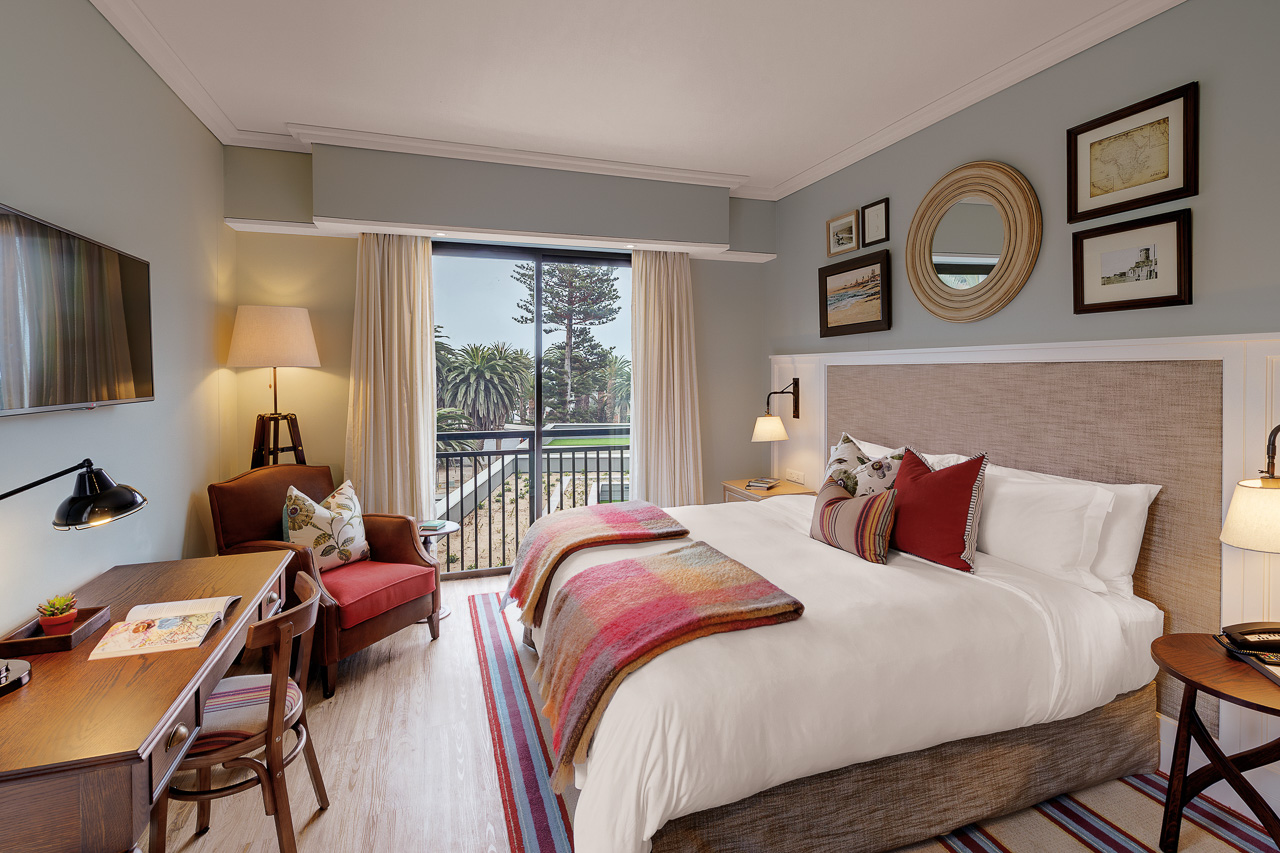
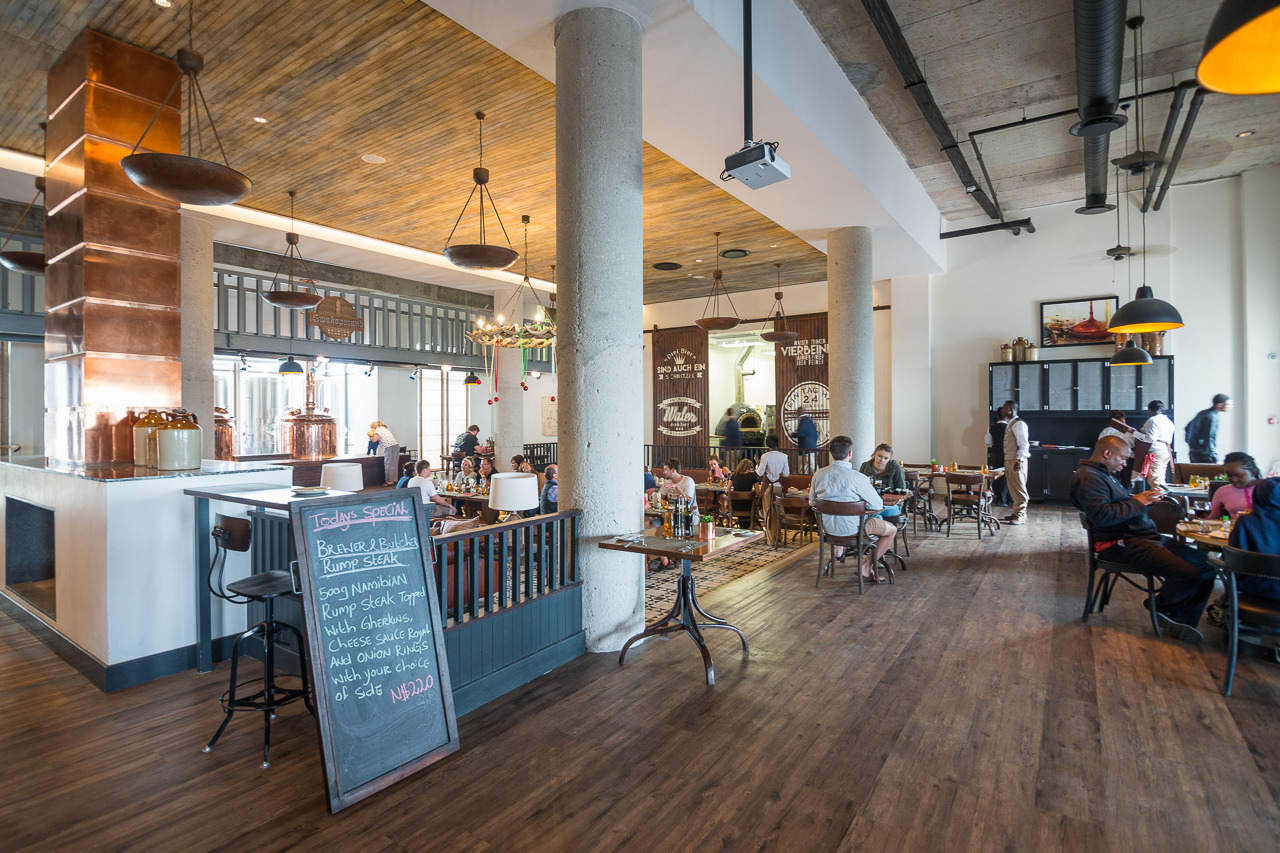
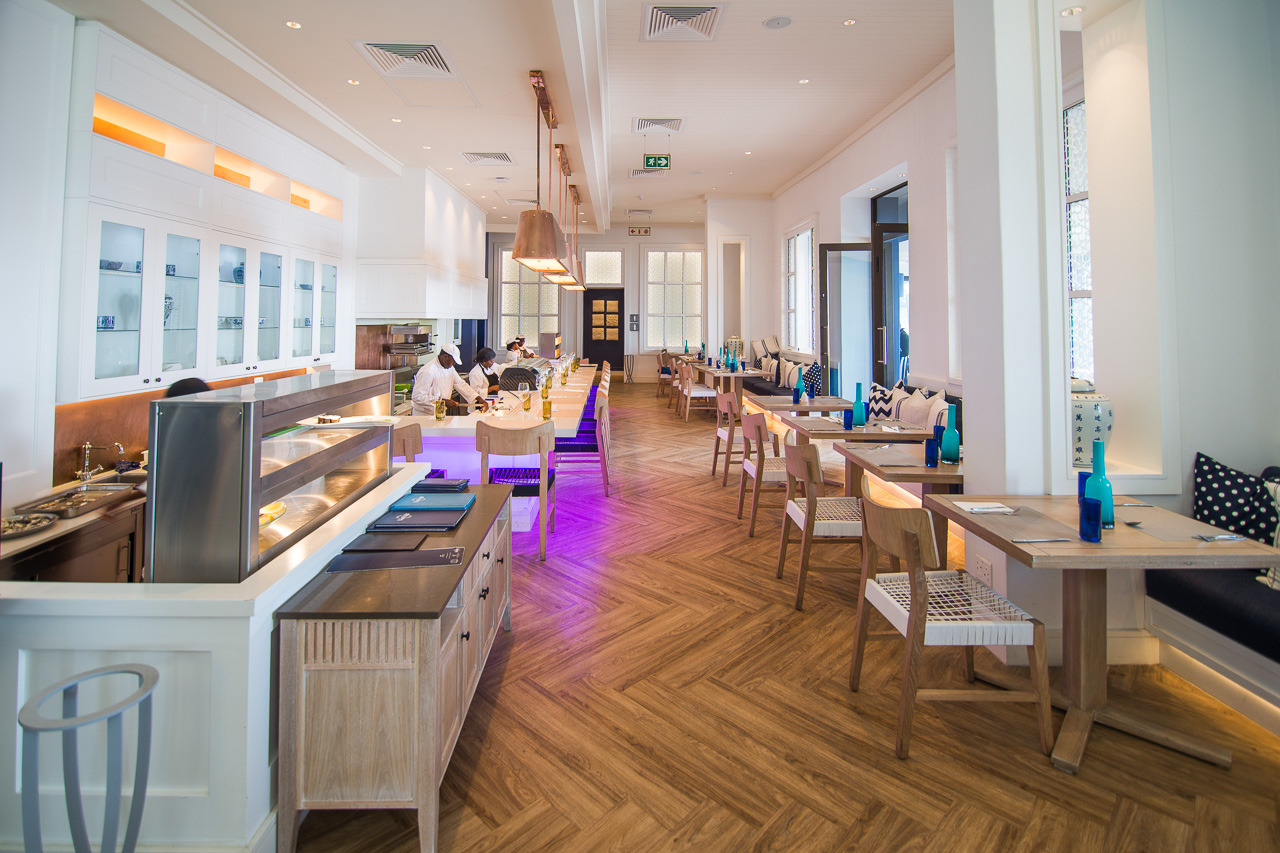
Accommodation The new Strand Hotel has set a new standard in Swakopmund. Uniquely located on the iconic and historic Swakopmund Mole and surrounded on three sides by the Southern Atlantic Ocean its 125 rooms and suites make this hotel one of the larger ones in town, but of those certainly the one with the best seaside location. All rooms have tea & coffee stations, mini-bars, hair-dryers, TV’s, free Wi-Fi Internet access, telephones and air-conditioning.
The Strand Hotel offers its residential guests and all casual visitors three exciting restaurants. The Farmhouse Deli is good for coffee, cake, sandwiches and fresh salads. The Brewer & Butcher welcomes beer and meat lovers. The Ocean Cellar caters for guests who prefer seafood, sushi, oyster and a glass of fine white wine.
The Strand Hotel is destined to become the social epicenter of Swakopmund for locals and tourists alike.
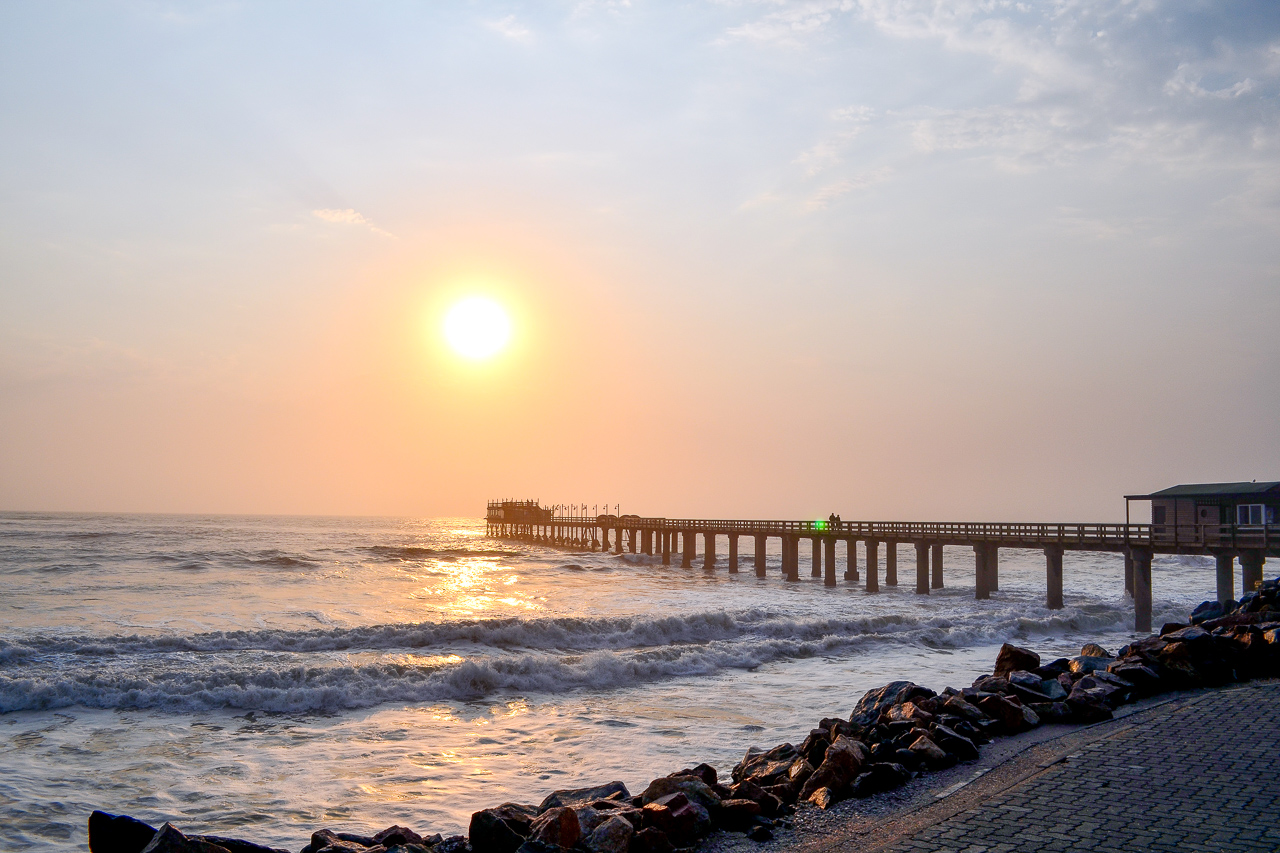
Swakopmund was the centre of German colonial rule, and relics of this chapter of its history can be found around every corner. Most noticeable of these is the long jetty, which stands witness to the German’s activities in this area and their attempt to create a usable port. Unfortunately, Swakopmund turned out to be wholly unsuitable for the task. Walvis Bay is a natural bay just 30 km south. It was occupied by the English as early as 1795, and later became a fish-processing industrial town under South African rule.
Swakopmund is charming. The old part of town is very pretty and offers several cafes, bakeries and, of course, the unavoidable beer houses. Time appears to have stood still in many parts, and it’s difficult not to keep rubbing your eyes in wonderment at the mix of German and African.
There’s a lot to do if you stay at Swakopmund: take a day trip southwards along the coast to Sandwich Harbour, hop on a boat at Walvis Bay and wait for the seals and pelicans to greet you, Kayak with seals, jump on a quad bike for a ride through the dunes, or just take a stroll along the beach and enjoy a tasty meal in one of the great restaurants. Swakopmund’s most famous landmark, the jetty, has been renovated and now boasts the appropriately named ‘Jetty 1905’ restaurant at its end.
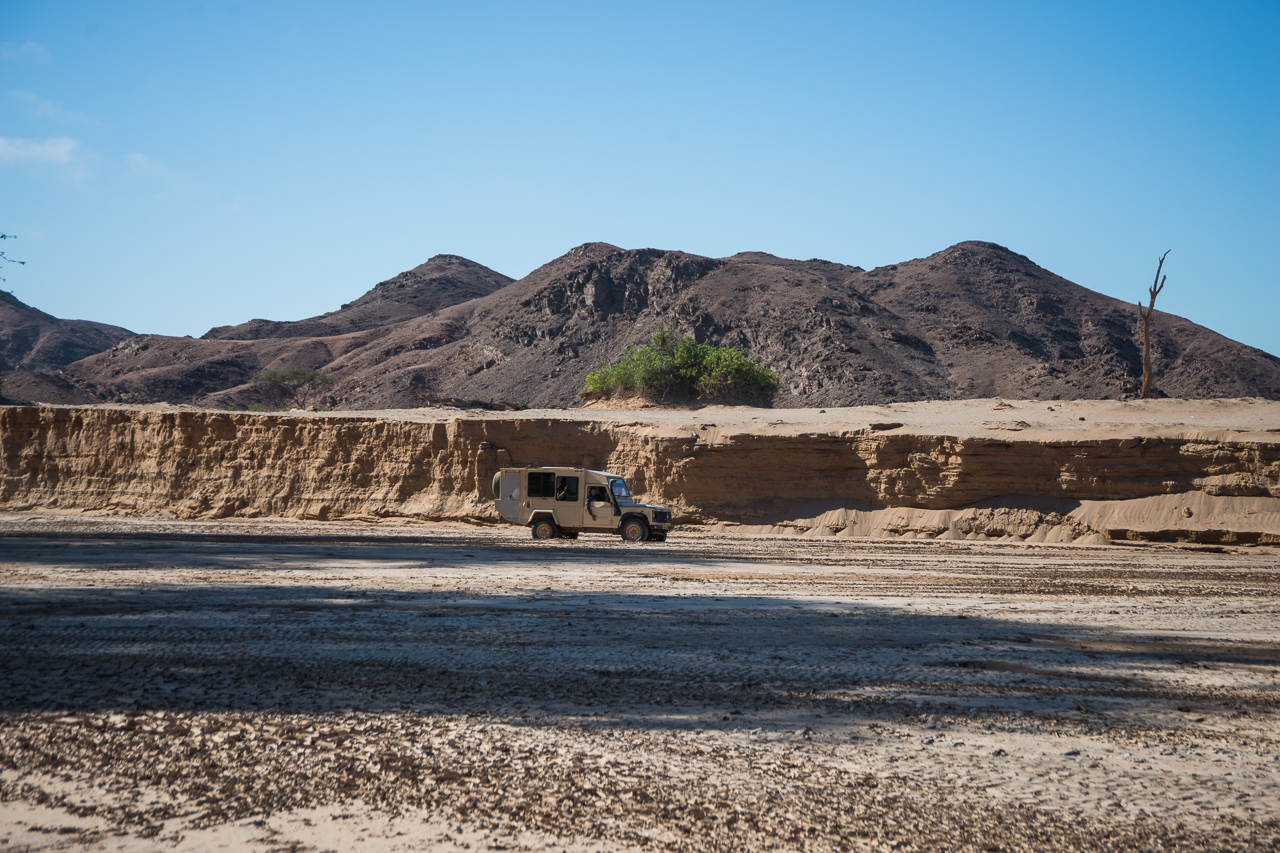

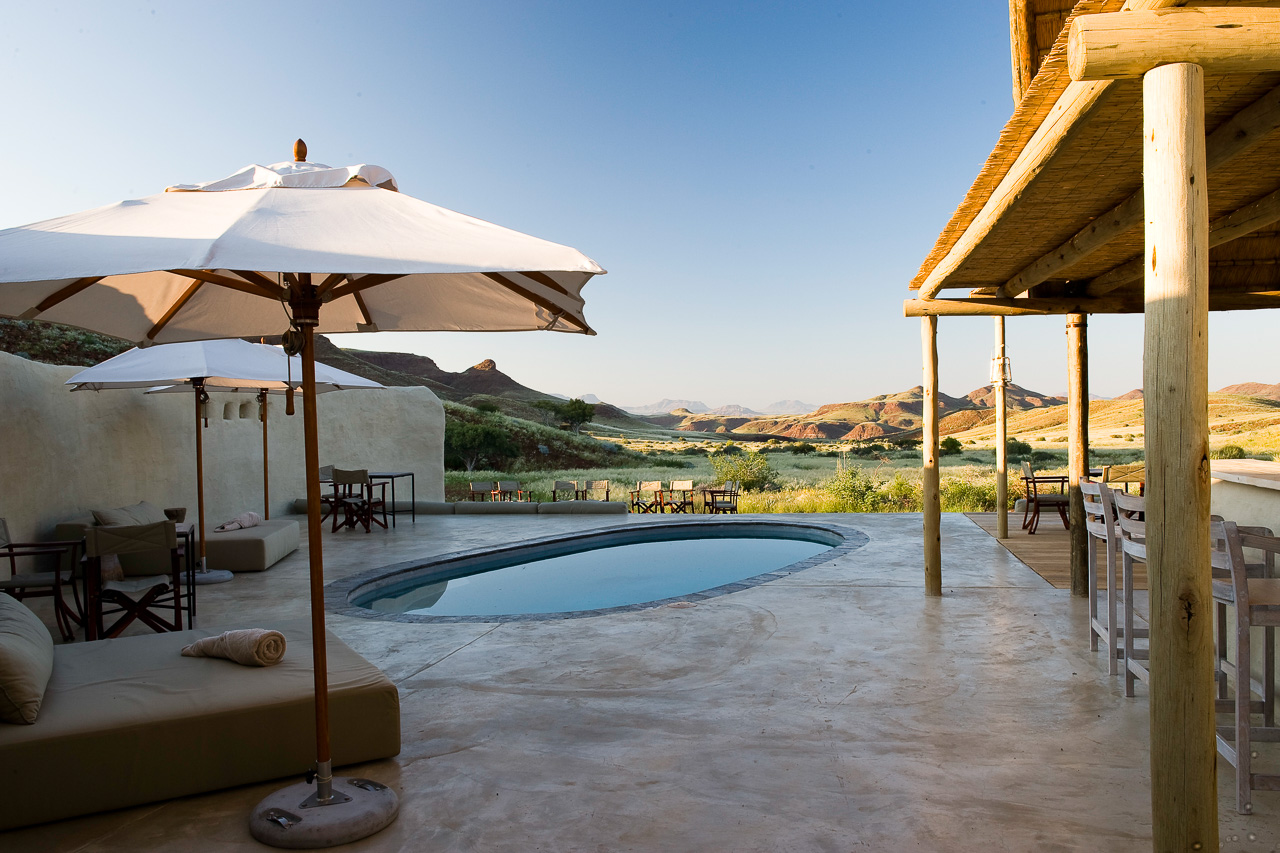
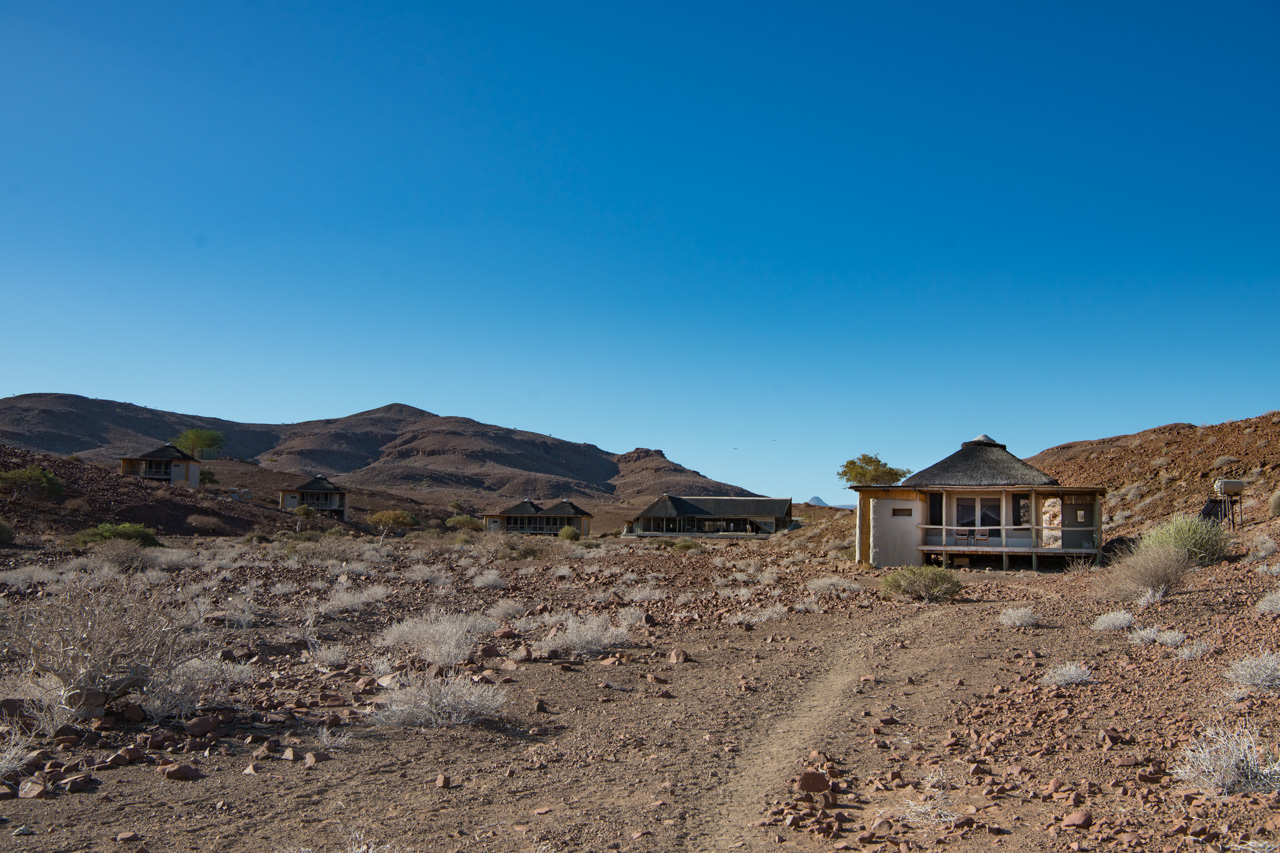
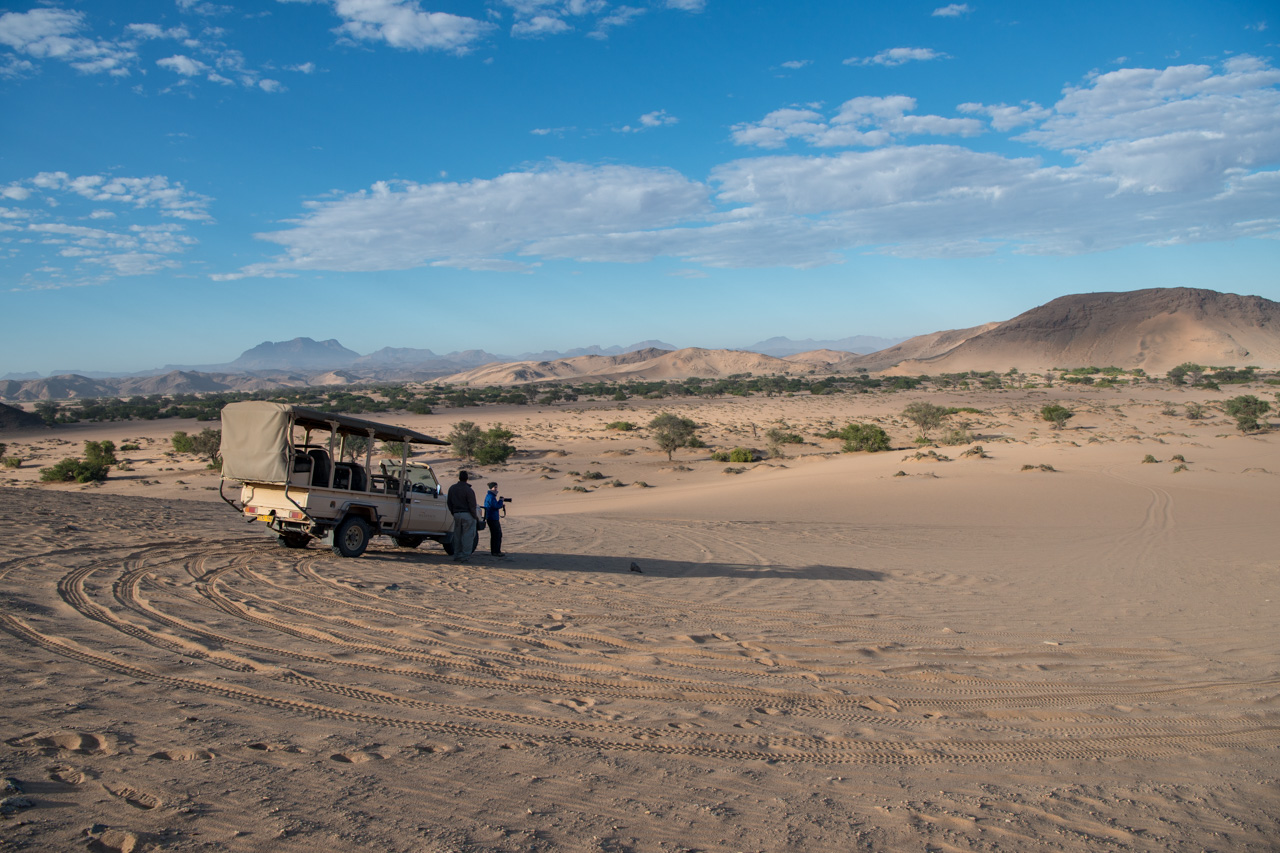
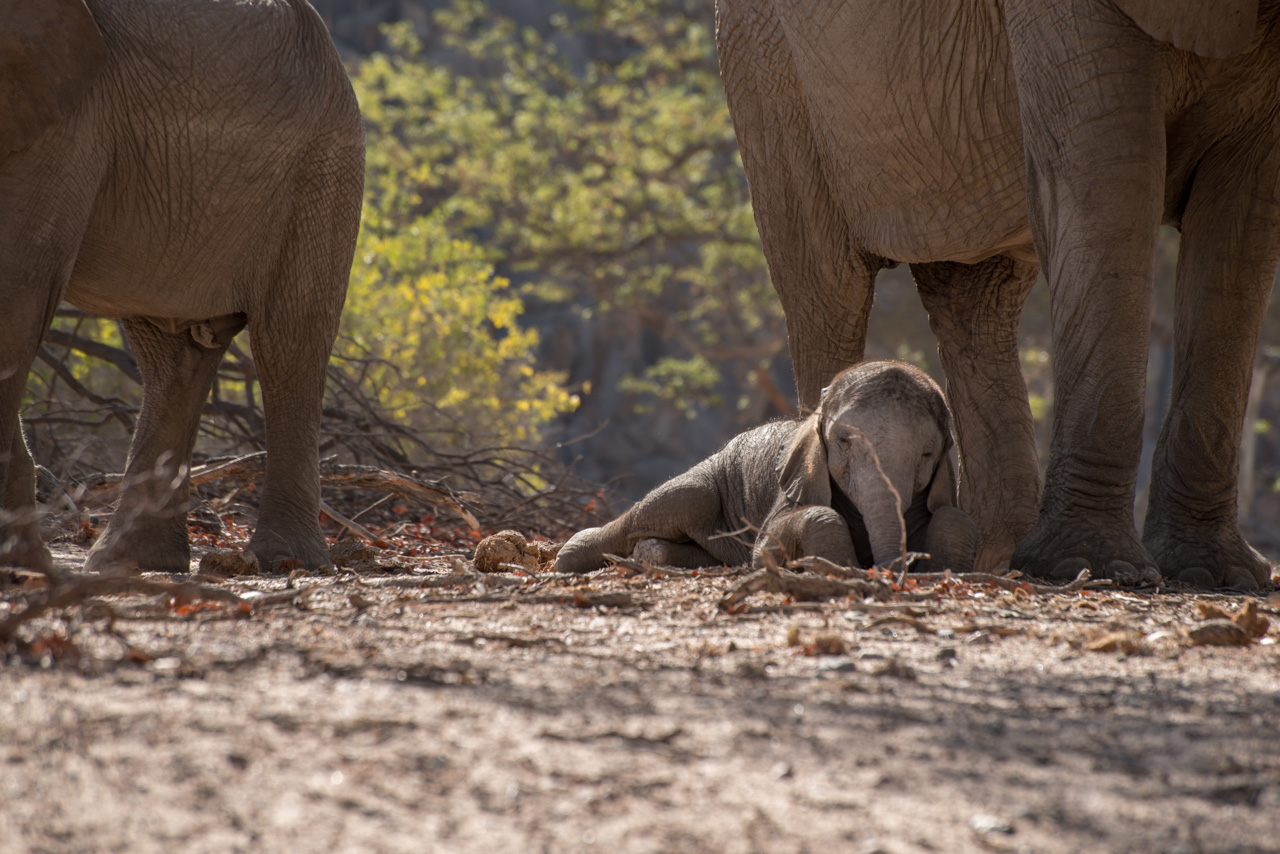
Accommodation Damaraland Camp offers ten thatched, adobe-style units in a modern interpretation of a traditional construction. The stylishly furnished rooms are distributed around the main building. Each is equipped with en-suite facilities and a large veranda, which comes into its own during the clear and starry desert nights. The main building is light and airy and houses a swimming pool, a bar and a lounge where guests can read, relax and unwind.
Damaraland is spectacularly beautiful, craggy and rugged with open plains. The whole landscape takes on a green hue after rain has fallen; a sight best viewed from above when arriving at the camp by air.
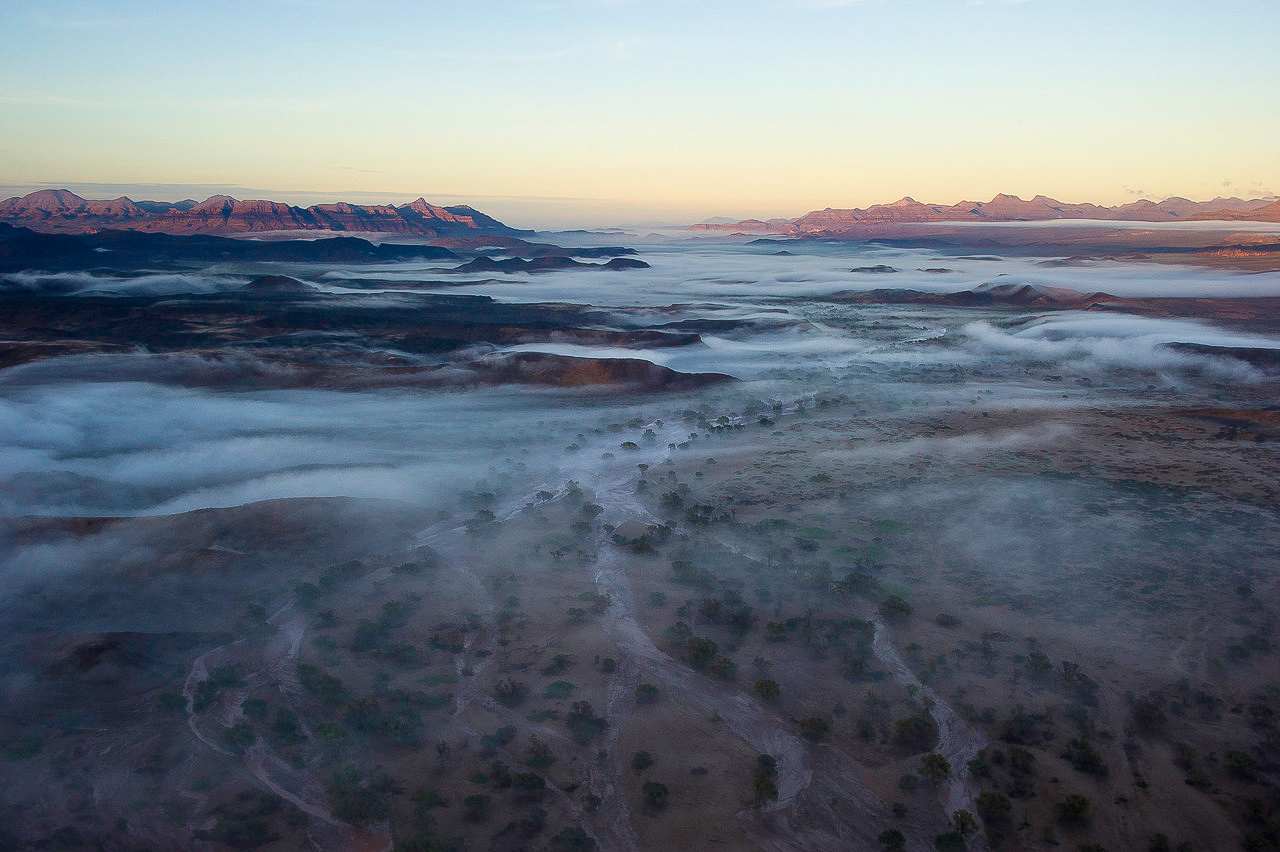
Famous formations include Namibia’s highest mountain (Königsberg in the Brandberg Massif, 2606 m), the Vingerklip (a rock needle) and the Spitzkoppe (Namibia’s 700 m high Matterhorn). It is also well worth visiting Twyfelfontein to see the world-renowned rock engravings – a little touristic, but also a World Heritage Site.
The remote west of Damaraland is particularly interesting. It includes the Palmweg Concession with its abundance of rhino, and the Torra Conservancy, which is also a haven for desert elephant.
Fog often forms over the cold water of the Atlantic at night, carrying much needed moisture to plants up to 20 km inland. Depending on the time of year, the fog disappears again shortly after the scorching Namibian sun rises. The densest fog can be found along Skeleton Coast during the winter months; the best weather can be found here from November to March (hot season).
Various rivers flow from east to west through Damaraland, but they are mostly dry and only flow during the wet season. The main rivers are called Huab, Ugab, Uniab and Koigab. The edges of these river valleys support trees such as mopane, camel thorn, ana tree and various shrubs, which in turn attract a list of animals from the surrounding area, including desert elephant, which has adapted to the region’s harsh and barren conditions. Other wildlife that can be spotted here includes oryx (gemsbok), kudu, Hartmann’s mountain zebra, giraffe and springbok. Visitors can also, but rarely, catch sight of lion, leopard and very shy rhino.
We love Damaraland because of its beautiful landscape. Spotting wildlife, such as desert elephant, just makes it all the more beautiful.
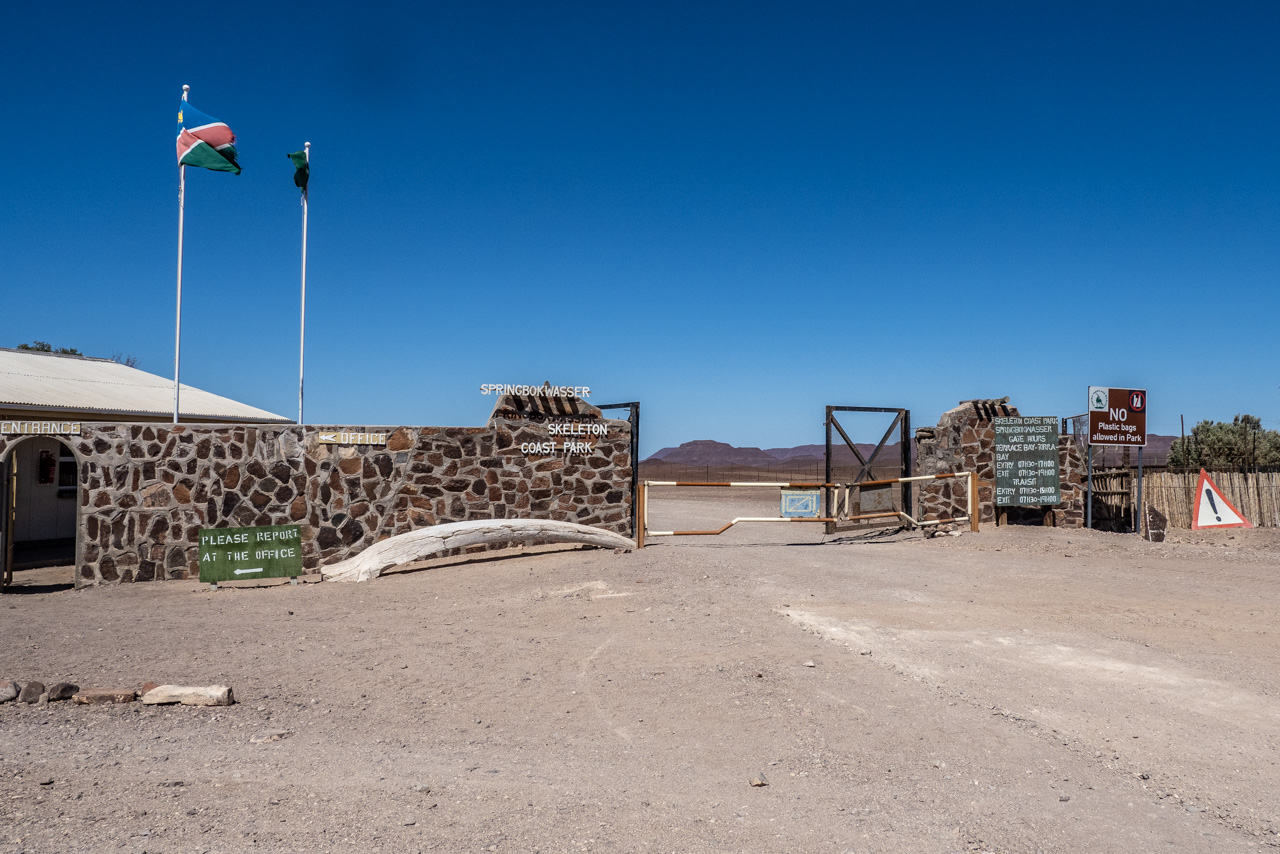

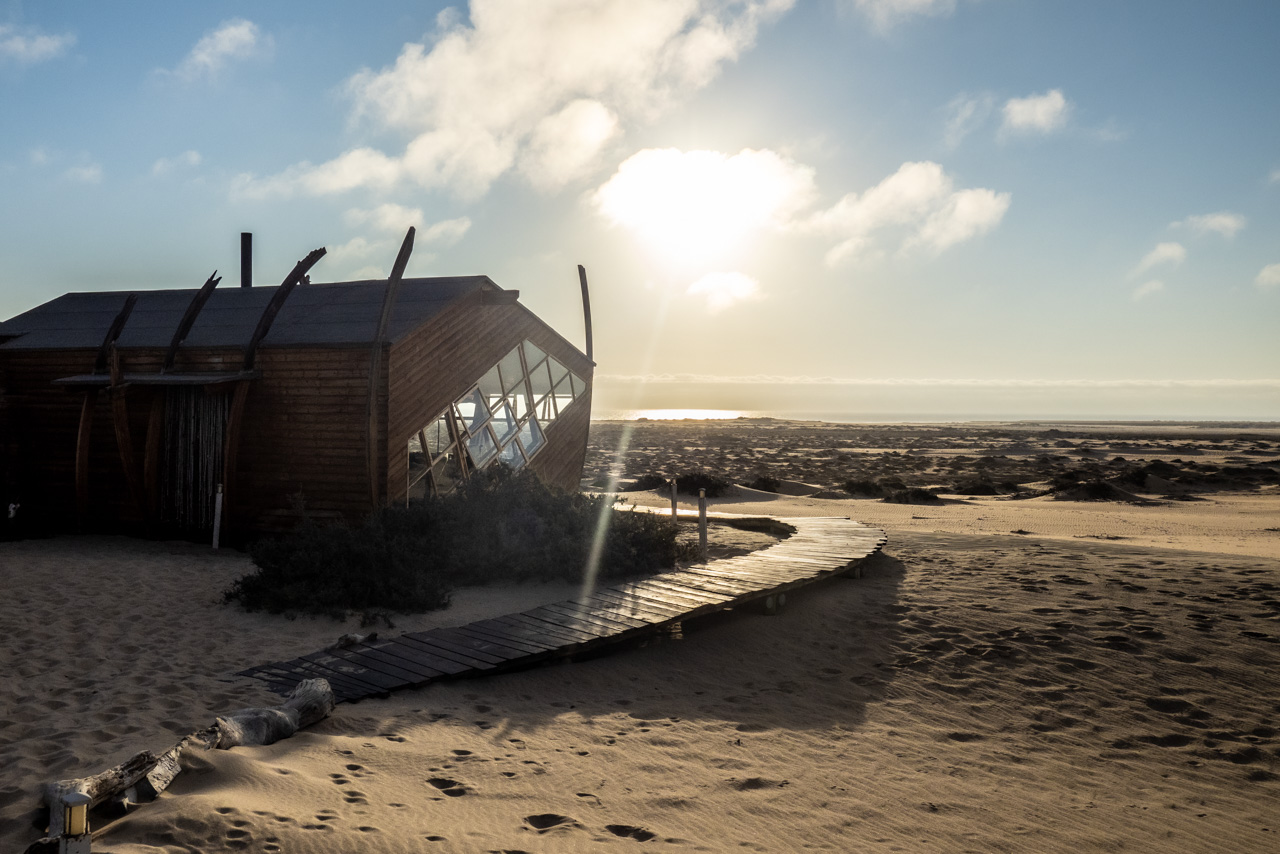
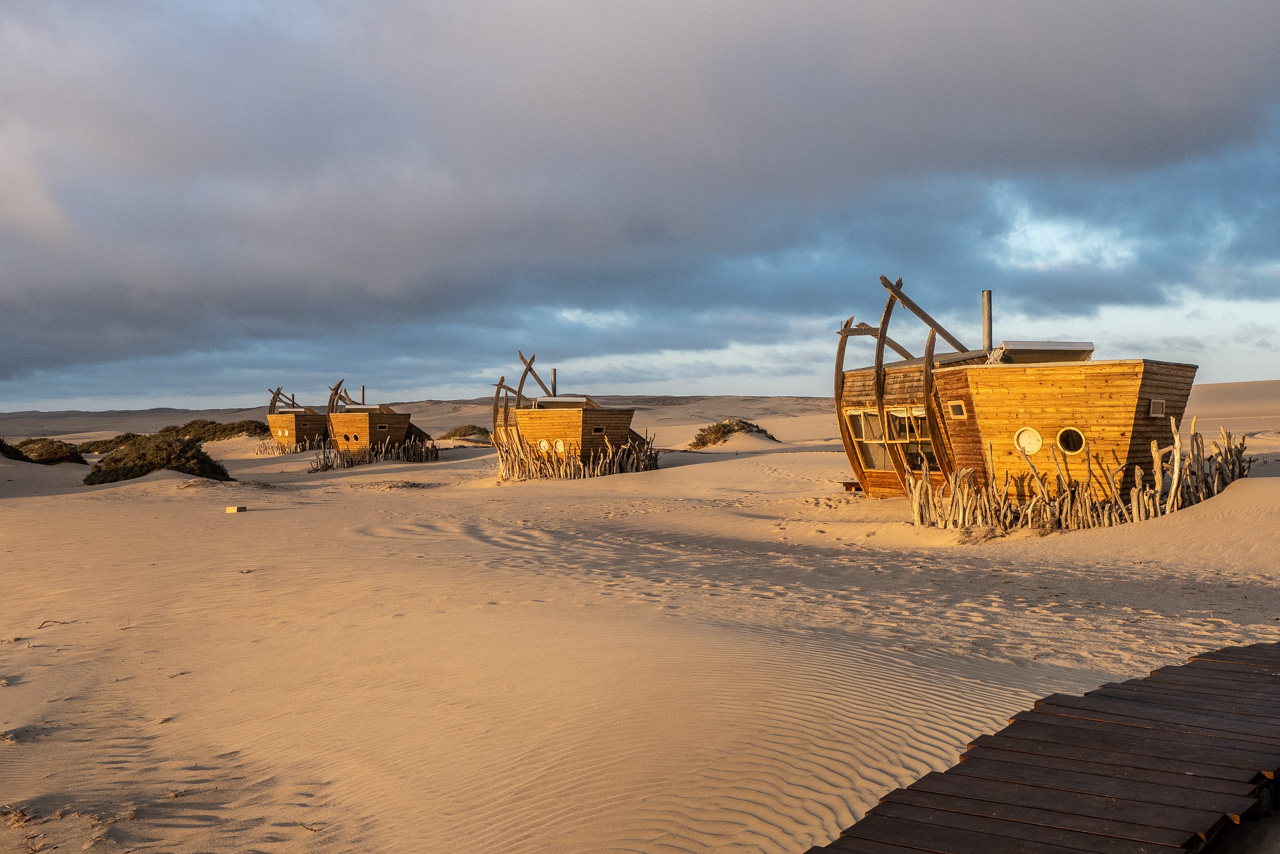
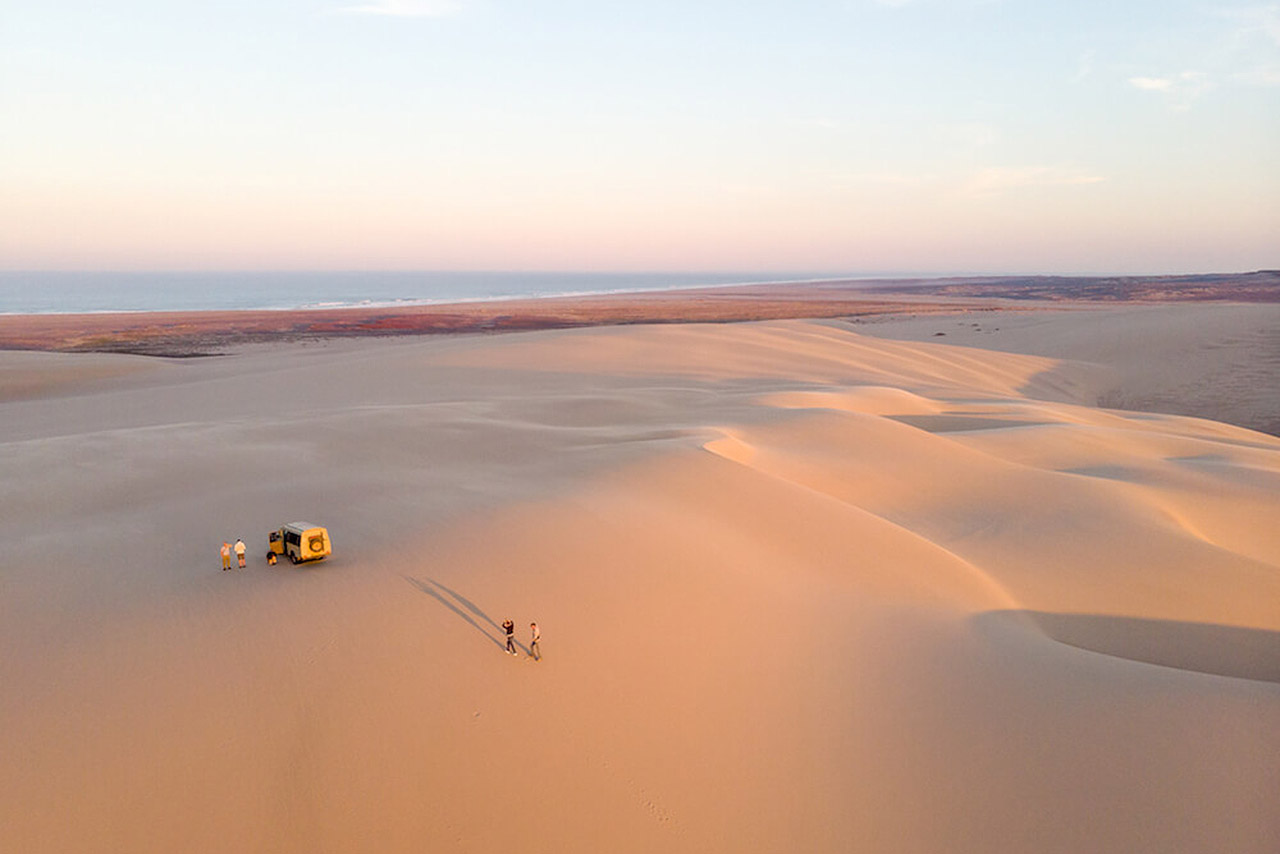
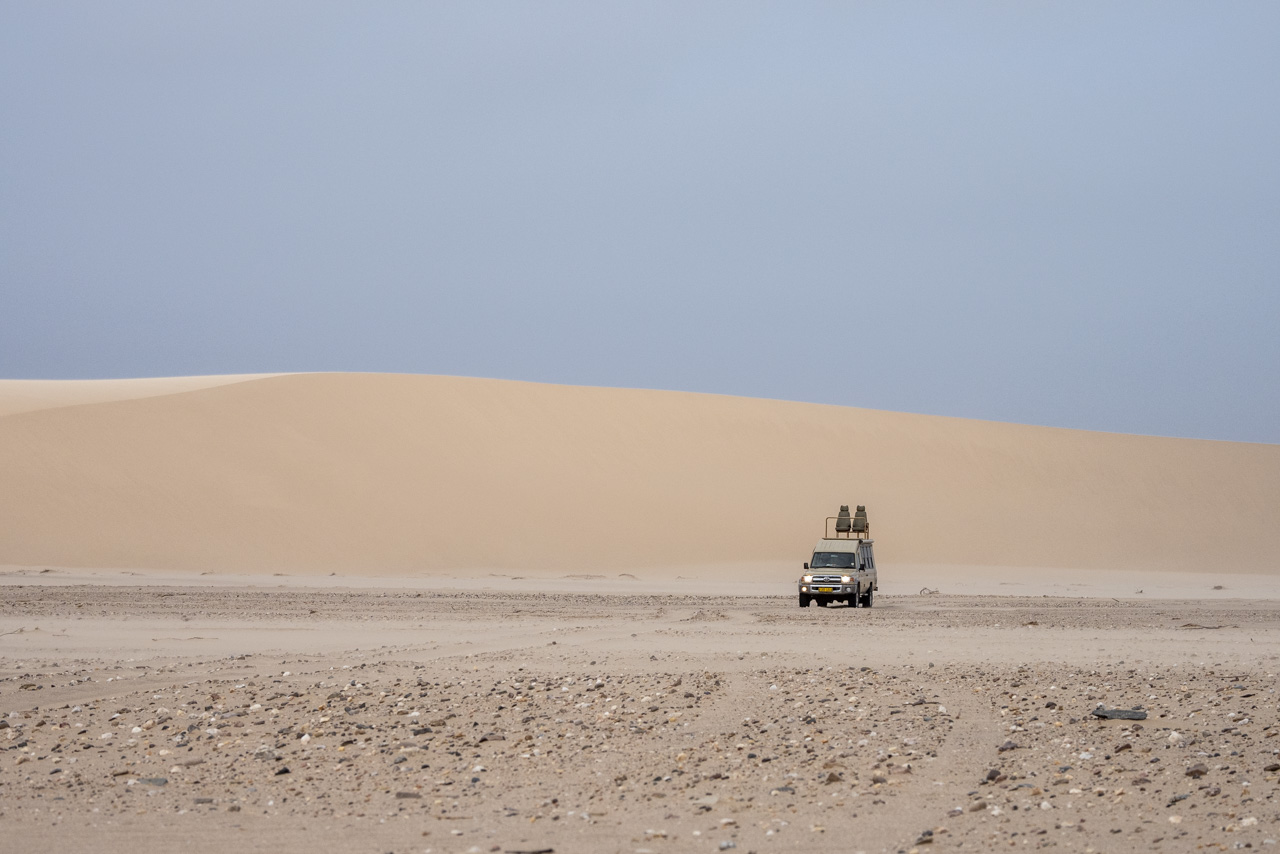
Accommodation
The Skeleton Coast is a special place. Rough, sometimes inhospitable, secluded and majestic, and for that very reason attractive. Shipwreck Lodge is the only lodge within the Skeleton Coast National Park. It is located a few hundred meters inland on the first sand dunes, but the sea is clearly visible and can be reached on foot in about 30 minutes.
Each of the 10 rooms have been constructed to resemble the shipwrecks that line the beach, slightly inclined in the sand and bracing itself against the stiff sea breeze. Large windows allow a clear view of the sand dunes and the sea. The cozy bedroom has wooden ceilings and a warming stove for the cold days. A dressing room with tea/coffee station connects to the bathroom, which is equipped with a double sink, shower, toilet and portholes. All rooms have a sofa, which can be used as an extra bed for a triple, or even as a double bed for families with two children.
The first part of the Skeleton Coast from Swakopmund to the north is open to the public. The Skeleton Coast National Park itself, a 16,845 km² large nature reserve, was founded in 1973 and later linked to the Namib-Naukluft Park via the Dorob National Park.
The southern entrance of the park is located after mile 108 near the mouth of the Ugab River. If you want to enter the park from Damaraland, you have to go through Springbokwater Gate. You have to register in any case, but the permit is free of charge.
Access to the lodge is by light aircraft (charter) to Möwe Bay, followed by a road transfer to the lodge that takes about two hours. This is usually combined with a visit to the seal colony and various shipwrecks as part of a first afternoon activity.
If you are self-driving, please park your vehicle at Möwe Bay where a guide from the lodge will pick you up at 3pm. Only Self-Drivers who continue to Hoanib Valley Camp are allowed to bring their vehicle to to lodge in convoy with the camp's guide at 3pm. There are some deep sandy passages to master and confidence in driving is essential.
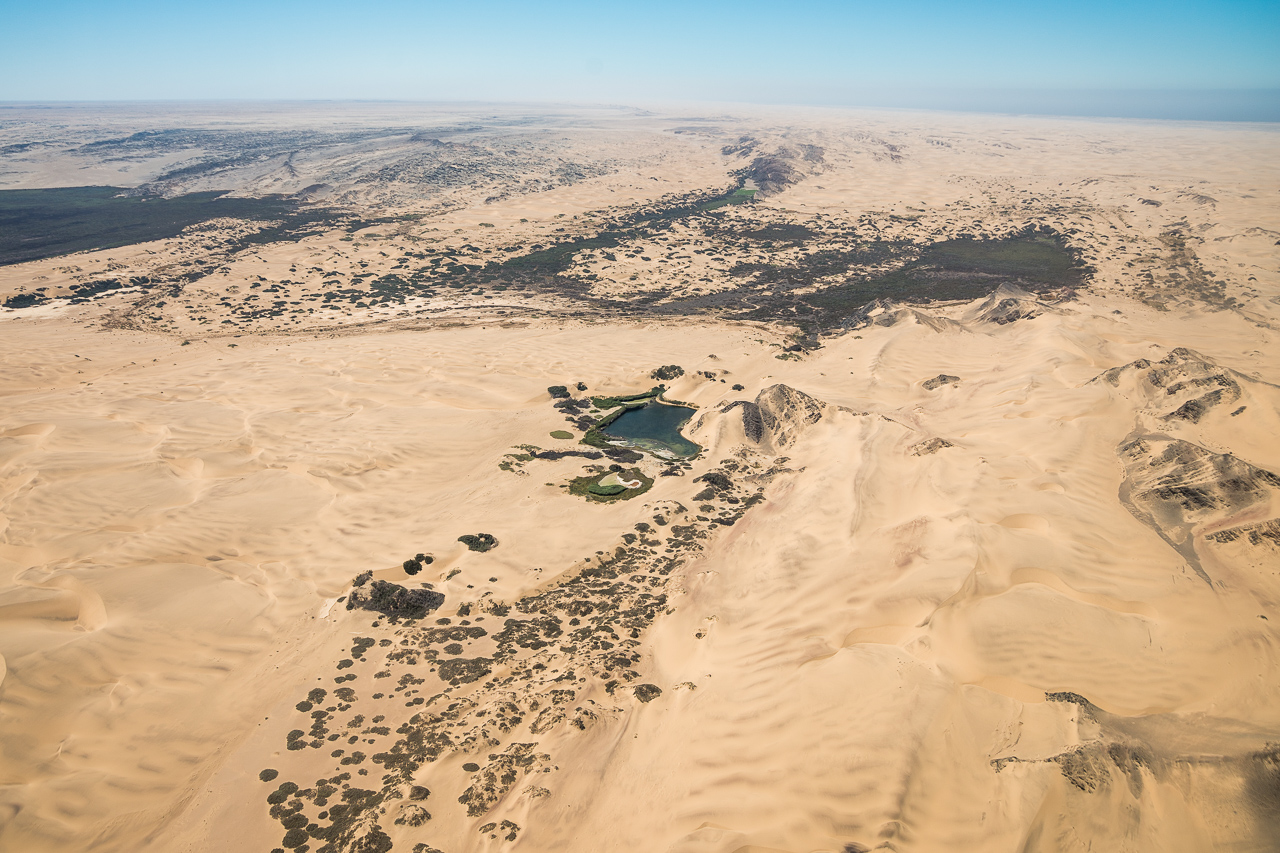
Daytime temperatures in Namibia can, for example in the Namib Desert, reach 50°C during the summer months, but also drop to 0°C at night, which is a massive fluctuation. The coast receives little to no rain because cold ocean currents from the Antarctic (Benguela Current) create offshore crosswinds that prevent clouds from reaching the mainland (similar to the Atacama Desert in Chile). However, this leads to an increase in the formation of fog, making it difficult for ships to navigate.
More than a thousand shipwrecks strewn the length of the coast bear witness to the region’s many tragic events. John Henry Marsh coined the term ‘Skeleton Coast’ in his account of the Dunedin Star shipwreck.
Despite this, there is still an abundance of life along the Skeleton Coast – the ocean is teeming with fish and plankton, which in turn attracts whale. There are also large colonies of seal at Cape Cross, Cape Fria and Möwe Bay, for example, and these attract hyena and jackal.
The first section of the Skeleton Coast, from Swakopmund northwards, is public. The neighbouring Skeleton Coast National Park, a 16’845 km² nature reserve that was proclaimed in 1973, is now joined seamlessly to the Namib Naukluft Park via the Dorob National Park. The southern entrance to the park is at mile 108, close to the Ugab River estuary. A permit is necessary to enter the park. It is possible to drive through the southern part, and most people leave again via the Springbokwasser Gate in the direction of Damaraland. It is forbidden to drive in the northern part of the park, from Terrace Bay to Kunene Mouth, unless you have a very rare tour operator’s permit.
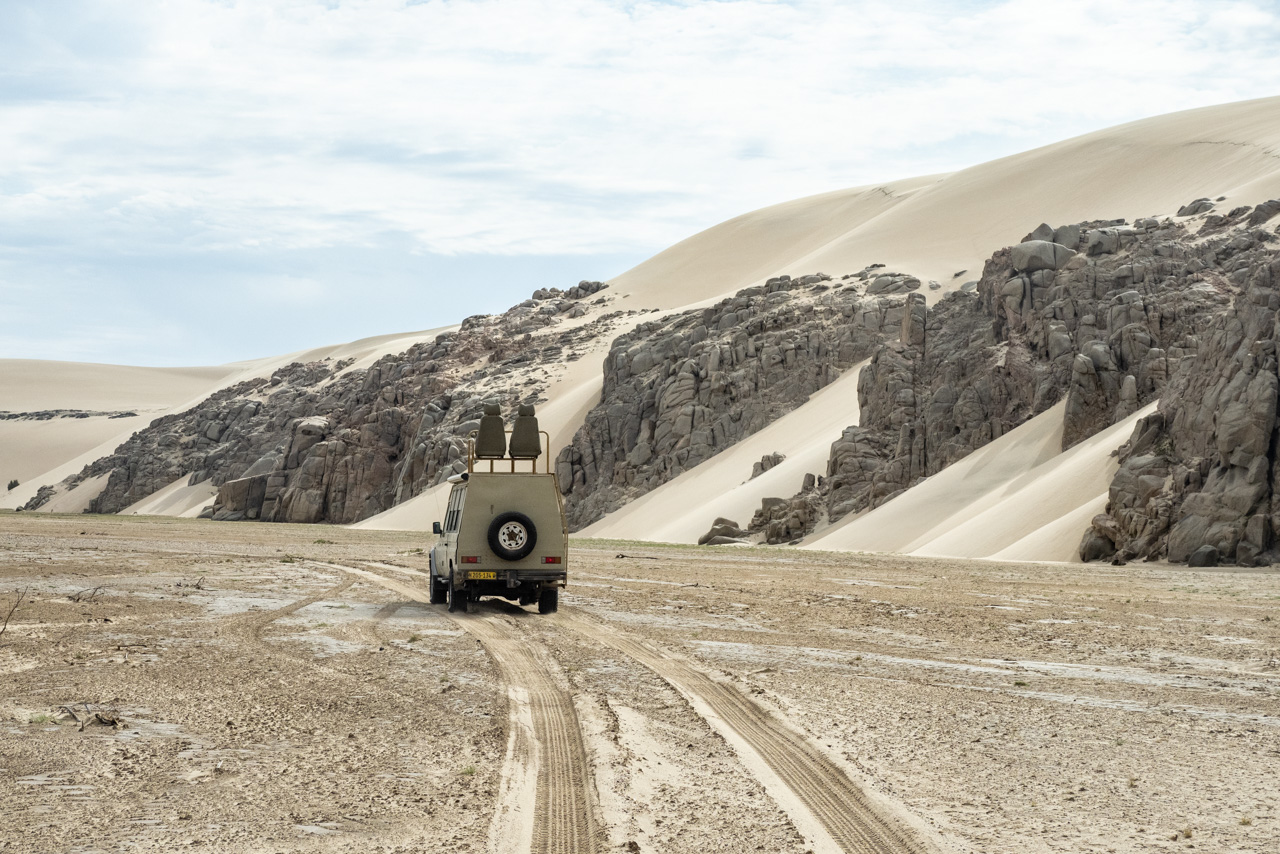

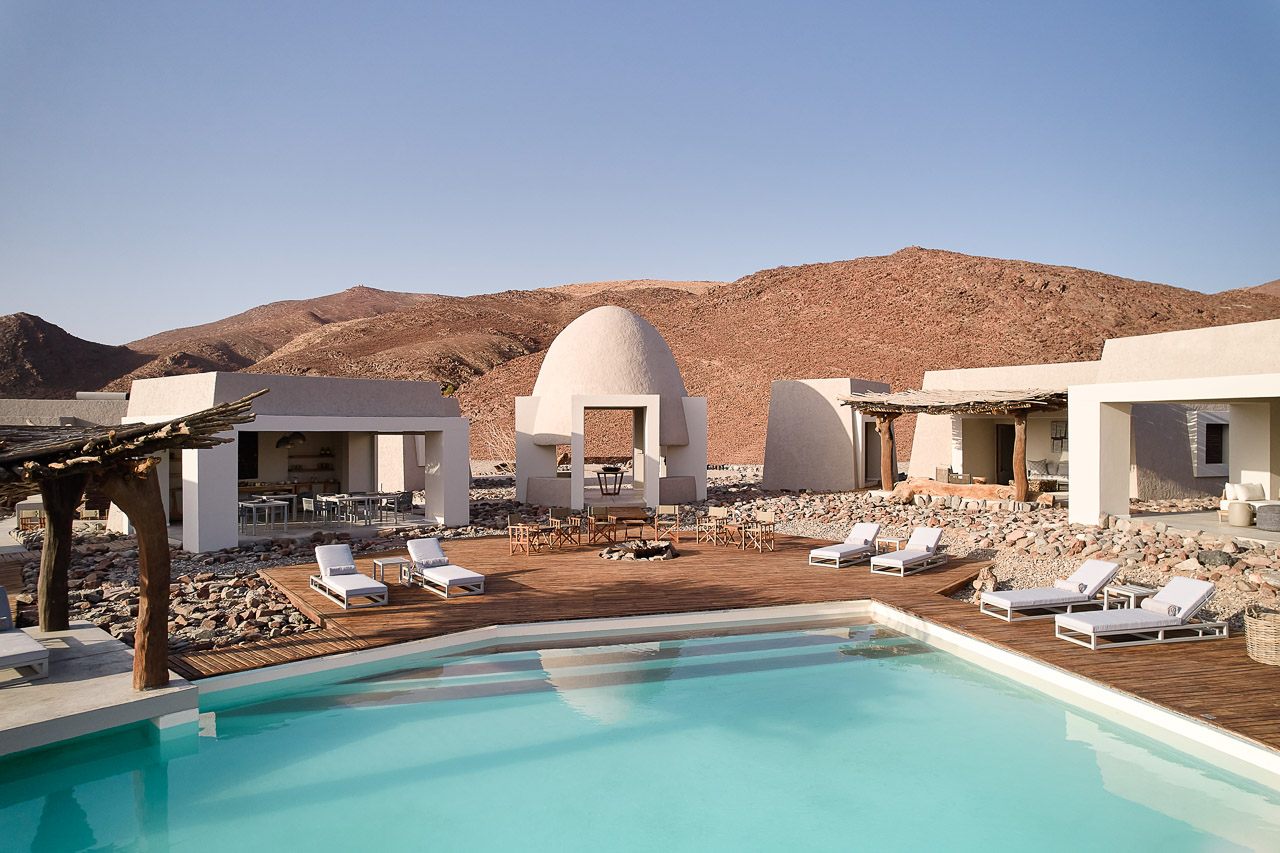
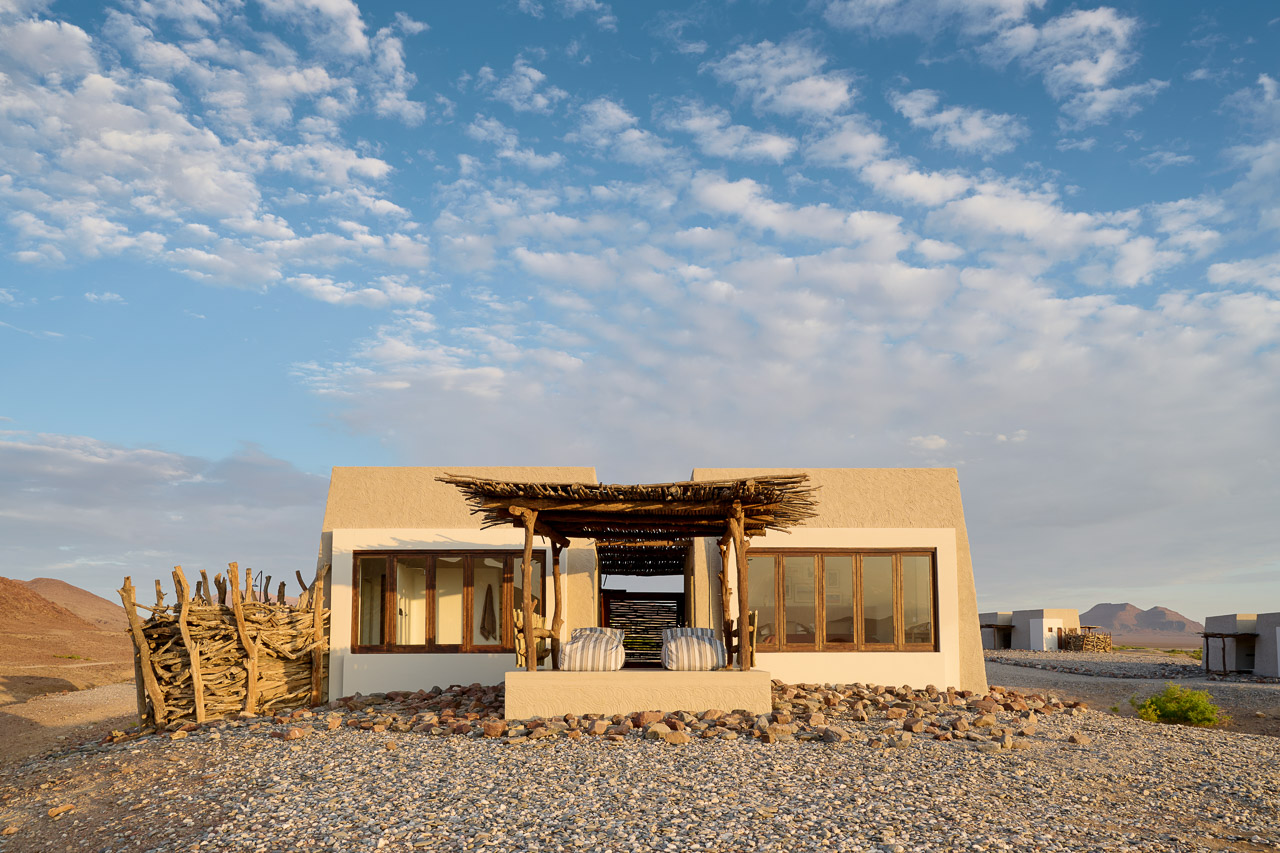
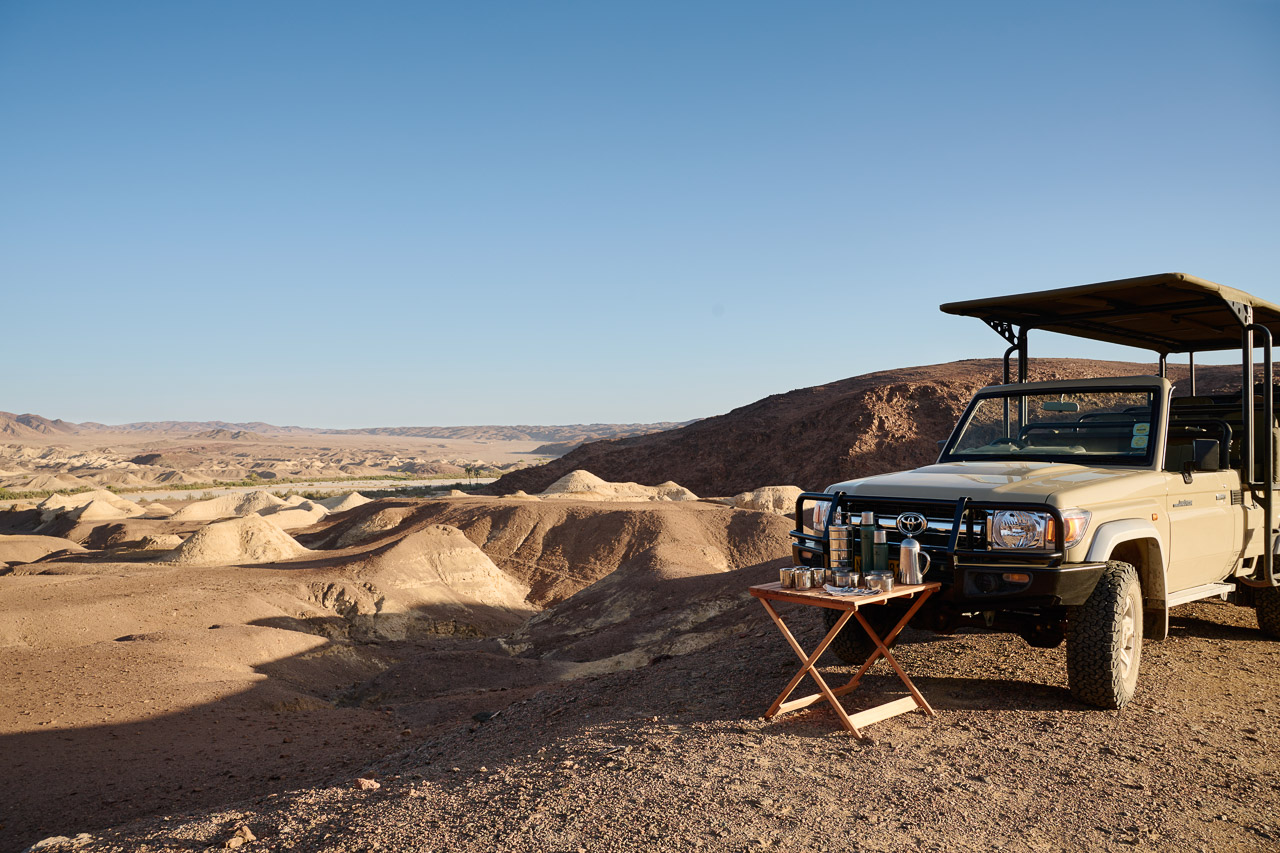
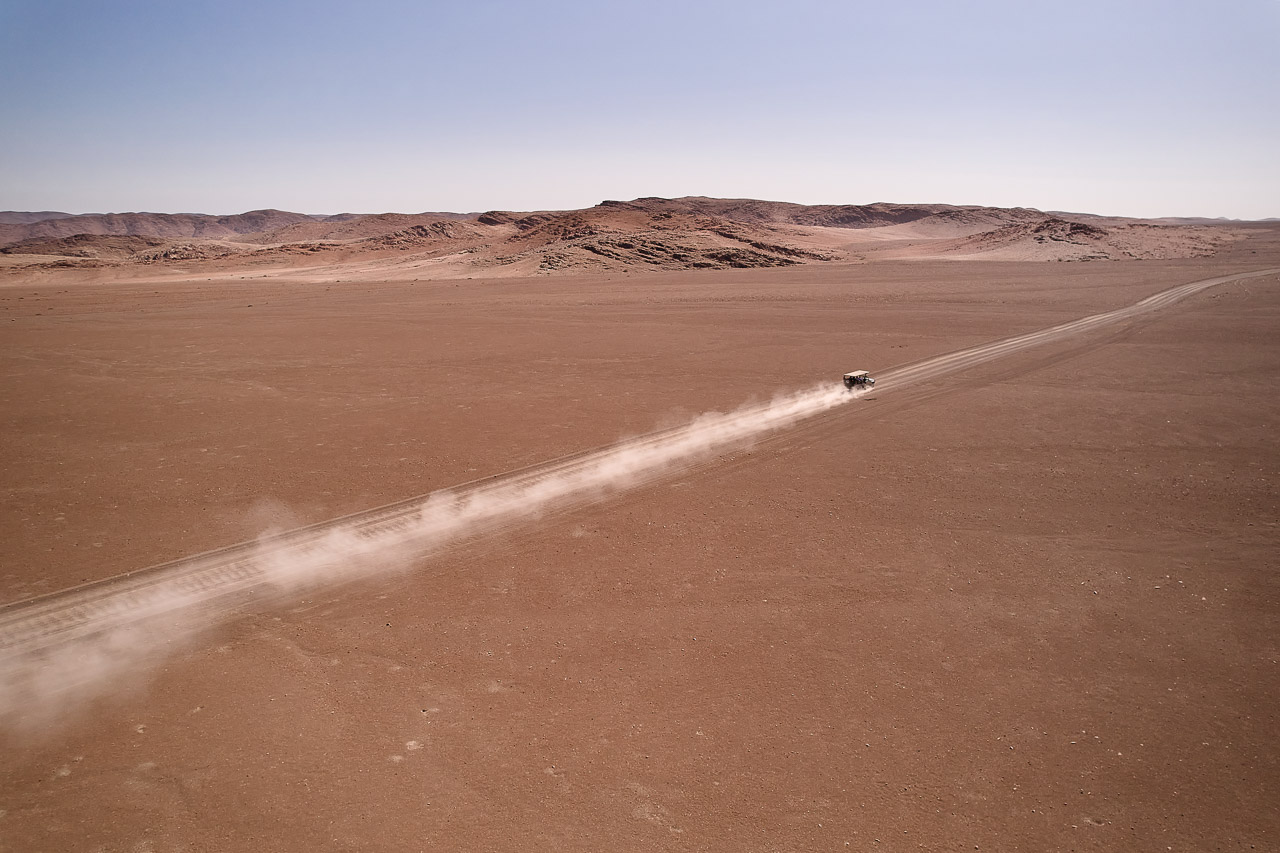
Accommodation Perched on a hill with views over the desert village of Purros, the airy and extremely elegant Okahirongo Elephant Lodge opened in the summer of 2006. The main building is spacious and open-plan, yet still offers guests intimacy and privacy with its selection of lounge areas, including the library with its spectacular views. The large swimming pool invites guests to cool down in the heat of the day.
The lodge's rooms (5 double, 2 twin) are each equipped with an en-suite bathroom and an indoor and outdoor shower. Laze and gaze at the endless expanse of the Hoarusib River valley from the comfort of your own sala (daybed). The Presidential Suite offers enough space for families, and comes with two double rooms and a private lounge.
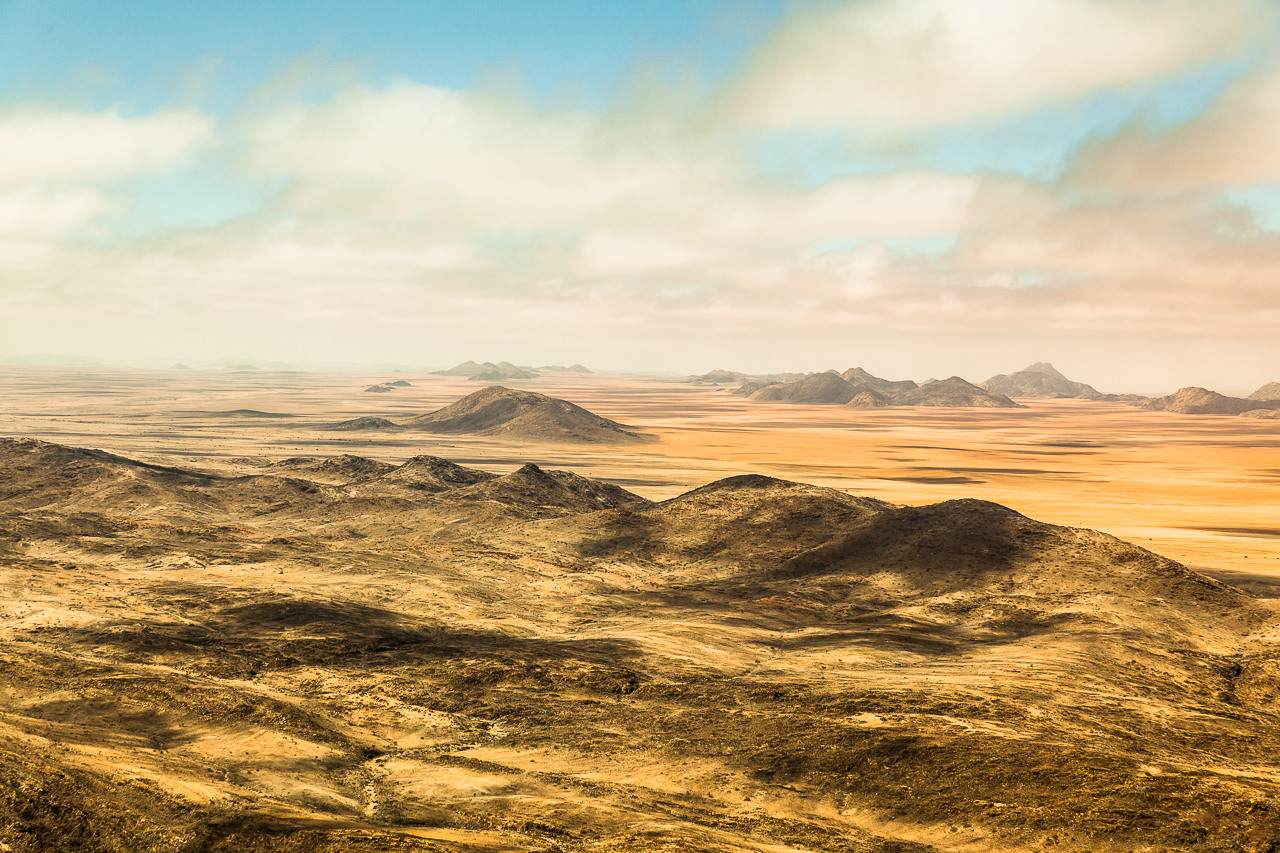
The Kaokoveld covers an area of around 50’000 km², and includes the region between the Hoanib River and the Kunene River, which marks the Angola border; the Skeleton Coast National Park marks the western border. There is little to no infrastructure here, which means the Kaokoveld is one of the few true wildernesses still in existence. The few people you’re likely to come across in this region are the semi-nomadic Himba, who have learned to survive in this sometimes extremely arid environment.
The western part of the Kaokoveld, from Sesfontein up to the Epupa Falls, is less interesting for us. We stick to little-known tracks in the hinterland and never travel on tarred roads in the Kaokoveld. Riverbeds are our roads and the starry sky is the roof above us.
If you like a combination of camping in remote places and staying in beautiful lodges, then our Kaokoveld Expeditions are perfect for you. Not only is the landscape fascinating here, we also often come across desert elephant, giraffe, zebra, oryx and sometimes even lion and rhino. This is one trip you will never forget.

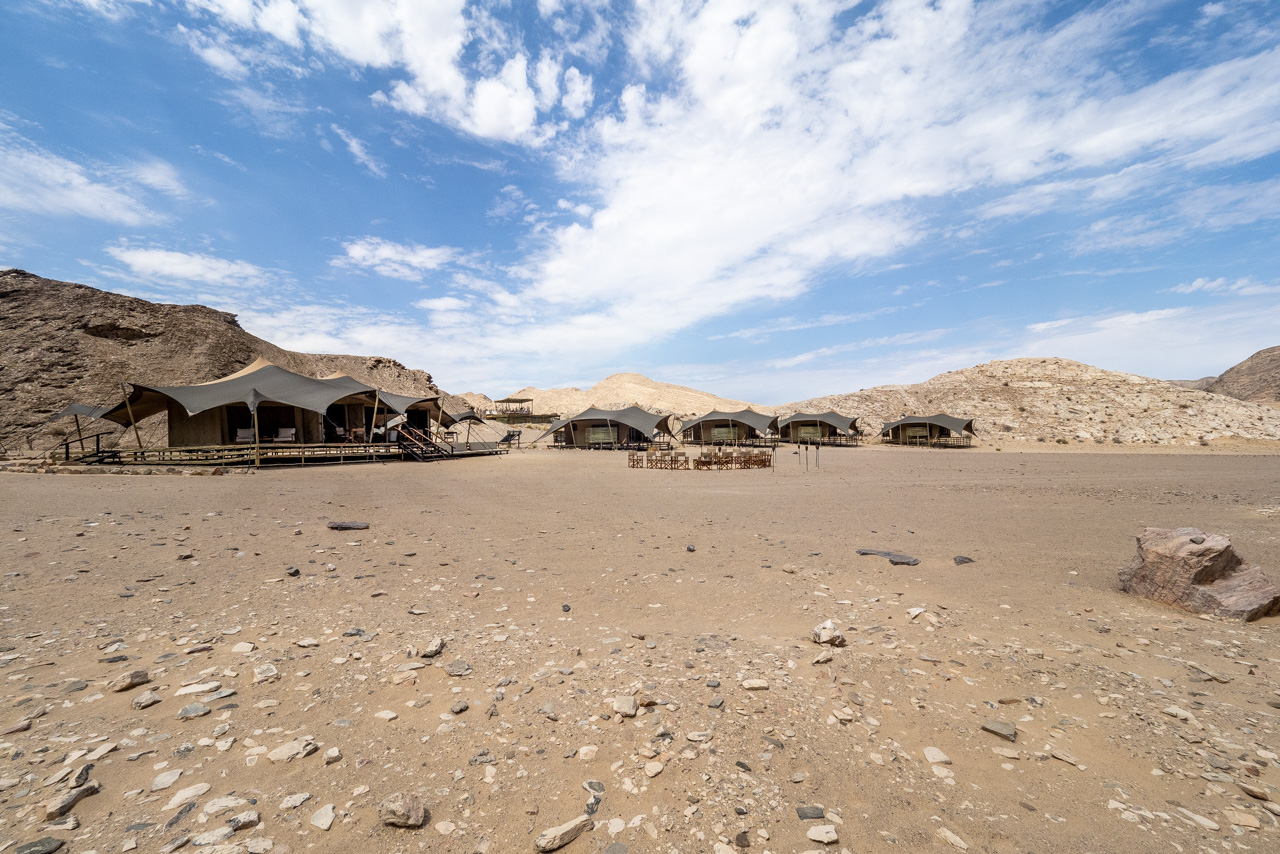
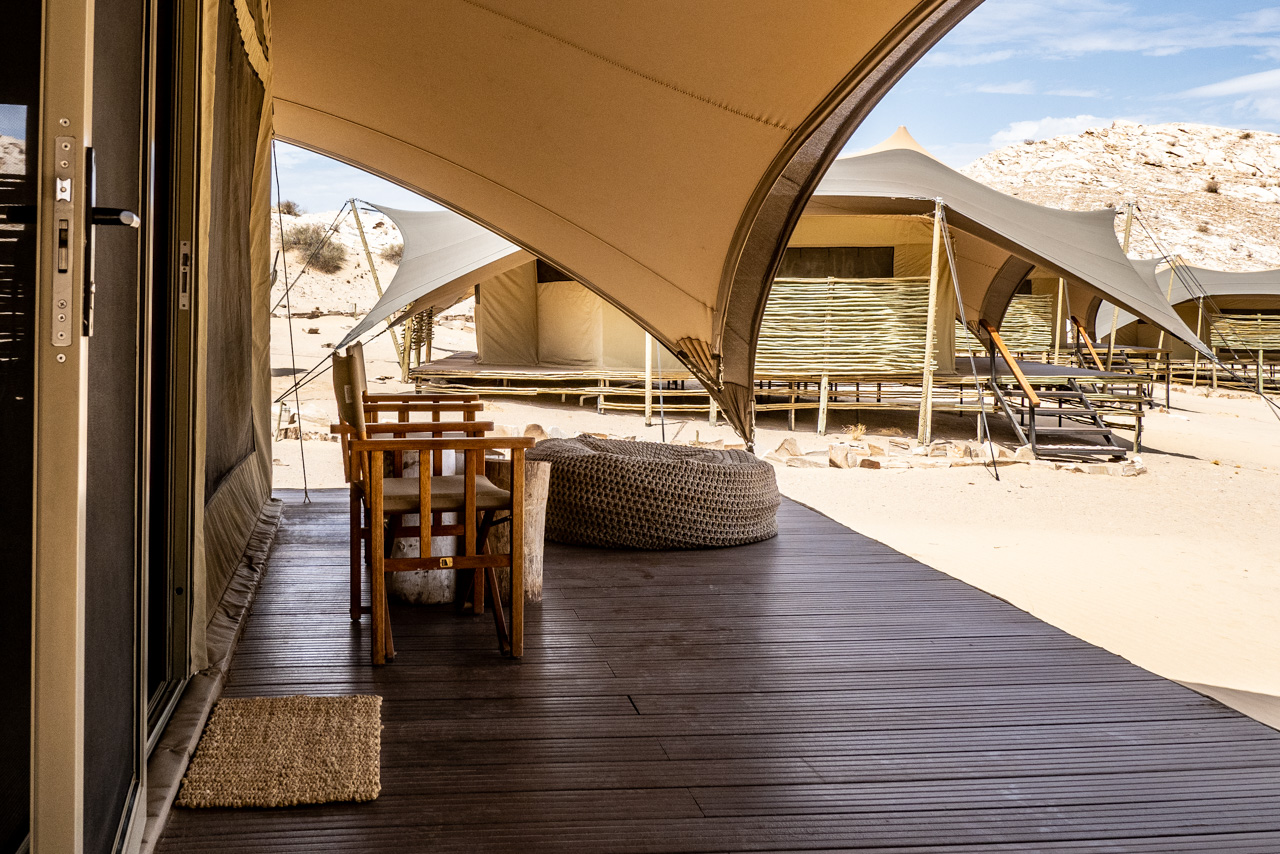
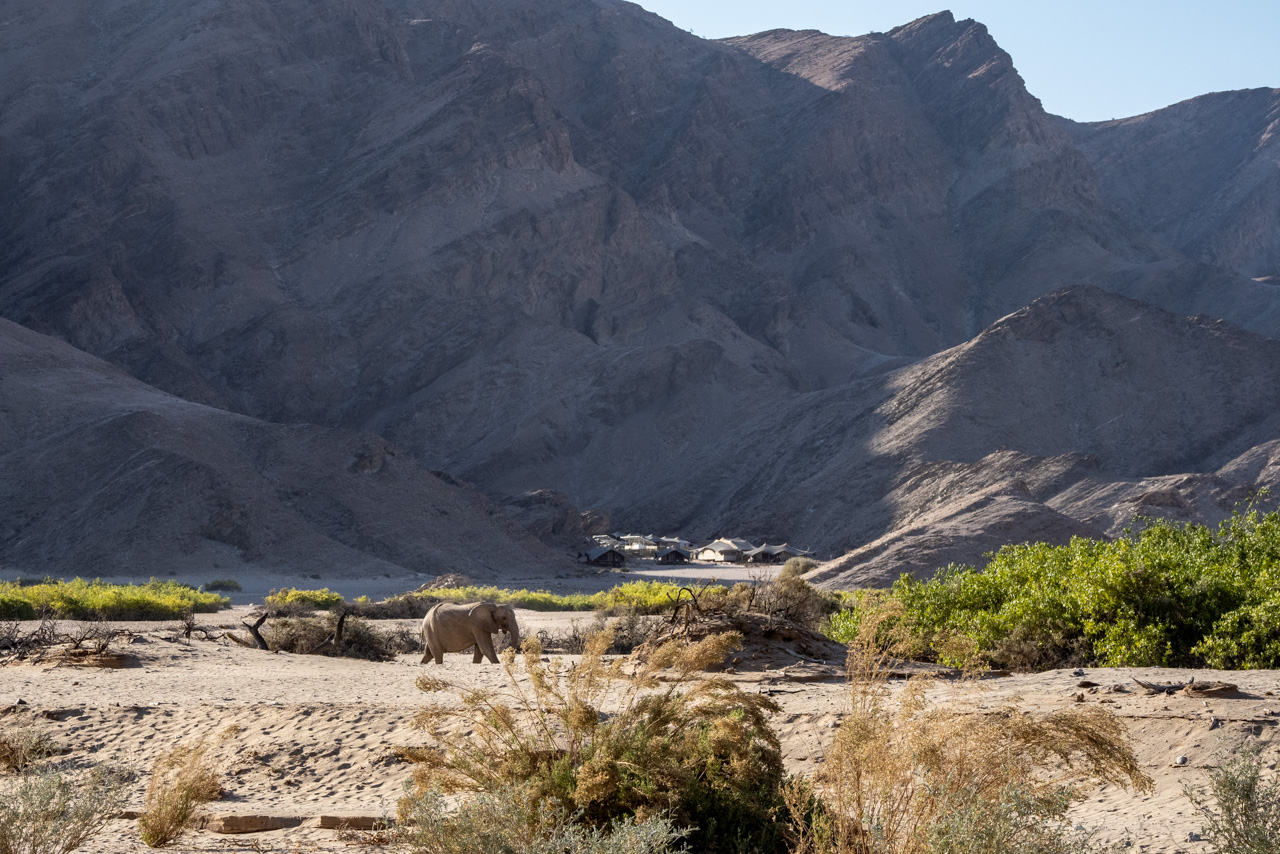
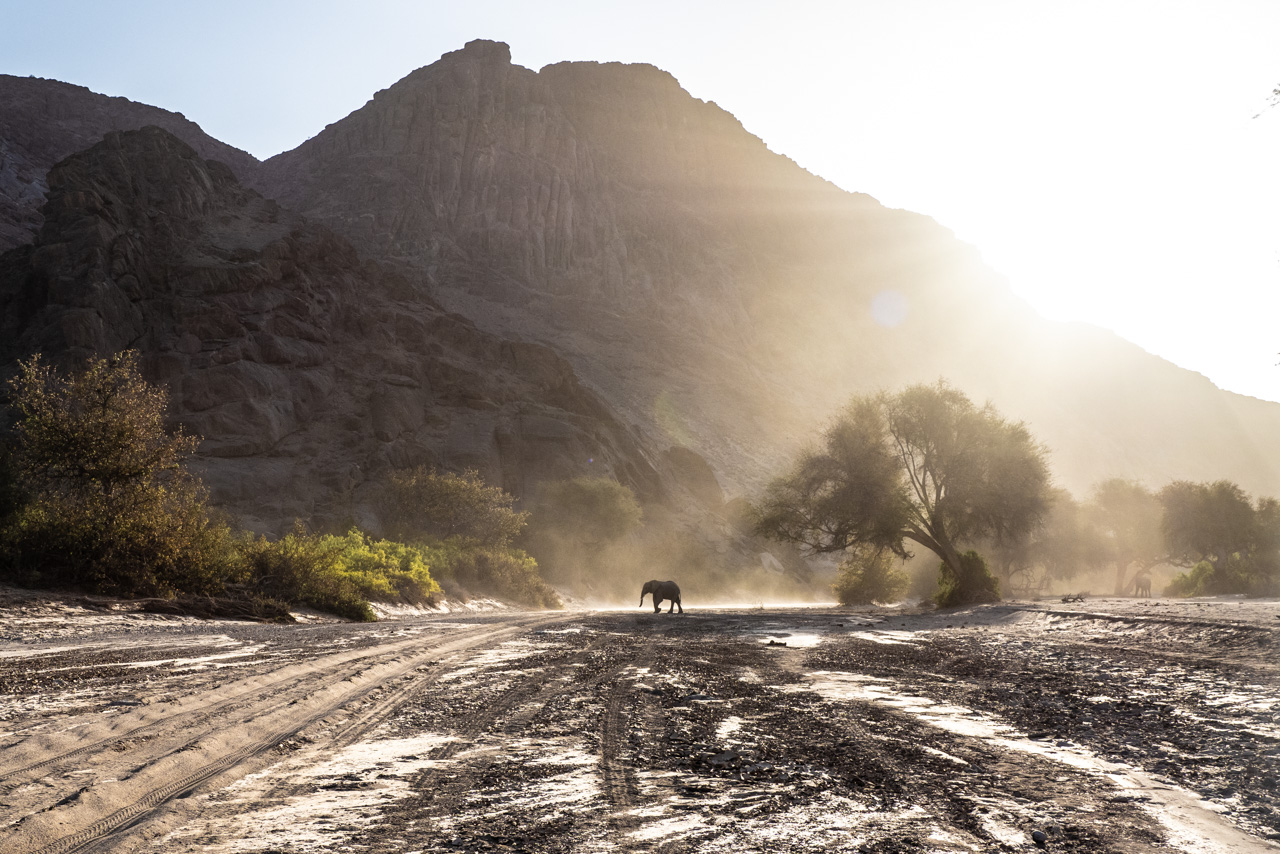
Accommodation Hoanib Valley Camp is a new camp in the Hoanib Valley. It offers six tents with en-suite bathrooms, indoor & outdoor shower and a shaded outdoor lounge. One of the tents is larger and is used for families.
The six guest tents blend almost perfectly into the rugged environment. The colours, textures and patterns are inspired by the experience of the Hoanib; the rich ochre of the dunes, the geometric patterns of the Himba people and, of course, the giraffe that inspired the project.
The camp is a joint venture with the local community and with the NGO the Giraffe Conservation Foundation (GCF).
The area is part of the Kaokoveld, a land of rugged scenery, mountains, vast plains, and dry riverbeds inhabited by incredible desert-adapted plant and animal life.
Self-Drivers can either drive to the camp from Sesfontein (4 x 4 required) or leave the vehcile at Sesfontein at a secure parking. The camp organizes transfers, leaving Sesfontein at 3pm and departing from camp at 09 am.
Flights are planned from Windhoek to Fort Sesfontein, and down to Shipwreck Lodge.
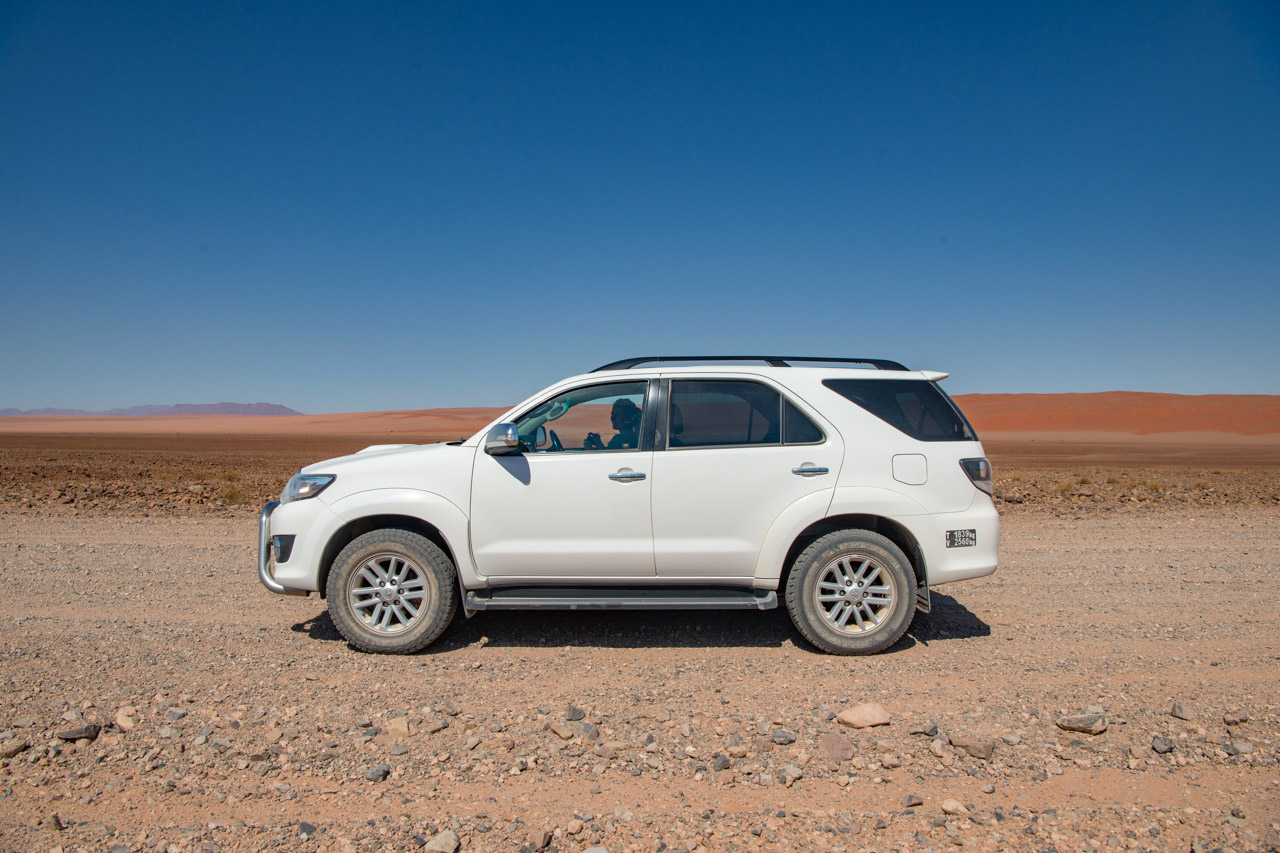

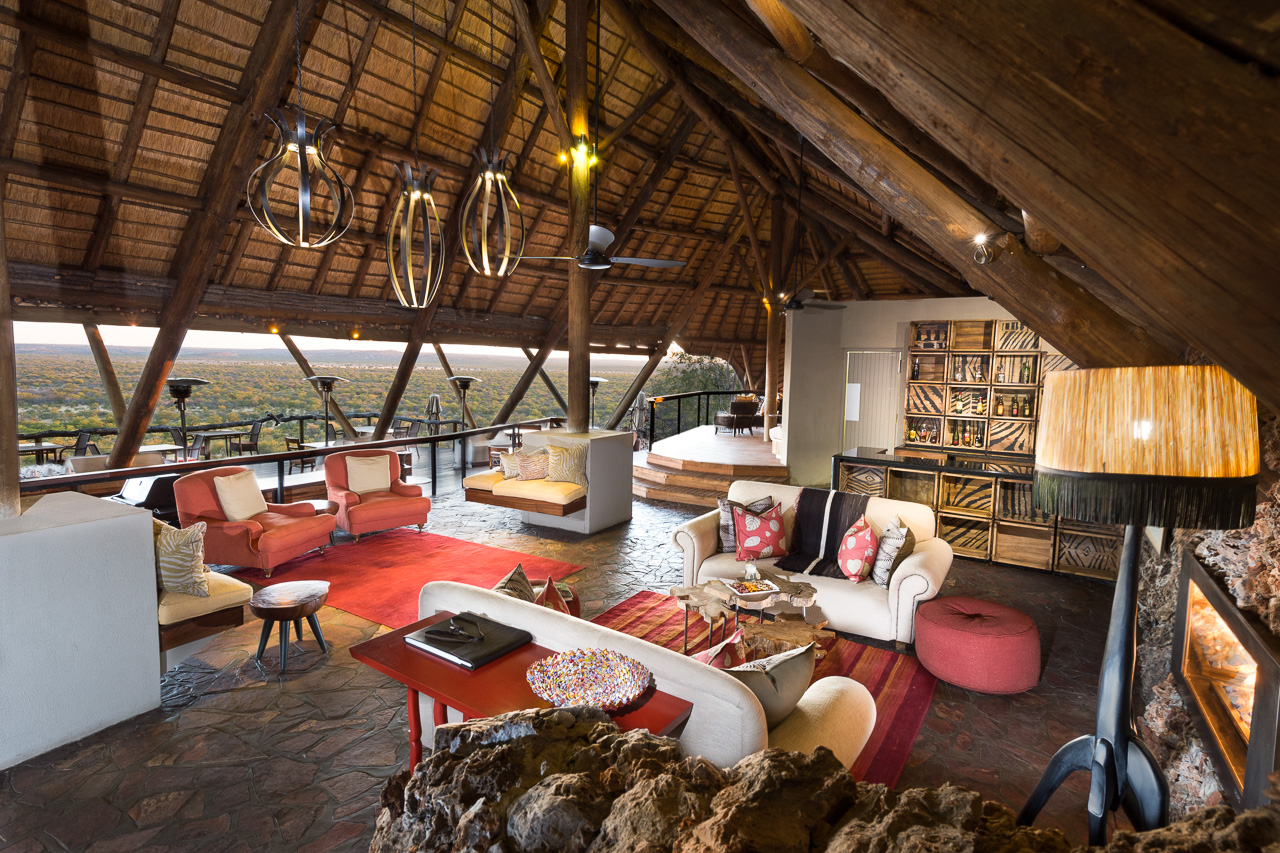
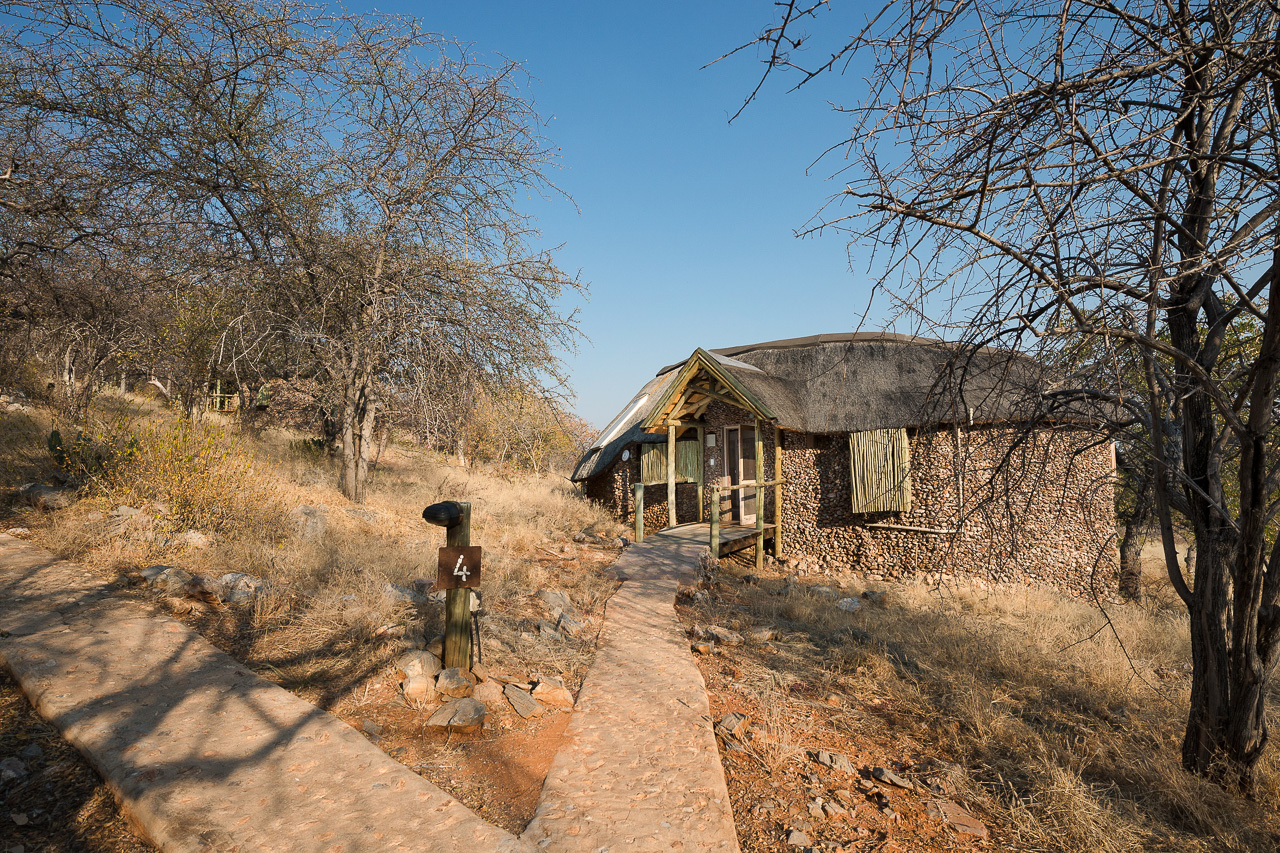
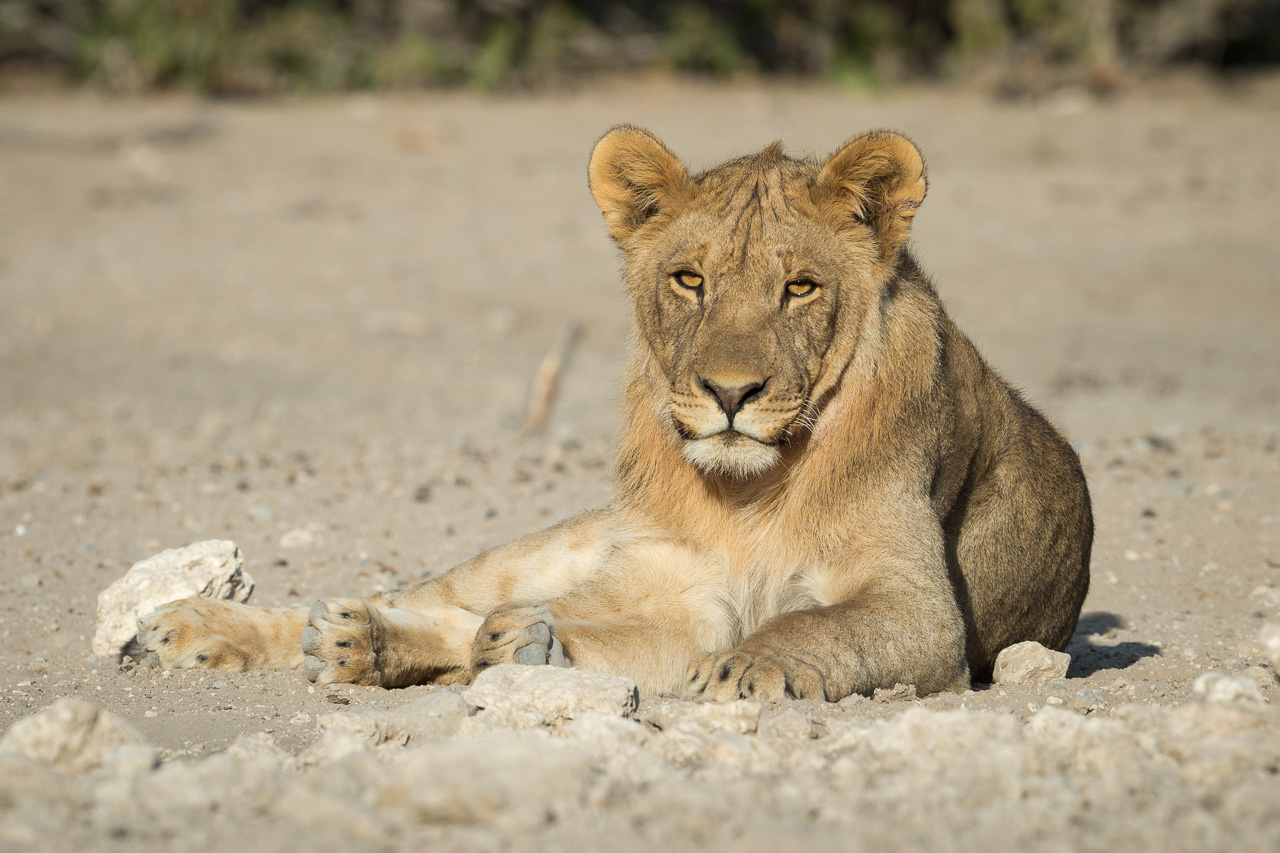

Accommodation
Constructed on a small hill, the lodge's fourteen pleasant, thatched stone houses with en-suite bathrooms and air-conditioning are spacious and comfortable. Each room has a beautiful terrace with loungers and an outdoor shower. The slightly raised main building offers a fantastic view of the waterholes. Meals are often served on the veranda, from where guests can continue to enjoy the spectacular vistas.
Andersson's Camp, Little Ongava and Ongava Tented Camp are also situated in the Ongava Game Reserve.
The Etosha National Park is one of the most important nature reserves in southern Africa. It exists since 1907 and covers an area of 22,270 km². The central and eastern sections consist mainly of various silvery-white shining salt pans, which have made Etosha famous. In the dry season the park, the animals and the vehicles are covered in a whitish haze of salt dust.
On the southern shore of the huge Etosha Pan (130 x 50 km) there are several waterholes, which magically attract the animals from the surrounding area during the dry season. The three large state camps Okaukuejo, Halali and Namutoni connect Anderson's Gate in the south with the von Lindequist Gate in the east. The western part towards Galton Gate is much more wooded and less frequented by visitors, but it also offers less trails to drive around and find wildlife.
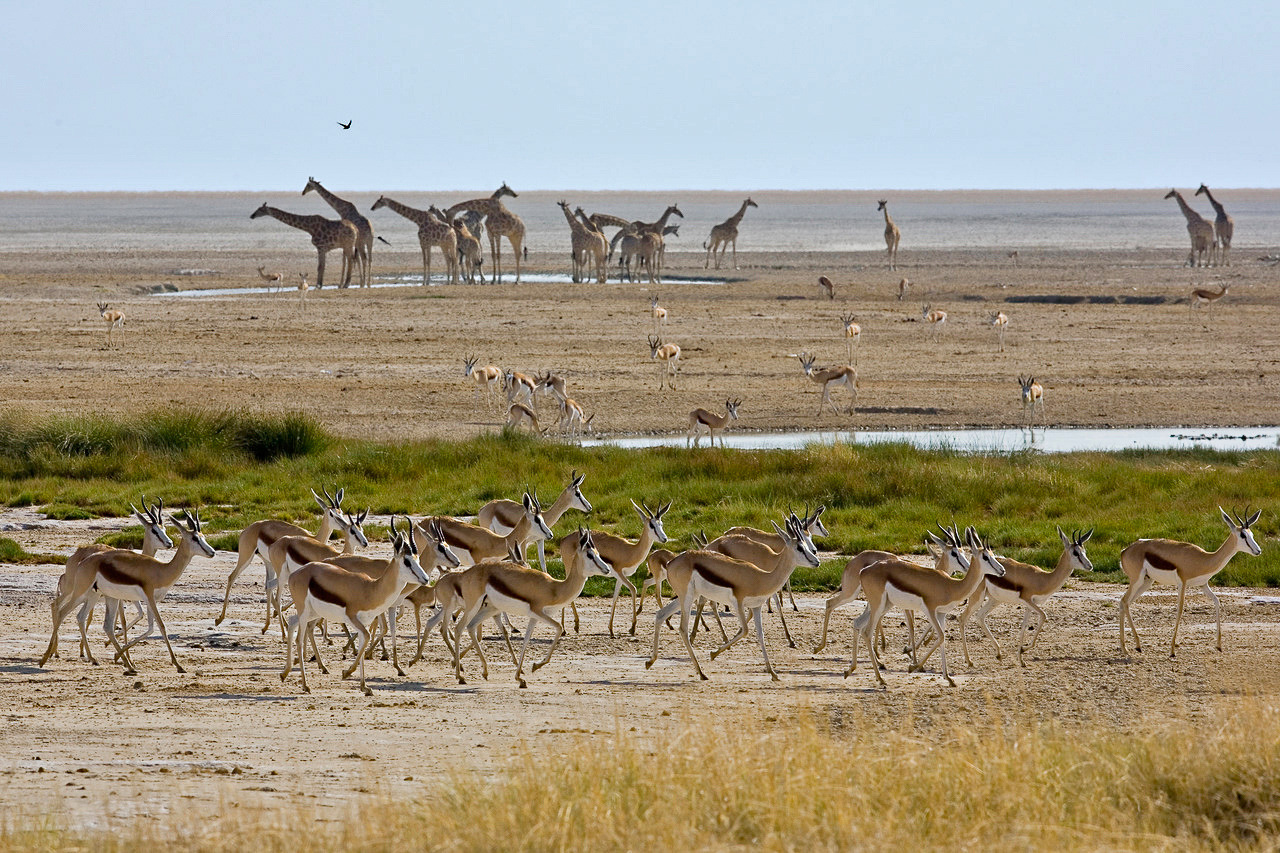
The park thrives mainly on these artificial waterholes, which attract countless animals in the dry season. With the onset of the rainy season, the animals are much less dependent on these waterholes and more difficult to find. The Etosha Pan itself can then contain up to 10 cm of water, and the park becomes more exciting for birdwatchers.
There are a few government camps in the park itself, most of which offer a less favourable experience. The good accommodation is located outside the park in private areas, in the east these are Mushara and Onguma, in the south it is the private Ongava area.
Namutoni and Okaukuejo are the two main camps at the eastern Von Lindequist Gate and the southern entrance to Etosha at Andersson's Gate respectively. The quieter Halali Camp is situated between the two. The state camps are very large and offer chalets, campsites, petrol stations and large picnic areas. If you are looking for a private experience, this is certainly not the place for you. Most of the roads run between these three camps and lead visitors to the various waterholes.
The western part of Etosha opened to visitors in 2011. This part of the park is very different from the area around the Etosha Pan, it has many more bushes and trees, less traffic, but also less to see.
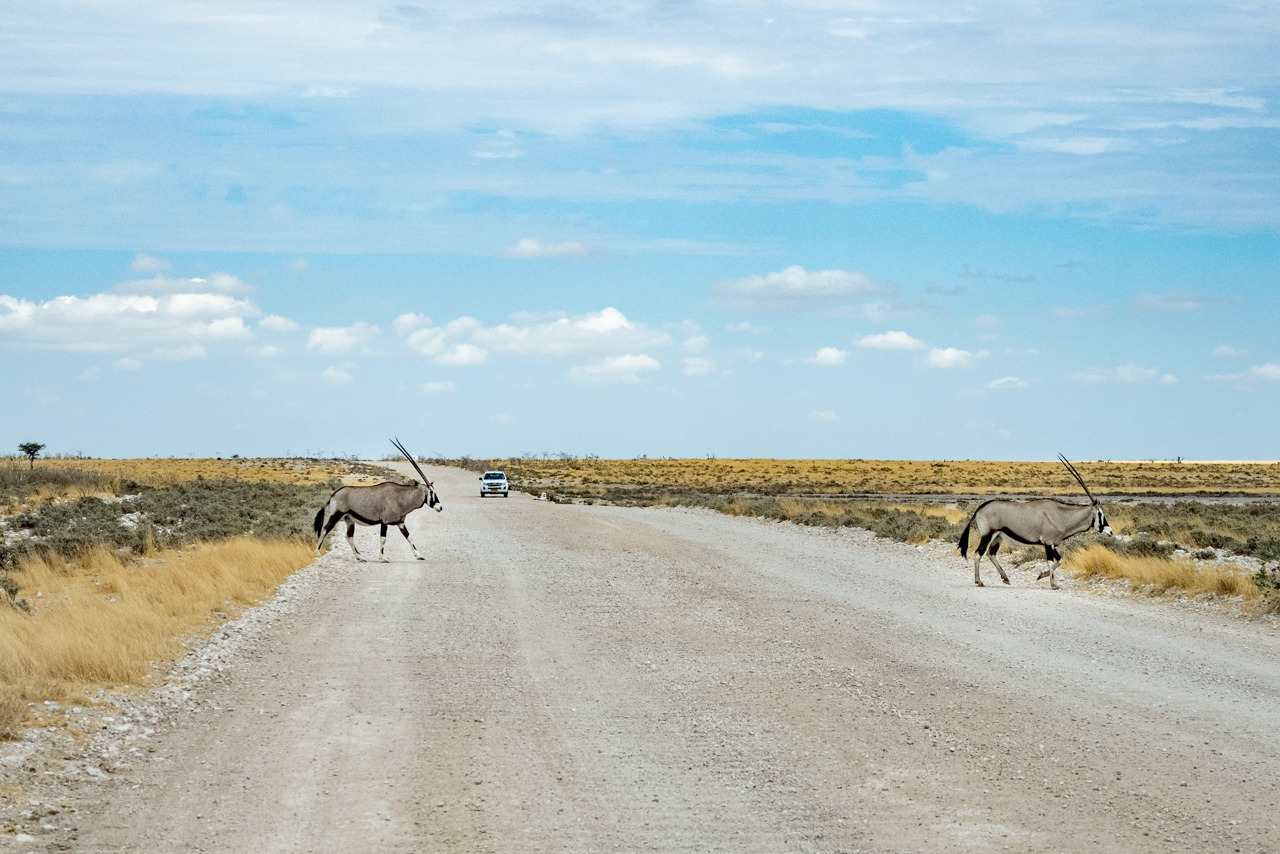
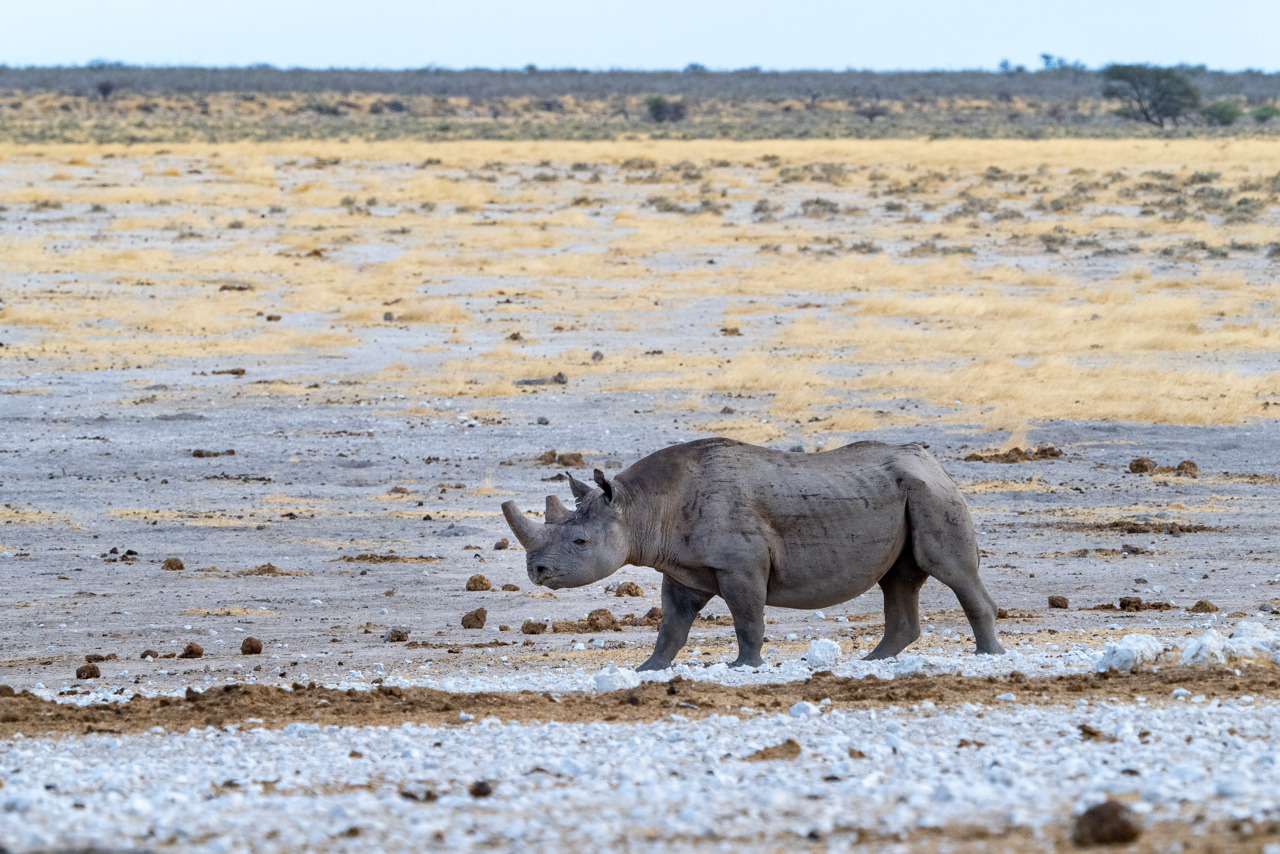
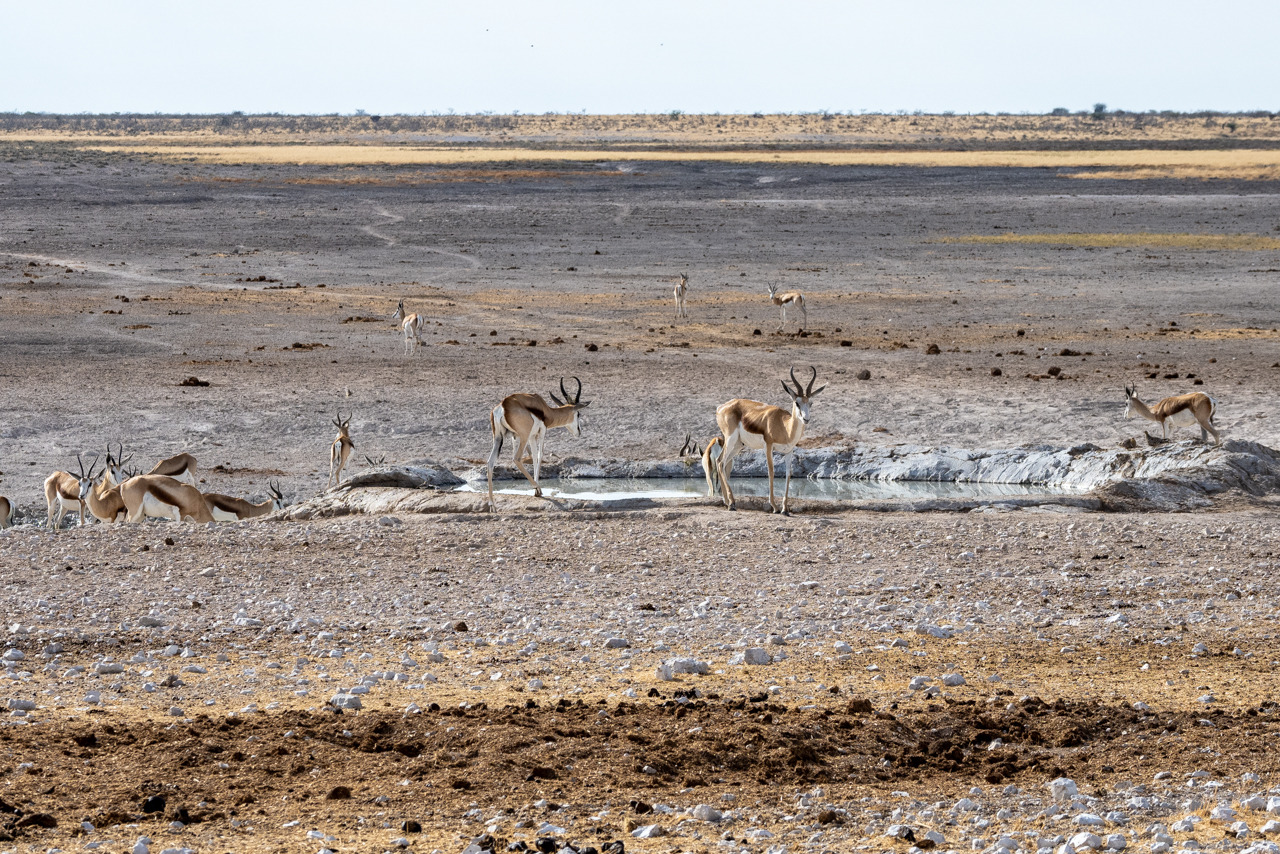
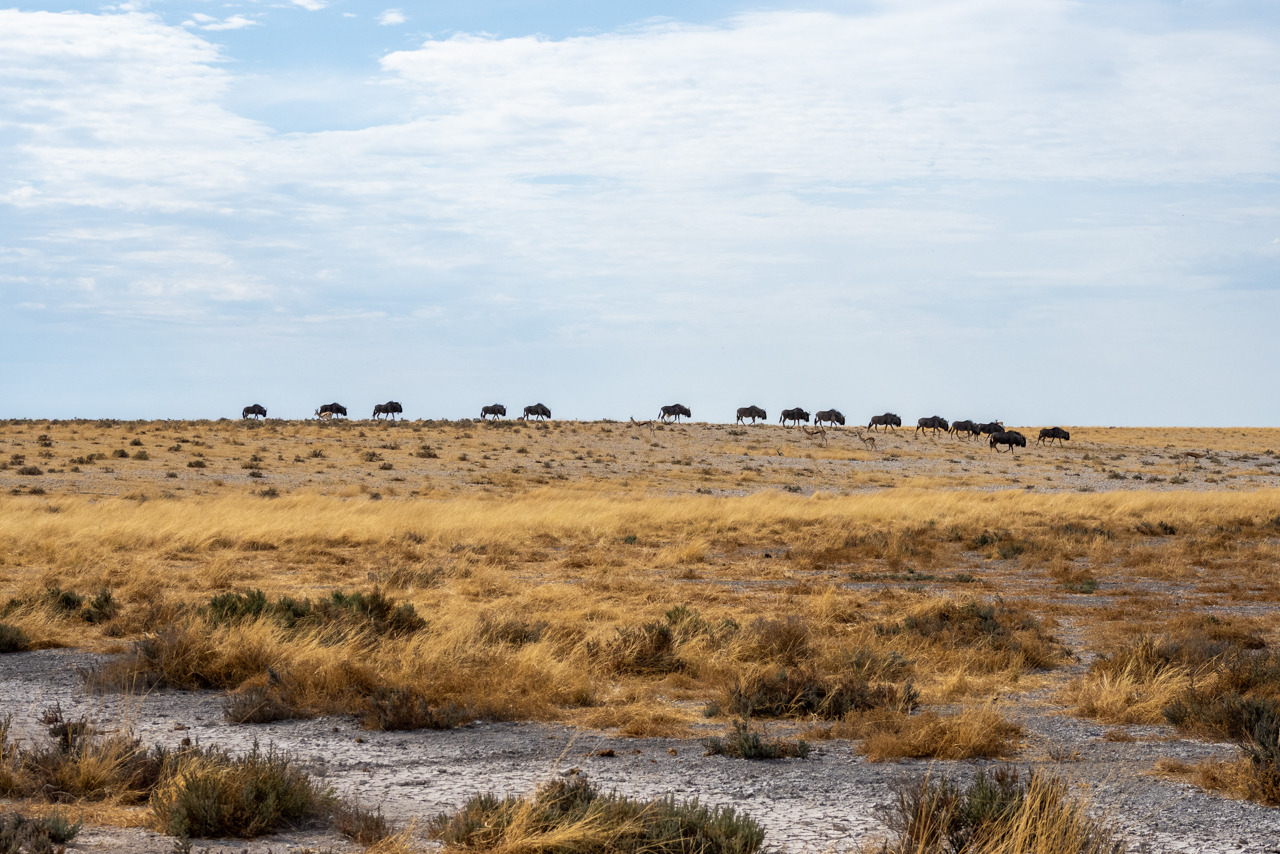
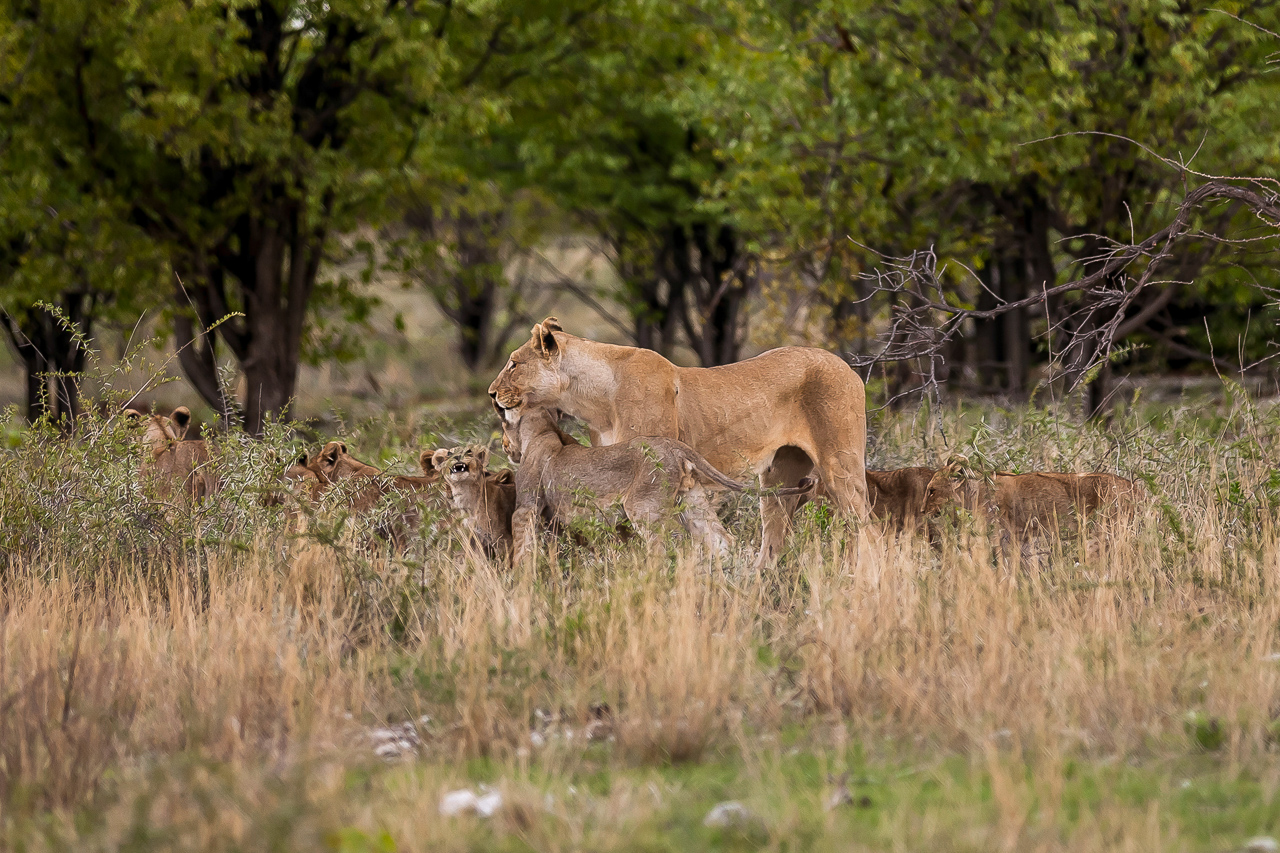
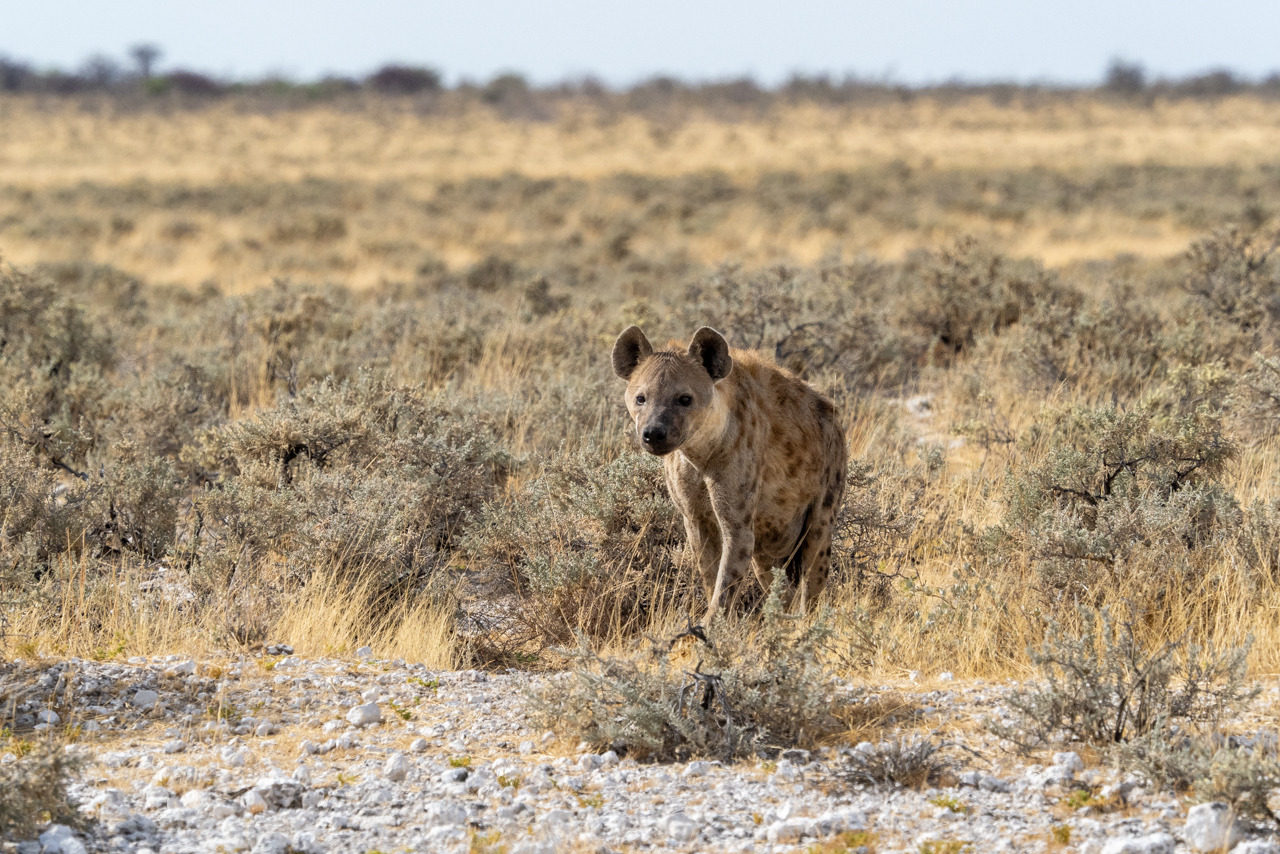

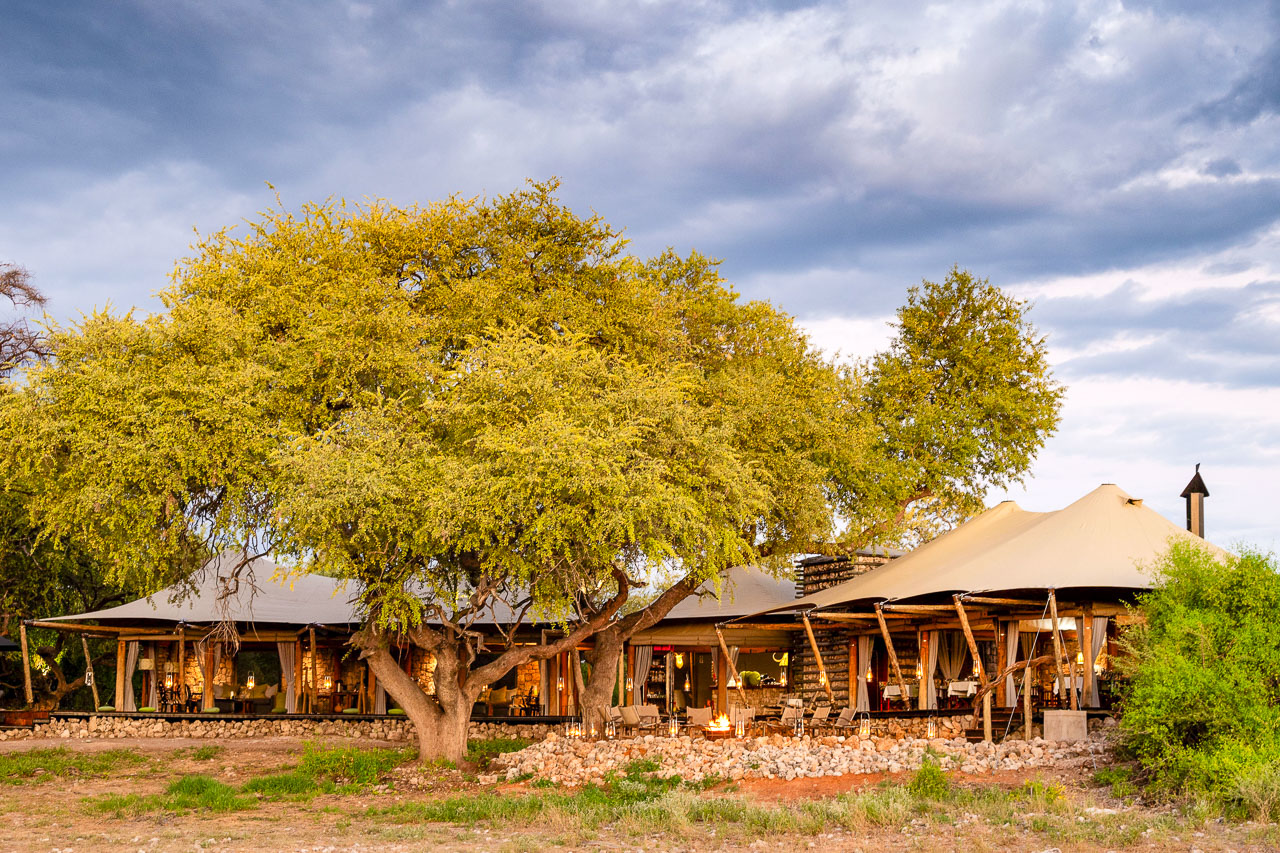
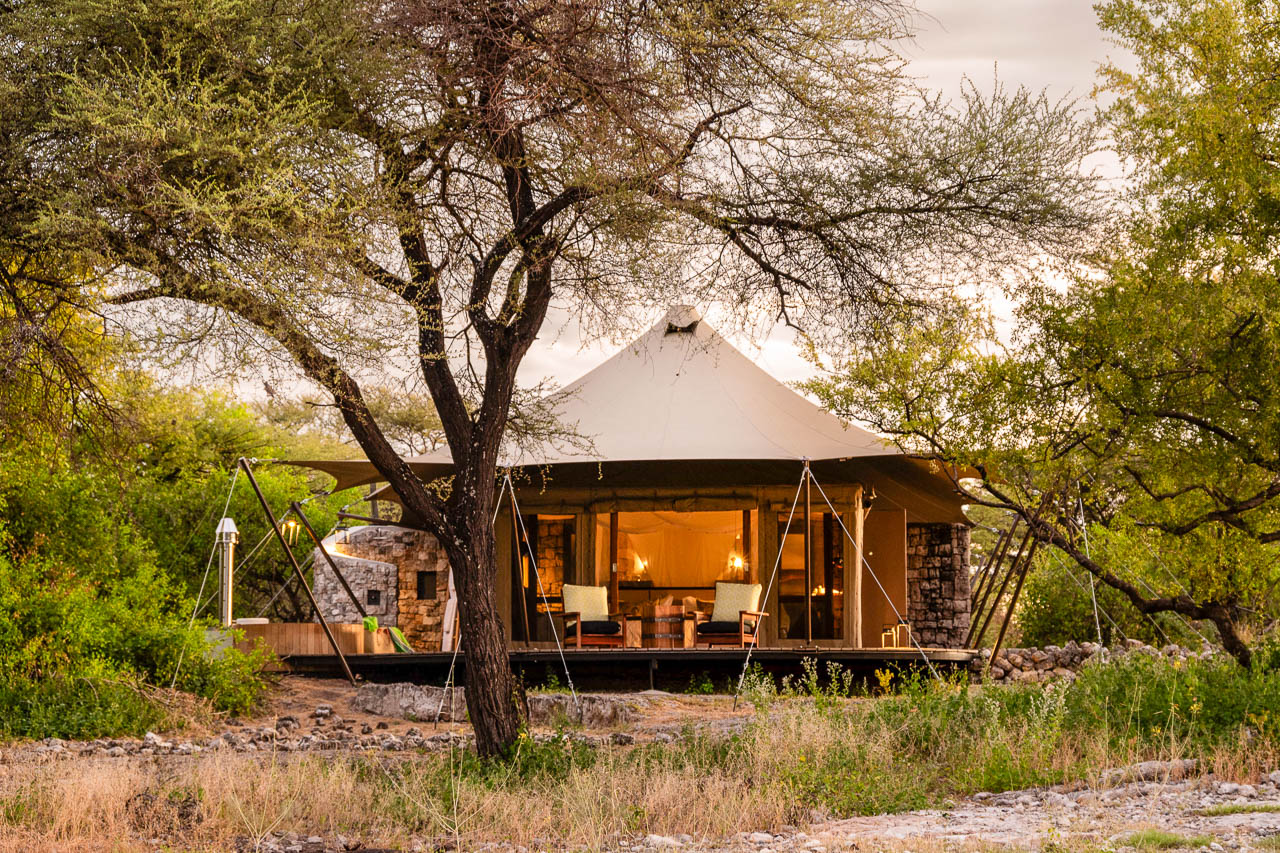
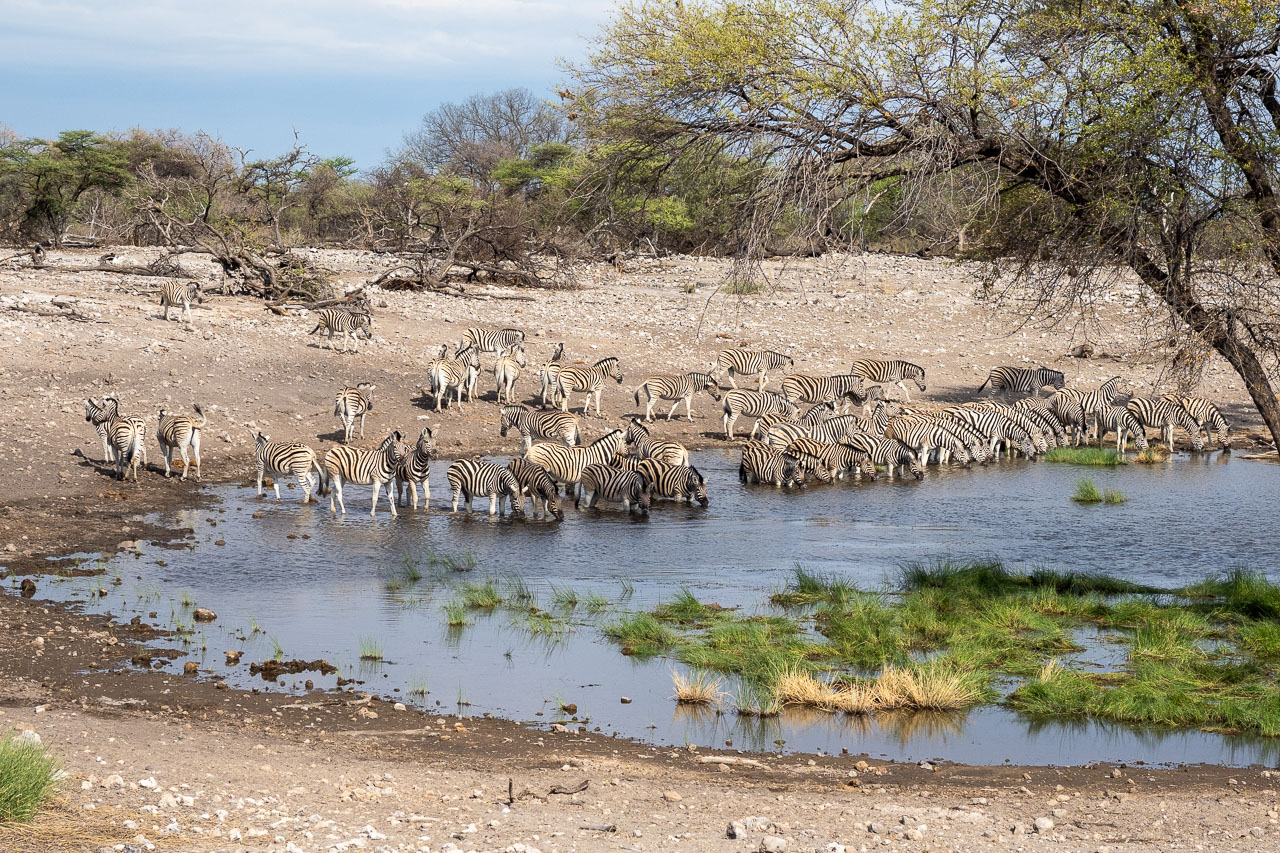
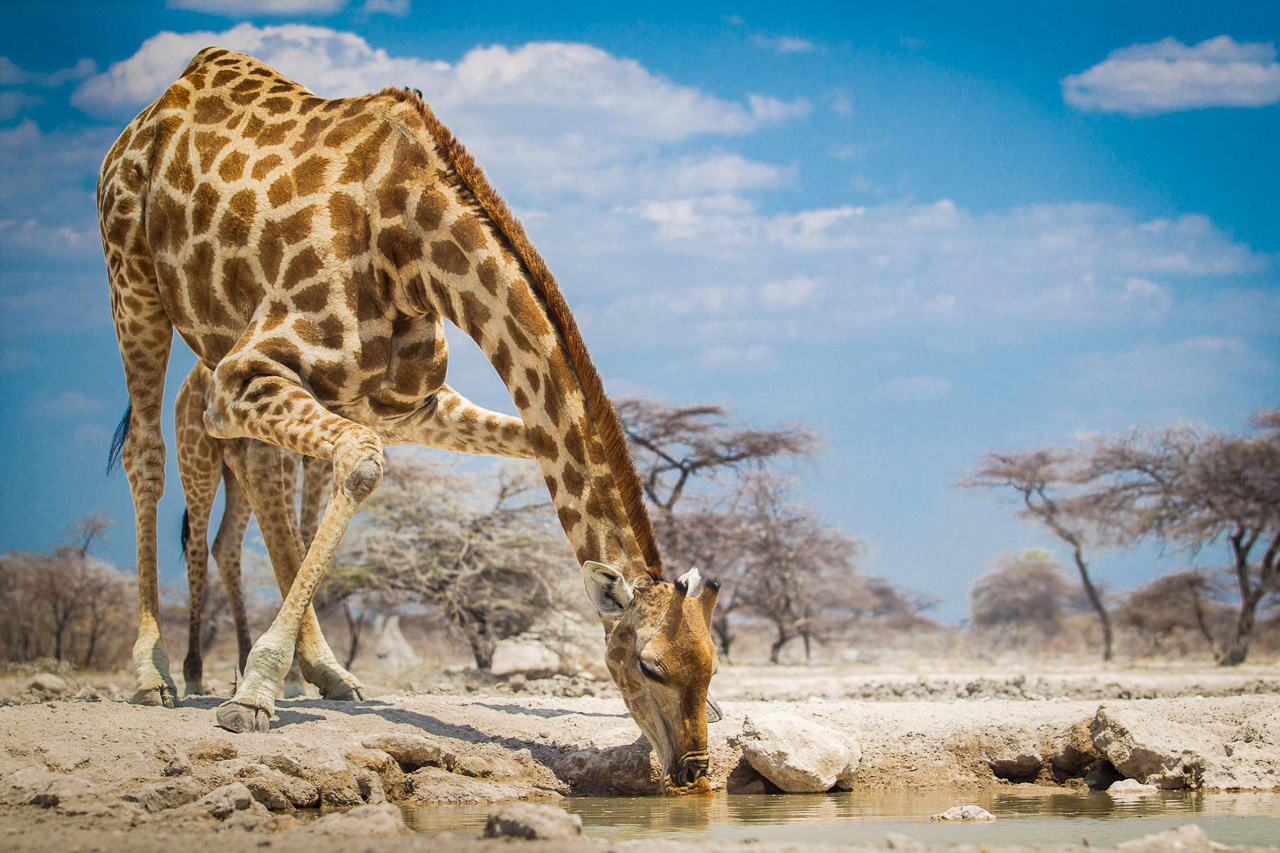
Accommodation Intimate and luxurious, Onguma Tented Camp offers uninterrupted views of a natural waterhole (lit at night) from anywhere in the camp. With a little luck, guests will encounter giraffe, jackal, antelope, zebra, wildebeest and maybe even a rare black rhino.
The main building houses a generously sized lounge, restaurant, wine cellar and swimming pool. The camp comprises just seven bright and spacious house tents, each with its own veranda, indoor and outdoor shower, elegant tin bathtub and separate WC. The light-coloured furnishings are designed to reflect the forms and colours of Etosha’s landscape.
The camp is unfenced, which means there is a minimum age requirement for our younger guests.
The Etosha National Park is one of the most important nature reserves in southern Africa. It exists since 1907 and covers an area of 22,270 km². The central and eastern sections consist mainly of various silvery-white shining salt pans, which have made Etosha famous. In the dry season the park, the animals and the vehicles are covered in a whitish haze of salt dust.
On the southern shore of the huge Etosha Pan (130 x 50 km) there are several waterholes, which magically attract the animals from the surrounding area during the dry season. The three large state camps Okaukuejo, Halali and Namutoni connect Anderson's Gate in the south with the von Lindequist Gate in the east. The western part towards Galton Gate is much more wooded and less frequented by visitors, but it also offers less trails to drive around and find wildlife.
Etosha National Park is Namibia's premier safari destination. Covering almost the same area as Switzerland, Etosha is one of the largest national parks in Africa. To the west of the park lay the silvery white salt pans and adjoining waterholes, which magically attract all kinds of wildlife during the dry season.

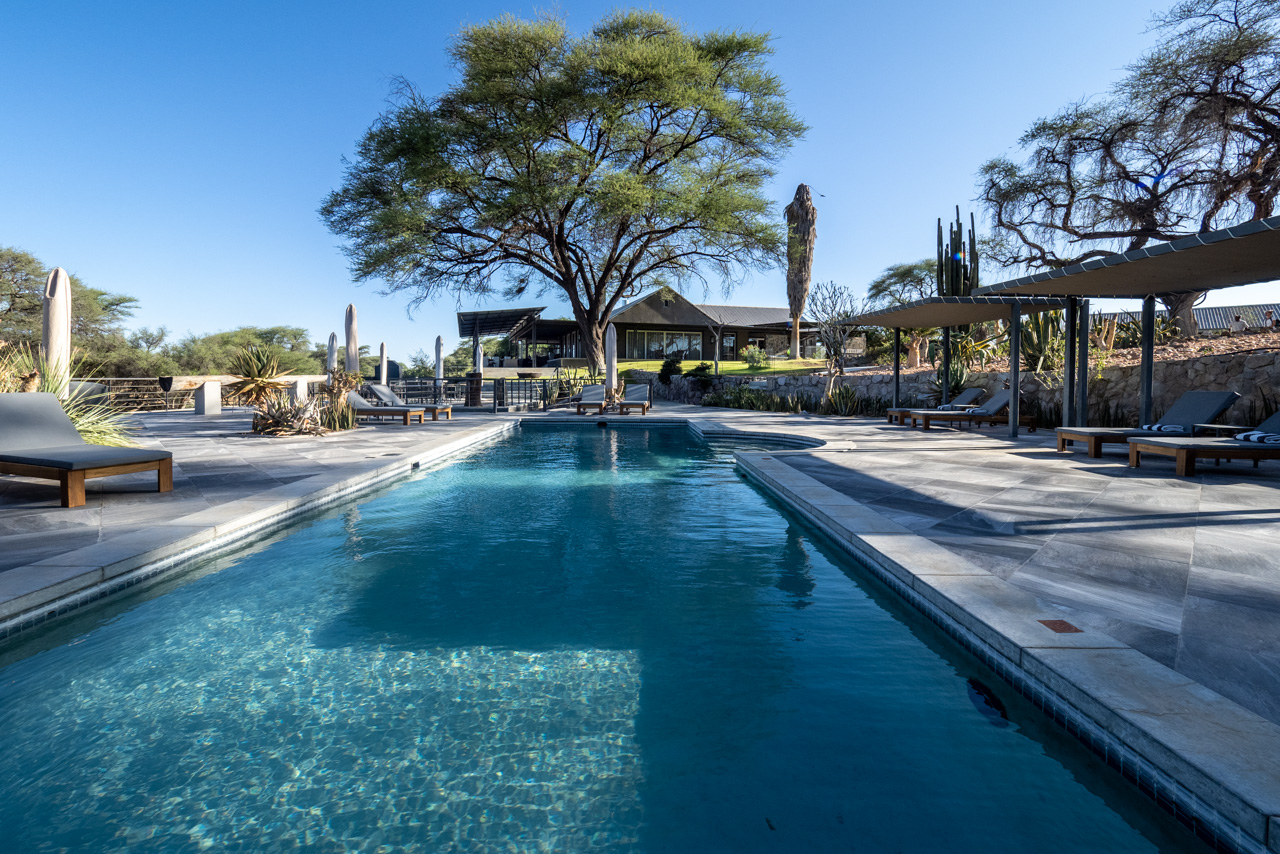
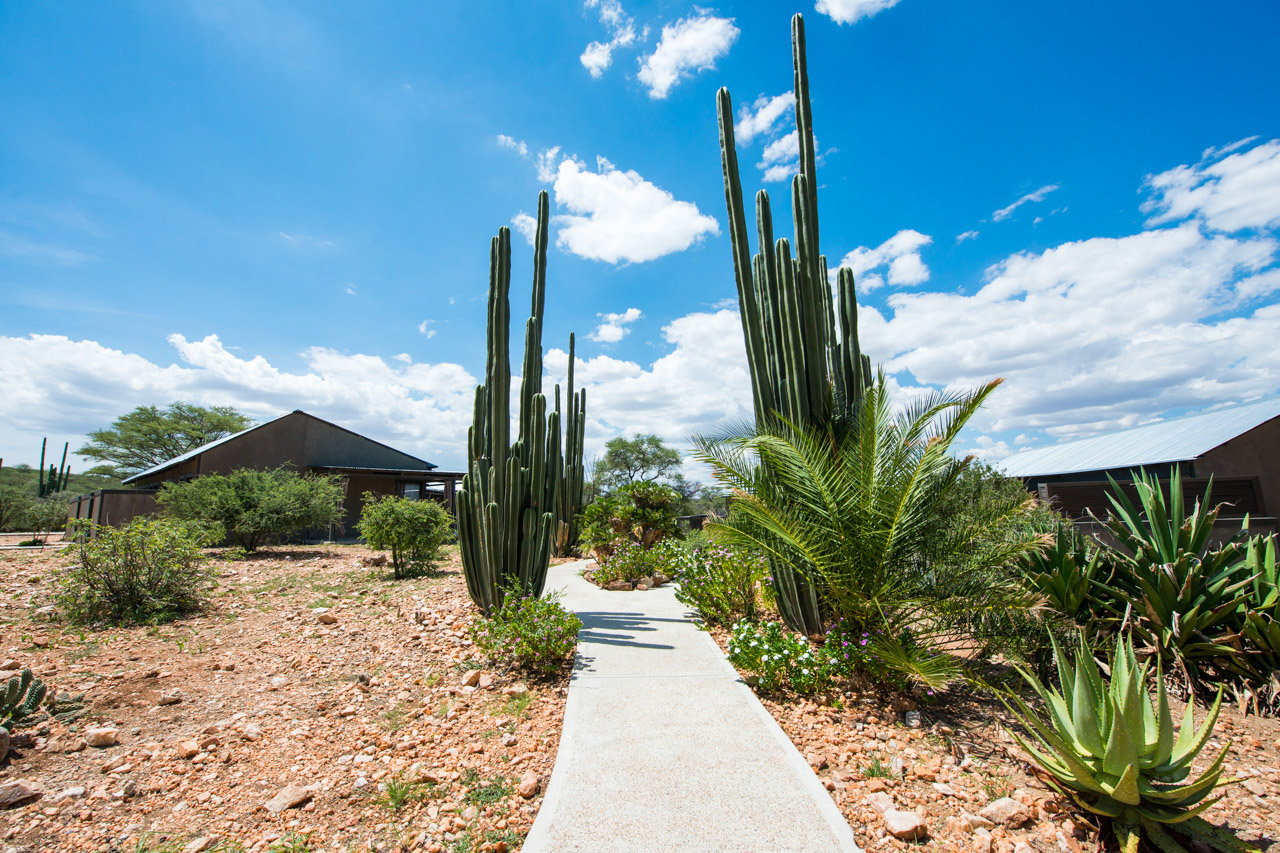
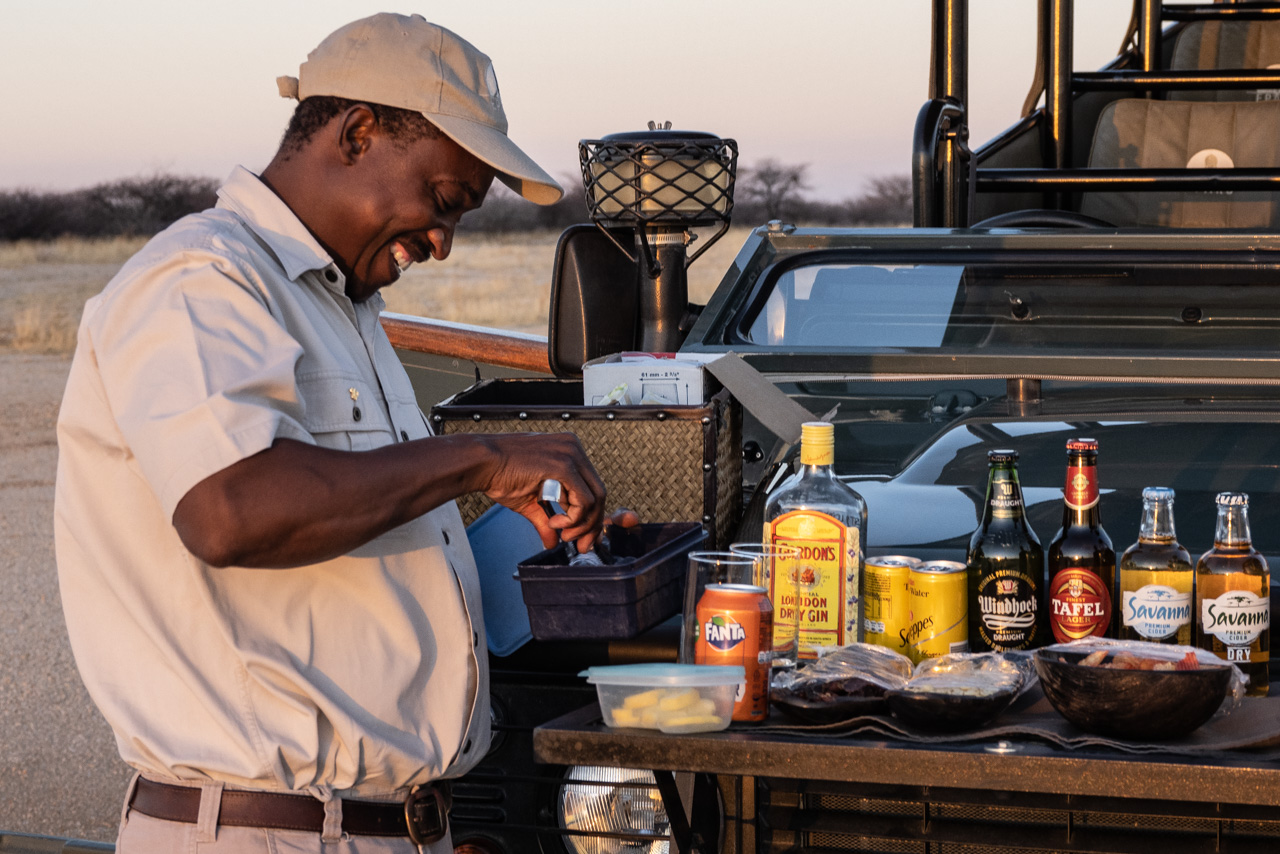
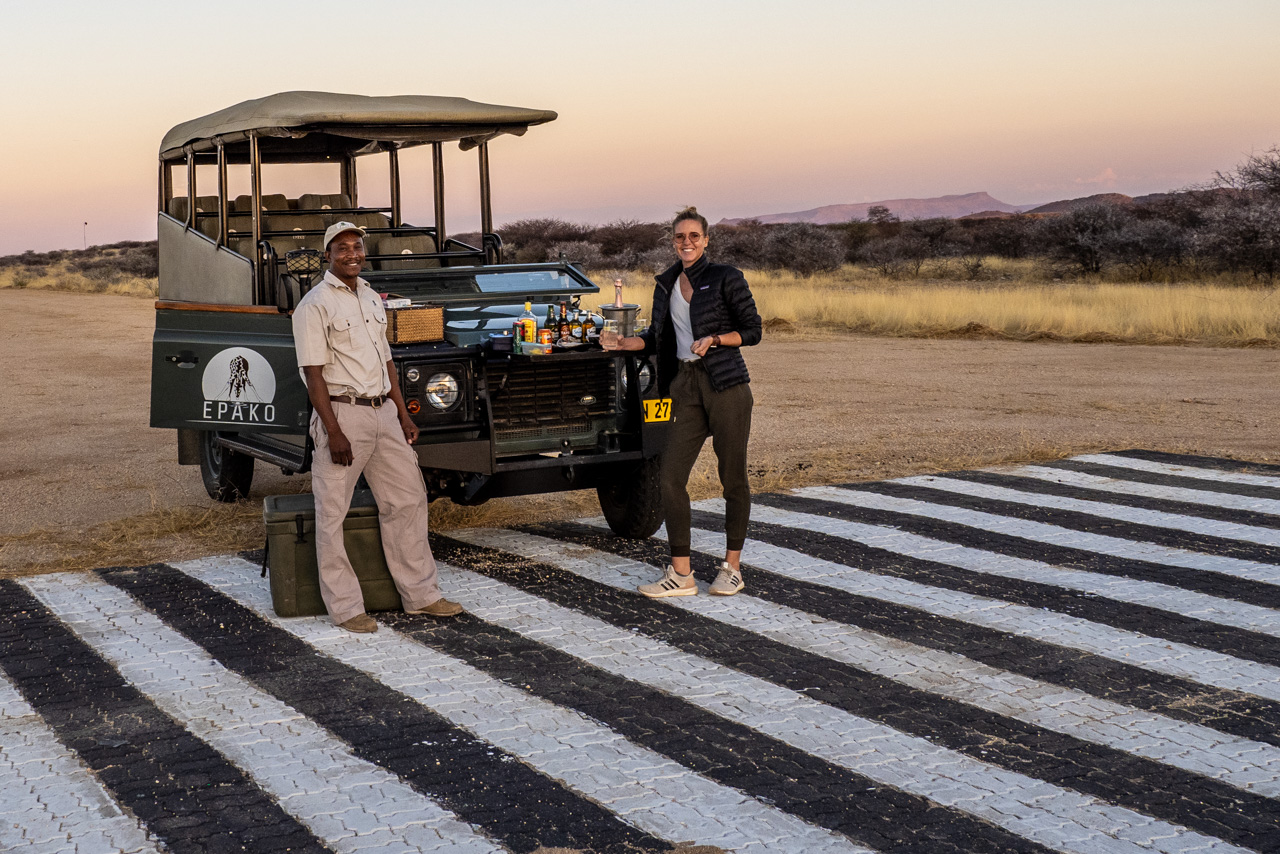
Accommodation
Epako offers ten rooms and accommodates a maximum of 20 guests. Set within a breathtaking 11,000 hectare private reserve which is only accessible to Epako guests, your stay at Epako will be a very private experience. The lodge was built directly on the bank of the dry riverbed of the Epako and has a slightly elevated position with a view of the riverbed and the waterhole opposite.
Epako is an elegant lodge with attentive and friendly service and we enjoyed excellent food on several visits. The ten very stylish rooms are spread over two buildings and include six deluxe rooms, two junior suites and two suites. The two buildings are based on the design of traditional farmhouses and have a large balcony leading around the house.
All rooms have en-suite bathrooms and a terrace with deck chairs. The Junior Suites also have a bathtub, outdoor shower and lounge. The Waterhole Suite and the River Suite (150m2 each) are about twice the size and have a private dining table for those guests who like to stay among themselves. The Waterhole Suite offers views and direct access to the pool and is ideal for families in combination with a Deluxe Room. The River Suite offers the greatest privacy and views of the river bend. Most of the rooms can be connected to larger units via double soundproof doors.
Wifi is available in all rooms and in the main building.
The restaurant offers local and international dishes and a good selection of wines. In the evening guests often prefer to sit outside on the large terrace and watch the illuminated waterhole while eating. If you wish, you may start the evening by the open fire with a drink. Epako also has a very impressive large pool with deckchairs and a separate spa.
The private reserve has a size of 11,000 hectares, an area larger than Paris. The dry riverbed and the large ana trees remind us of Mana Pools or the Lower Zambezi National Park. The forests are still intact and beautiful thanks to the absence of elephants.
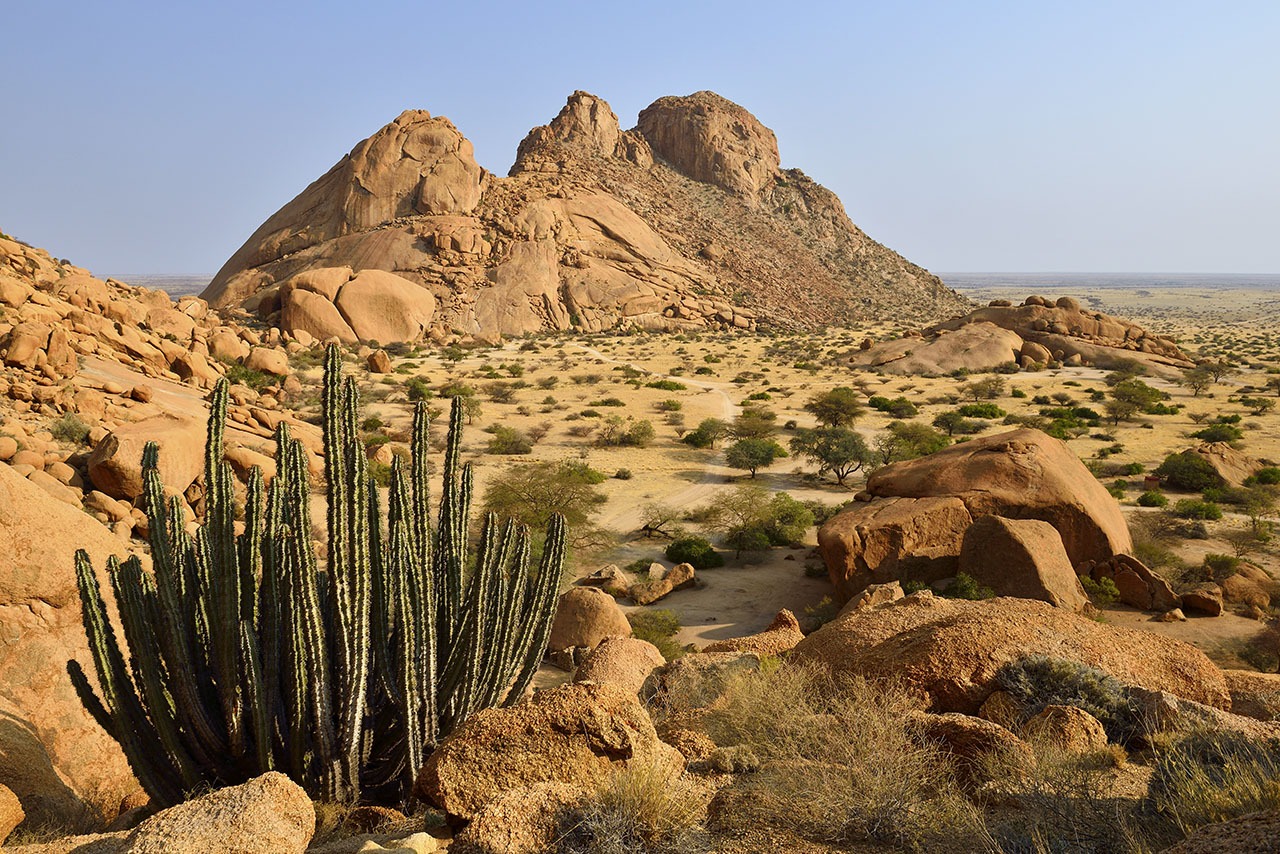
Several sites of cultural interest can be found nearby, including rock paintings. It is also a great place for trekking and rock climbing. The nearby town of Omaruru is exceptionally well-kept and offers some interesting shops.

Basic Information
Individual journey. The journey will be planned on your preferred dates.
Duration 19 nights. Min 2, max 6 guests. Minimum age 12 years. Weight limit of luggage 20 kg.
Includes all transfers from Swakopmund to the hotels/camps to Twyfelfontein
- Little Kulala: Standard Room. All meals, drinks (except premier brands), laundry service, twice daily shared activities with one of the camp guides. Includes guided excursion to the Sossusvlei dunes and balloon flight.
- Strand Hotel: Luxury Room. Breakfast.
- Damaraland Camp: Standard Room. Dinner, breakfast. Activities with your private guide / vehicle.
- Shipwreck Lodge: Standard Room. All meals, drinks (except premier brands), laundry service, twice daily shared activities with one of the camp guides.
- Okahirongo Elephant Lodge: Standard Room. All meals, drinks (except premier brands), twice daily shared activities with one of the camp guides. Activities with your private guide / vehicle.
- Hoanib Valley Camp: Standard Room. All meals, drinks (except premier brands). Activities with your private guide / vehicle.
- Ongava Lodge: Standard Room. All meals. Game Drives on your own or bookable at the lodge.
- Onguma Tented Camp: Standard Room. All meals, drinks (except premier brands), laundry service, twice daily shared activities with one of the camp guides.
- Epako Safari Lodge: Deluxe Room. All meals, drinks (except premier brands), twice daily shared activities with one of the camp guides.
Learn more about these areas













